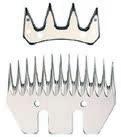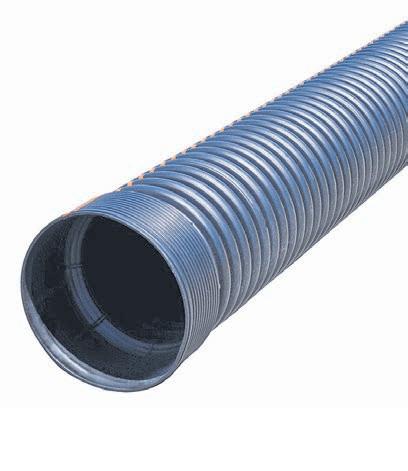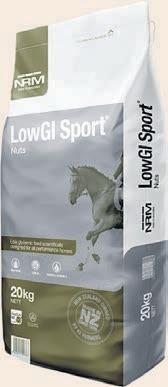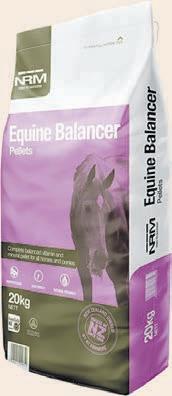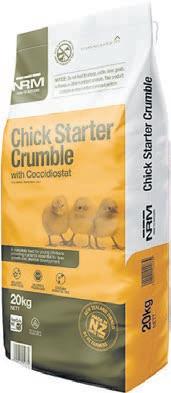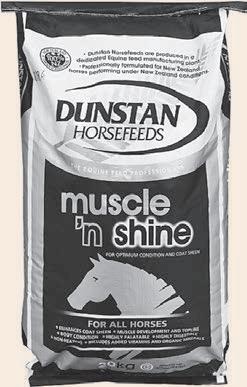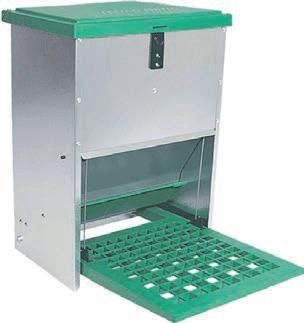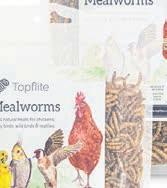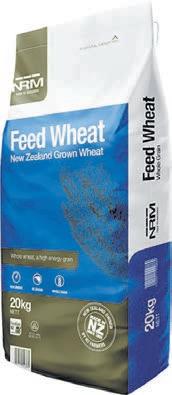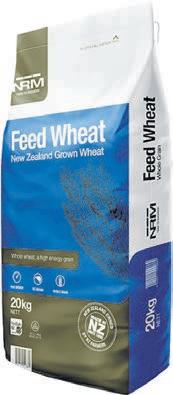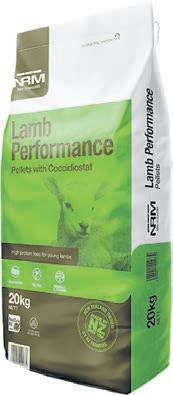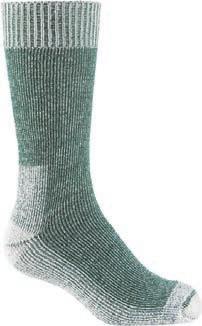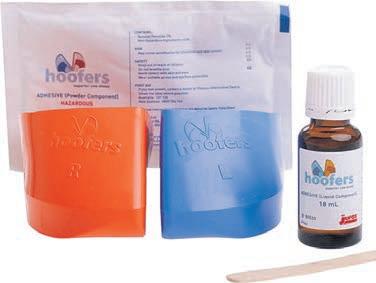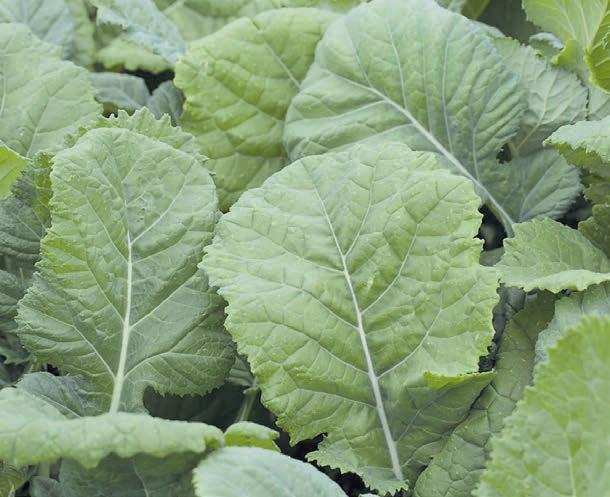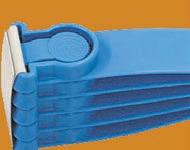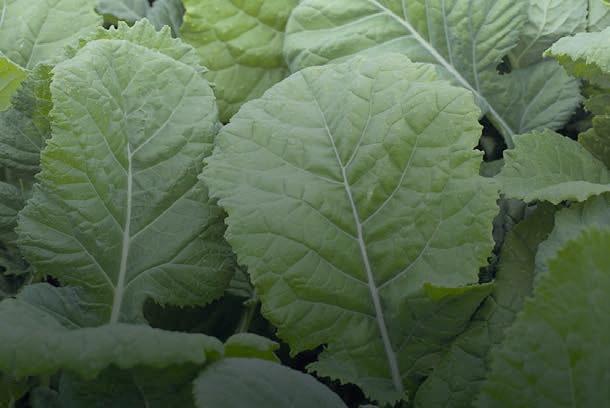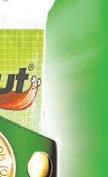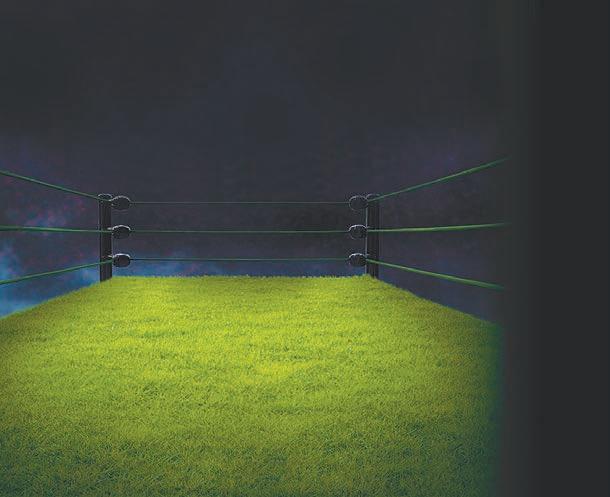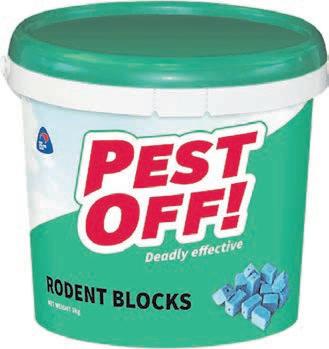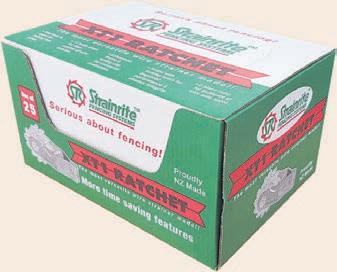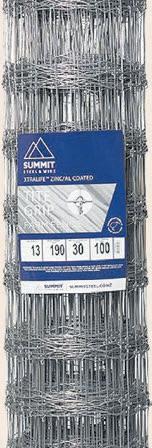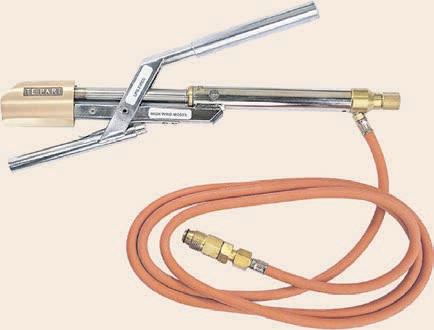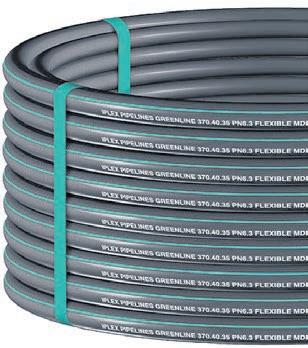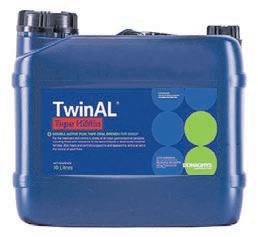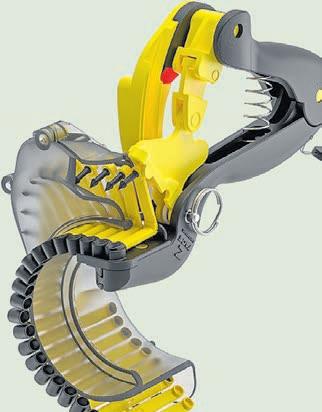




When it come s to good grow th on the farm, it isn’ t just abou t the fer tiliser you use ; it ’s abou t how it get s used. To ensure max imum produc tivit y, e ver y granule needs to count .






When it come s to good grow th on the farm, it isn’ t just abou t the fer tiliser you use ; it ’s abou t how it get s used. To ensure max imum produc tivit y, e ver y granule needs to count .

Richard Rennie NEWS Food and fibre
THE loss of several specialty cheesemakers in the past few years has sounded alarms in the sector and underscored concerns that New Zealand’s food landscape risks being dominated by fewer, larger food and house brands.
October is New Zealand cheese month, with the New Zealand Specialty Cheesemakers’ Association (NZSCA) working to raise awareness about the variety of cheeses available from artisan producers.
It is becoming increasingly expensive to be small in this industry.
Simon Lamb Cranky Goat
However, NZSCA chair Simon Lamb of the Cranky Goat cheese company in Marlborough said the sector has lost a number of quality artisan producers in recent years.
“Over the last two years we would have lost about six companies. It is becoming increasingly expensive to be small in this industry.”
Those companies that have closed include Grinning Gecko cheese company in Whangārei, which shut last year, and Kaikoura
Cheese. The high-profile Kaimai Cheese Company at Waharoa in Waikato had to close its doors post covid, having invested $20 million in restoring an old cheese factory site.
“The problem is who is not coming into the industry. These guys are leaving, but no one new is coming in to replace them,” said Lamb.
Last month high-profile boutique Wellington company Zany Zeus went into receivership, the second time after the company’s assets were purchased from an earlier receivership, in late 2019.
Lamb said while compliance costs are one issue hitting producers, it is more about producers needing more diverse market channels in a country dominated by large supermarket outlets.
“You can be a small producer, doing farmers markets, direct sales and maybe a couple of outlets. Then, do you go larger? There is a risk you go big, but not big enough.”
He said tough economic times are limiting households’ shopping lists, while freight costs on a chilled product like cheese have increased “astronomically”.
“So, you have artisan cheese makers promoting their cheeses well in their region, but they really struggle to get to a national level.”
Continued page 5
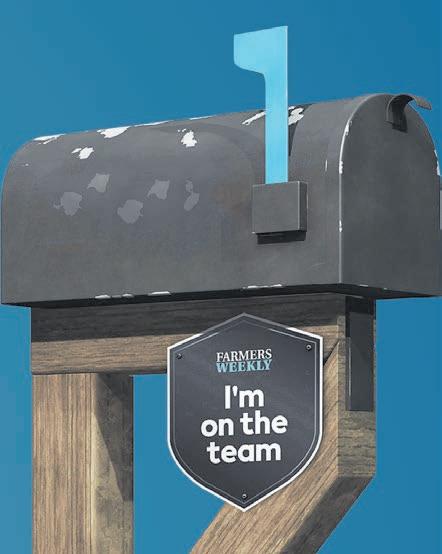
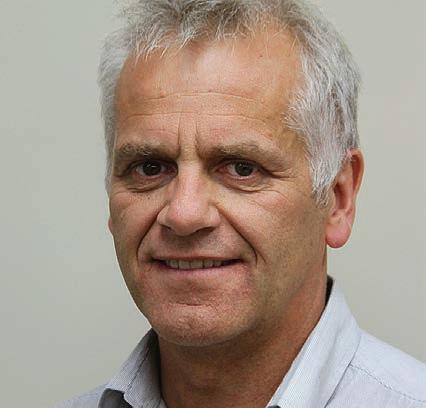
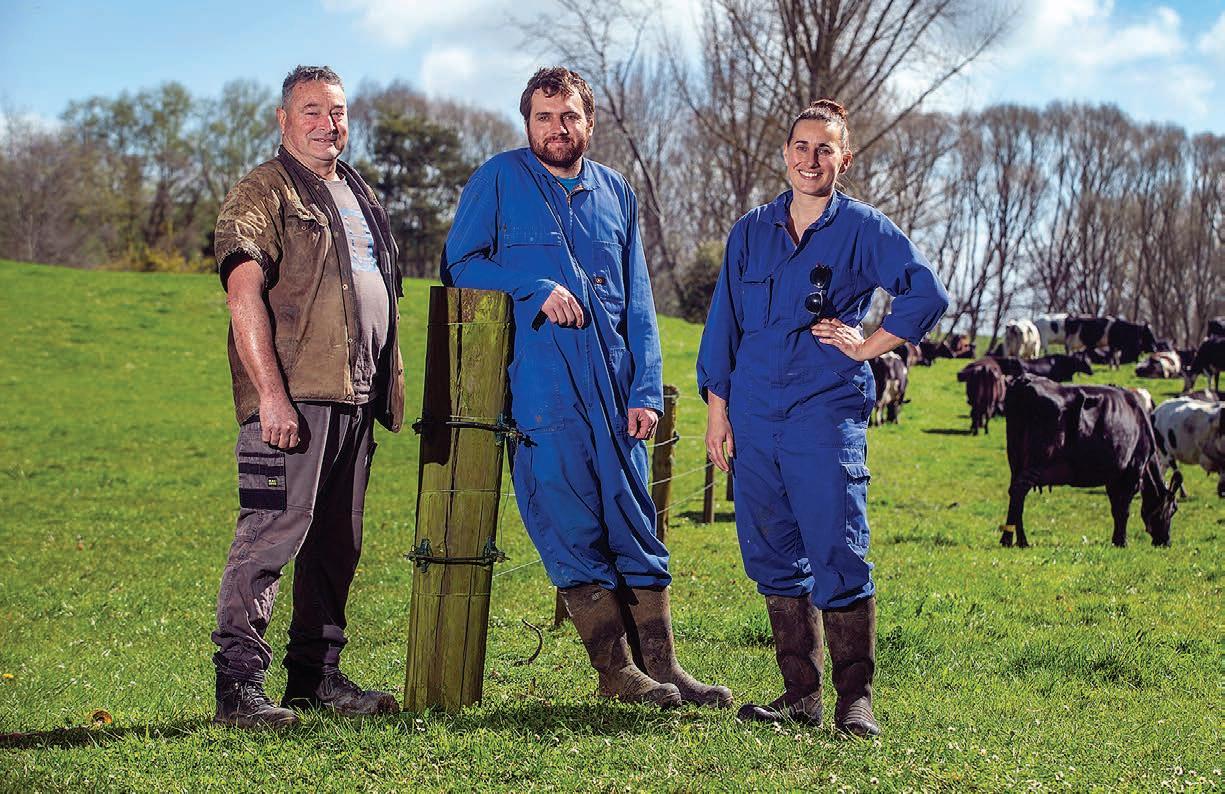
Dung beetles are leading the way as Brett, Tim and Linda Coubrough’s 116-year-old family farm pools its scientific and professional expertise to find a better way to look after the land.
DAIRY 24-34

Rapid antigen test to speed up facial eczema detection moves a step closer.
NEWS 5
Farmers and scientists are using the latest technology to measure how efficiently beef cattle convert feed into liveweight, as well as their greenhouse gas emissions.
TECHNOLOGY 16
Pukeatua farmer Graeme Gleeson’s sector commitment earns BLNZ award.
NEWS 6
Beyond AI, farmer Phil Weir revels in the simple pleasure of shifting stock.
OPINION 23



I’ve been in publishing since the 1990s, and I’m a fourth-generation farmer (albeit my farm these days is only 45ha – my liability block). When I started my career, in 1995, Hugh Stringleman was my boss, faxes prevailed, emailing was new, cell phones were something a few stock agents had, websites were becoming a thing, and Facebook was nearly 10 years away.
Farming has changed too.
To succeed in times of change takes a bit of courage, good support from your team and family, and some luck My parents are still around (96 and 93 years old) My father was one of the industry ‘disruptors’ and early adopters of easy-care sheep back in his day. I recall us all sitting down one Saturday night to watch him being featured (in black and white) on Country Calendar. Fresh off my first shearing course, my first full day shearing was on our big easy-care, open-faced Coopworths I managed a tally of 60, breaking three combs on the way.
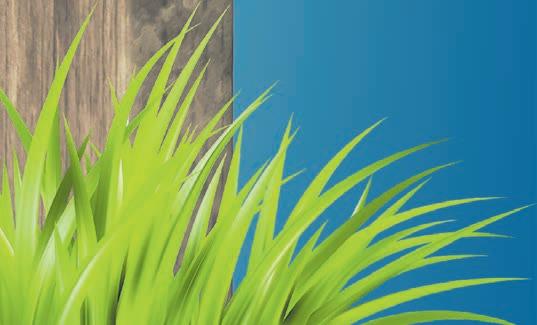

So, change is a constant. 2024 has been no different for us here at Farmers Weekly, and I have no doubt 2025 will throw us more surprises. It’s time for more change – we’re innovating again This time our team has to grow, and we want you on it
We launched Farmers Weekly over 20 years ago, and since then it has been a constant: every week, plenty of variety, a big team of experienced journalists, and we even still have a full-time subeditor.
Recently, however, print-flation has been as brutal as farm-flation Advertising revenues have dropped significantly and they don’t look like they’re coming back.
We have two options: build a new revenue stream, or cut content. Going down the path of sponsored content, advertorial, endless scrolls, running sensationalised content to maximise engagement – none of those appeal to this oldschool publisher.
We’re also not interested in a website pay wall – it’s important every farmer and food & fibre sector stakeholder in the country has access
to their news. Agriculture matters that much to us all.
We’re asking you, our readers, to join us. We’re doing what a lot of media are doing these days, and asking our community to support our quality journalism





EDITORIAL
Bryan Gibson | 06 323 1519
Managing Editor
bryan.gibson@agrihq.co.nz
Craig Page | 03 470 2469
Deputy Editor craig.page@agrihq.co.nz
Claire Robertson
Sub-Editor claire.robertson@agrihq.co.nz
Neal Wallace | 03 474 9240
Journalist neal.wallace@agrihq.co.nz
Gerald Piddock | 027 486 8346
Journalist gerald.piddock@agrihq.co.nz
Annette Scott | 021 908 400 Journalist annette.scott@agrihq.co.nz
Hugh Stringleman | 027 474 4003
Journalist hugh.stringleman@agrihq.co.nz
Richard Rennie | 027 475 4256
Journalist richard.rennie@agrihq.co.nz
Nigel Stirling | 021 136 5570
Journalist nigel.g.stirling@gmail.com
PRODUCTION
Lana Kieselbach | 027 739 4295 production@agrihq.co.nz
ADVERTISING MATERIAL
Supply to: adcopy@agrihq.co.nz
SUBSCRIPTIONS
0800 85 25 80 subs@agrihq.co.nz
PRINTER
Printed by NZME Delivered by Reach Media Ltd
Andy Whitson | 027 626 2269
Sales & Marketing Manager andy.whitson@agrihq.co.nz
Janine Aish | 027 777 2557
Auckland/Northland Partnership Manager janine.aish@agrihq.co.nz
Jody Anderson | 027 474 6094
Waikato/Bay of Plenty Partnership Manager jody.anderson@agrihq.co.nz
Palak Arora | 027 474 6095
Lower North Island Partnership Manager palak.arora@agrihq.co.nz
Omid Rafyee | 027 474 6091
South Island Partnership Manager omid.rafyee@agrihq.co.nz
Julie Gibson | 06 323 0765
Marketplace Partnership Manager classifieds@agrihq.co.nz
Andrea Mansfield | 027 602 4925
National Livestock Manager livestock@agrihq.co.nz
Real Estate | 0800 85 25 80 realestate@agrihq.co.nz
Word Only Advertising | 0800 85 25 80 Marketplace wordads@agrihq.co.nz
Dean and Cushla Williamson Phone: 027 323 9407 dean.williamson@agrihq.co.nz cushla.williamson@agrihq.co.nz
Farmers Weekly is Published by AgriHQ PO Box 529, Feilding 4740, New Zealand Phone: 0800 85 25 80 Website: www.farmersweekly.co.nz
ISSN 2463-6002 (Print) ISSN 2463-6010 (Online)
51-52
52-53
54-57
58
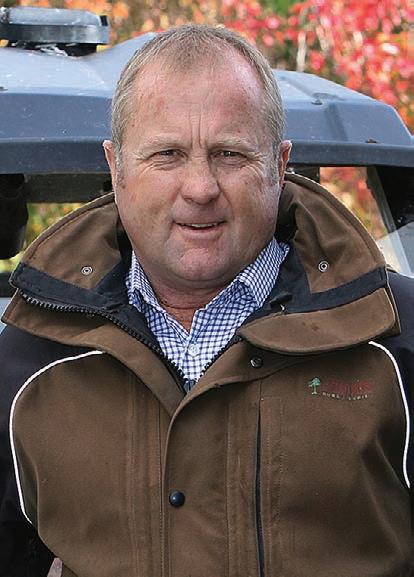
NOT RUATANIWHA 2.0: Tukituki water security project spokesperson Mike Petersen says the fast-tracked proposal is driven by community demand and needs, rather than dam supply and structure.
P12
No Fonterra farmer-shareholders have chosen to go through the non-assessment process for this year’s Fonterra directors’ election.
There are two independently assessed candidates standing for two places on the board in 2024 – incumbent directors Peter McBride and John Nicholls. As an uncontested director election, candidates must gain more than 50% support of votes cast to remain on the board.
Brett O’Riley has been confirmed as the final appointee to the refreshed Environmental Protection Authority board. O’Riley is currently executive chair of Manawaroa Education and a member of the APEC Business Advisory Council. He also serves as managing partner of GSD Corporation and is an adviser at Tata Consultancy Services.
New Zealand’s country of origin beef and lamb marketing programme, Taste Pure Nature, has moved to a new phase with Beef + Lamb NZ handing the reins to red meat processors and exporters.
In April it was announced exporters would assume responsibility for advancing the Taste Pure Nature brand and activity programme. The next phase of the campaign will be launched at the influential China International Import Expo in Shanghai in November.
There have been a record number of applications for this year’s Growing Future Farmers programme.
GFF chief executive Wendy Paul said 131 people have applied, significantly outstripping the projection of 80 placements for the 2025 programme intake. The large jump in applications is put down to more young people being clear about where they want to put their energy as they focus on their future career pathway.
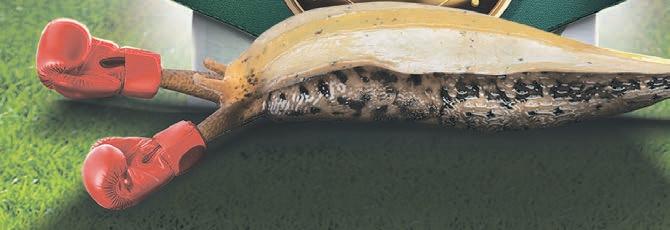



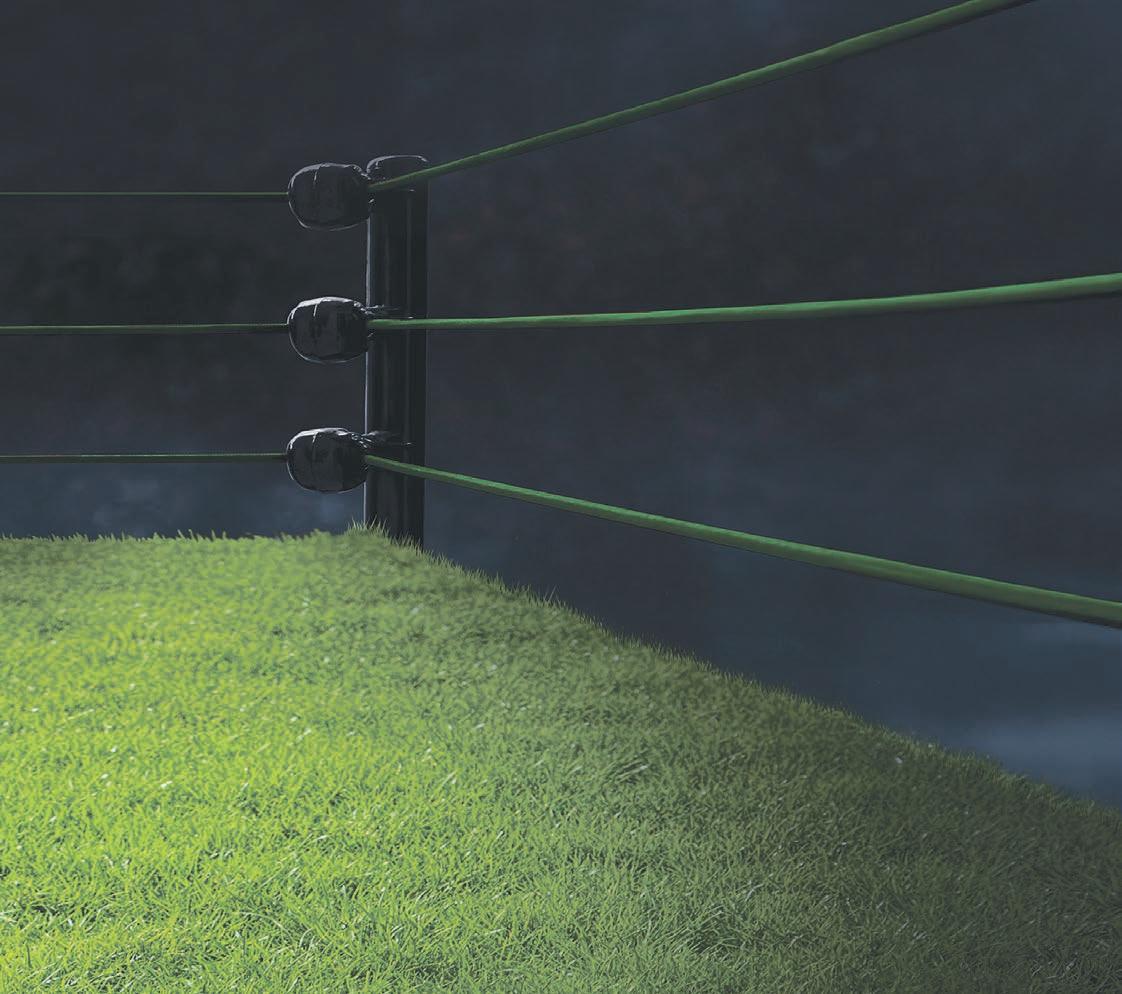



Gerald Piddock TECHNOLOGY Animal health
RESEARCH into a rapid antigen test to speed up facial eczema detection on farm animals has taken a step forward with scientists discovering a reliable test indicator for the disease.
The work by Tokaora Diagnostics means they can now take the next step, which is incorporating that indicator into an RAT test and a prototype.
The family-owned research company is headed by chief researcher Frey Livingston and his mother Pam, who is the managing director.
“It really is one of the biggest breakthroughs with facial eczema for many years,” Pam said.
The Livingstons wrapped up the research in late September and have submitted their report to the Ministry for Primary Industries. This stage of the research was possible through $35,000 in funding from the
MPI’s Sustainable Food and Fibre Futures fund. AGMARDT also provided significant funding.
The next stage is to send the research to a company in the United Kingdom that will take their work and incorporate it into a RAT test format, Pam said.
In the meantime, she said, they are looking at funding options for the next stage of development.
We can do better than guessing now.
Frey Livingston Tokaora Diagnostics
Frey said the test will take a closer look at what is occurring in the blood of an animal infected with facial eczema (FE).
“Currently, there isn’t a known biomarker that could be integrated into a RAT test. You can test for FE but that test can’t be easily done on the farm,” he said.
Over the past 18 months the pair took samples from FE-
infected and non-FE-infected blood from a couple of different herds across the North Island. The blood’s biochemistry was then studied to establish what set the FE-infected blood apart from the non-FE-infected samples.
It was from these tests that they were able to find the indicator, he said.
While the testing so far has been restricted to cattle, Frey said there is no reason it would not work on sheep as well.
Ultimately, they hope the discovery will lead to an onfarm RAT test farmers or vets can easily administer and that will let the farmer know within minutes if the animal is infected or not.
“We’re really excited because one of the things we have found when talking to farmers is the inconvenience and cost of testing for FE means that they’ll rather guess.
“We can do better than guessing now and it’s not the farmers’ fault for not having the time or money to do it – we wanted to make it faster and cheaper.”
He said there is a real risk overseas cheeses will come to dominate retail outlets, given they are now often the byproduct of whey production so therefore cheaper to produce and ship here.
“Whereas for local cheese producers, just to get the milk to the point we do anything with it is $22/kg.”
Danish produced Castello cheese from dairy giant Arla has claimed the spot as this country’s No 1-selling specialty cheese.
Lamb’s concerns are echoed by Angela Clifford, CEO of smallscale food producers’ collective Eat New Zealand.
She pointed to grains, pork and cheese as all sectors facing a deluge of imported products, limiting brands and small producers’ ability to compete.
“For something like grains, it is an even bigger issue.
“If we do not support NZ sourced grain it will have an impact upon our breeding programmes, and we are a source of some of the highest quality grains in the world.”
She cited it as almost impossible to purchase genuinely NZ-grown pork at retail now. Like cheeses, retail chillers now often feature NZ-packaged and branded items that have imported product within them.
Fonterra’s Mainland brand
feta, for example, is sourced in Denmark.
Small to medium food processors are innovative incubators that need to be encouraged in order to grow, she said.
“What is the future for our food and farmers if the only option is for commodity-type, single source buyers, dominated by supermarkets?
“There is no platform or support for small to medium food businesses in NZ.”
As an organisation, Eat New Zealand has been calling for a national food strategy.
“We have a food and grocery commission, but not a food commission.”


PUKEATUA farmer Graeme
Gleeson’s exceptional commitment to the region’s farming industry has been recognised with the Regional Leadership Award at the Beef + Lamb New Zealand Awards.
Gleeson received the award for his exceptional commitment to the region’s farming industry through his farmer advocacy and involvement in industry-good activities.
Gleeson has been particularly focused on helping farmers remain productive and profitable while understanding and mitigating their environmental impacts. As a farmer advocate and leading campaigner for the group Farmers for Positive Change, he worked to ensure regional and national government policies are fair, equitable and based on science.
Gleeson was one of eight winners announced at a dinner event at the Claudelands Events Centre in Hamilton on October 10 with around 300 people in attendance.
The Alliance Significant Contribution Award was won by Plant & Food Research scientist Ian McIvor.
The judges said that McIvor’s science and research had contributed to farm production and resilience, particularly in the sheep and beef sector.
This has been through his extensive work around the use of poplar and willow trees for soil stabilisation and erosion control on New Zealand hill country.
As one of the founders of soil conservation work in New Zealand, his work had touched sheep and beef farming operations throughout the country, yet many farmers were unaware of the man behind the science.
The Ballance Agri-Nutrients Science and Research Award was won by AgResearch plant scientist Dr David Hume.
Hume was instrumental in the development and commercialisation of the novel endophyte AR37. It has been estimated that AR37 has contributed $3.6 billion to the New Zealand economy over a 20-year period.
The Datamars Livestock
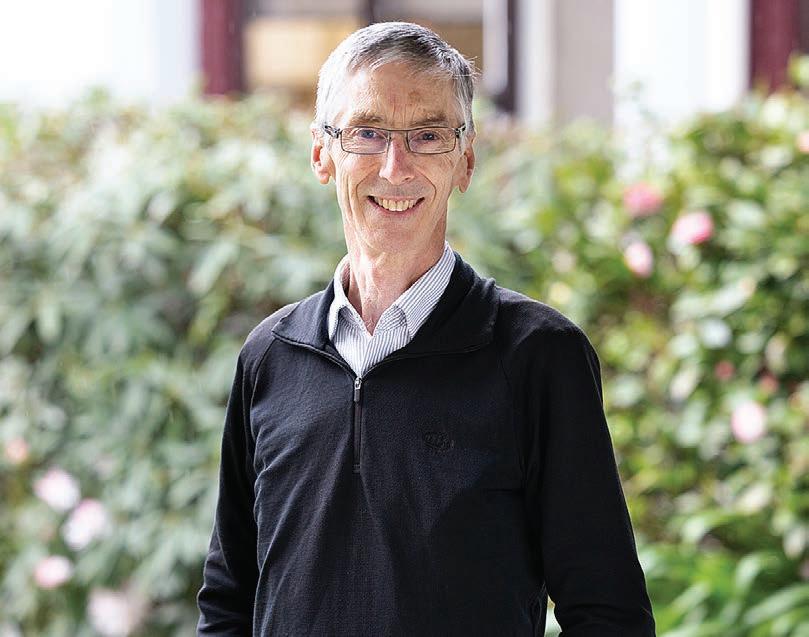
Technology Award was won by FarmIQ Freshwater Farm Plan Tool, which the judges described as being a great asset to the toolbox.
The Gallagher Innovative Farming Award was won by Wairarapa-based Fernglen Farm. The Ravenwood family, who own Fernglen Farm, have incorporated

Neal Wallace NEWS Environment
SOUTHLAND Federated Farmers is calling on farmers to deny fishermen access across their land and to boycott Fish & Game Southland following their support of court action that could adversely impact the province’s farmers.
Southland Fish & Game was party to a case against Environment Southland that went to the Court of Appeal and which related to whether the proposed Southland Water and Land Plan treated incidental discharges such as animal urine as a permitted activity.
The Court of Appeal found against Environment Southland and it could now potentially require 3000 Southland livestock farmers to get resource consent for incidental discharges.
Jason Herrick, the federation’s Southland president, said by being party to the court action along with Forest & Bird, Southland Fish & Game has eroded any remaining goodwill with farmers.
“We’re now calling for local farmers to join us in boycotting fishing licences, and to remove fishing access by taking down access signs.
“Farmers can replace those signs with an orange ribbon to show their frustration with Fish & Game, and anyone else who wants
to show their support could do that by attaching an orange ribbon to their roadside gate as well.”
Zane Moss, the manager of Southland Fish & Game, said the move is disappointing and Herrick’s comments do not reflect the organisation’s experiences of working with farmers.
Herrick said he is not advocating the destroying of access signs and suggests landowners return them to Southland Fish & Game.
He said this is another example of what he describes as “persistent, belligerent anti-farming rhetoric” by the fishing body that includes opposition to flood control measures such as gravel management in Southland rivers and managing the Waituna lagoon.
a 1300-strong milking ewe herd into their sheep and beef operation and in doing so, have enabled all members of the family to be part of the business.
The Silver Fern Farms Market Leader Award was won by Headwaters. The judges described Headwaters as being a fine
example of farmers working together to add value by improving their product. This has been done through the incorporation of genetics, feeding, finishing and processor input.
AgResearch Emerging Achiever Award was won by Te Kuiti farmer Mitchel Hoare, who the judges’ said was actively working towards farm ownership with many irons in the fire to make it happen.
The Rabobank People and Development Award was won by Growing Future Farmers. The judges said Growing Future Farmers was a well-structured programme that had grown significantly and was turning out great cadets. It offered both on- and off-farm development opportunities for cadets.
The FMG Rural Champion Award was won by the New Zealand Farm Environment Trust.
The judges said that through its long-running flagship event, the Ballance Farm Environment Awards, the New Zealand Farm Environment Trust provided a platform from which farmers could tell their story to a wide audience.
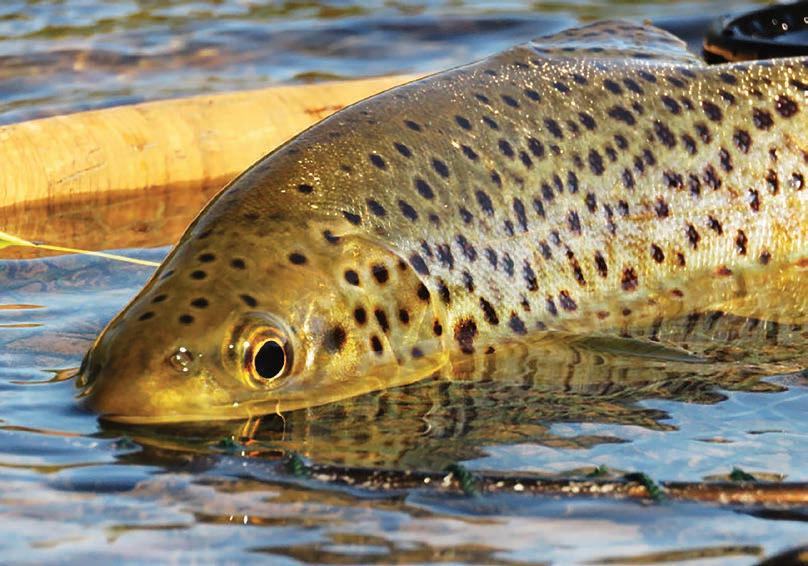
Moss said the court heard evidence, including from Federated Farmers, and concluded Southland rivers were significantly degraded by diffuse discharges.
He said Environment Southland should put effective rules in place around the riskiest practices, so that not all farmers are required to seek consents.
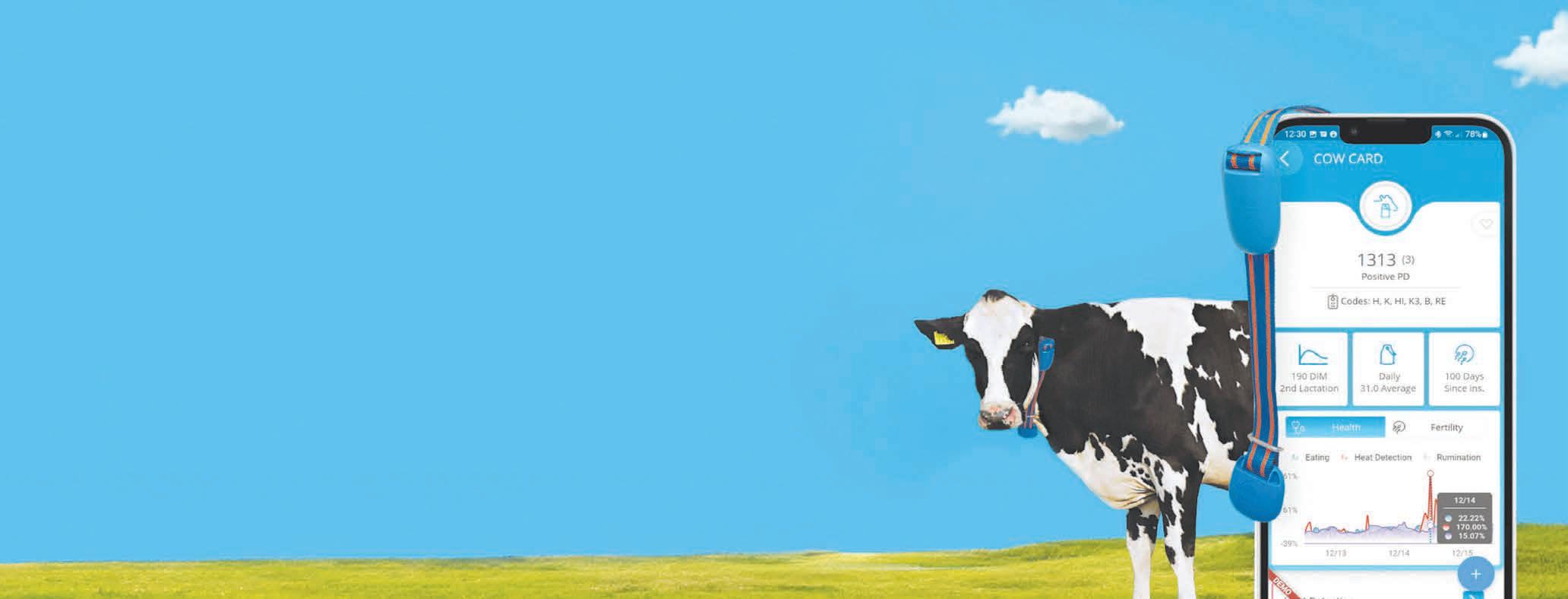

THE speed at which the world is changing makes it more crucial than ever that New Zealand farmers have an eye on international market trends.
Having spent six weeks visiting our key dairy and red meat markets, the speed at which the world is changing underpins all my observations, and that pace will only accelerate.
My other key observations are that our biggest customers expect their suppliers to meet their sustainability aspirations; markets in the United Kingdom and Europe are being influenced by discounting supermarket chains; lamb is very expensive; and the world wants dairy protein.
Our single largest and most important customers, McDonald’s, Nestlé and Mars Wrigley, want their suppliers to show continuous reductions in greenhouse gas
emissions, less of an impact on soil and water, and adherence to the highest animal welfare standards.
It was a surprise to learn McDonald’s is sourcing beef in the Amazon biome, but farmers there see value in meeting the company’s stringent supply requirements.
The quality of New Zealand dairy and meat is considered unrivalled and our customers acknowledge farmers have done the hard work meeting high sustainability standards.
Now they want data and evidence to show farmers are progressively reducing those impacts, and they are putting their chequebook where their mouths are, helping farmers make structural changes and investing in research.
This will require trust and confidence in the data provided by farmers and processors, which could see a shift in supply arrangements from transactional to a partnership or something more intimate.

7 COUNTRIES IN 6 WEEKS
Achieving this makes it imperative that central and local government and industry bodies create a simple, easy-touse reporting system for farmers that meets the environmental, regulatory and supply requirements of all parties.
Dairy is enjoying a purple patch as a health-conscious world seeks greater volumes of fortified protein, but consumers want assurances that what is good for their health is also good for the planet.
In China, Fonterra appears to have avoided the worst of the economic slowdown by finding receptive markets in some of that country’s 350,000 bakeries.
The world wants NZ lamb but it is expensive. It struggles for supermarket cabinet space and to be noticed in what is a crowded meat protein space.
Meat companies are developing new products, new markets and new supply routes, but they have to achieve this without making an already expensive protein even more so.
Younger generations need to be educated about the pleasures of eating lamb as the traditional Sunday roast disappears as older generations die off.
Exports of grass-fed beef into newly accessed markets in Europe and the United Kingdom have found a receptive market.
Food security is becoming a
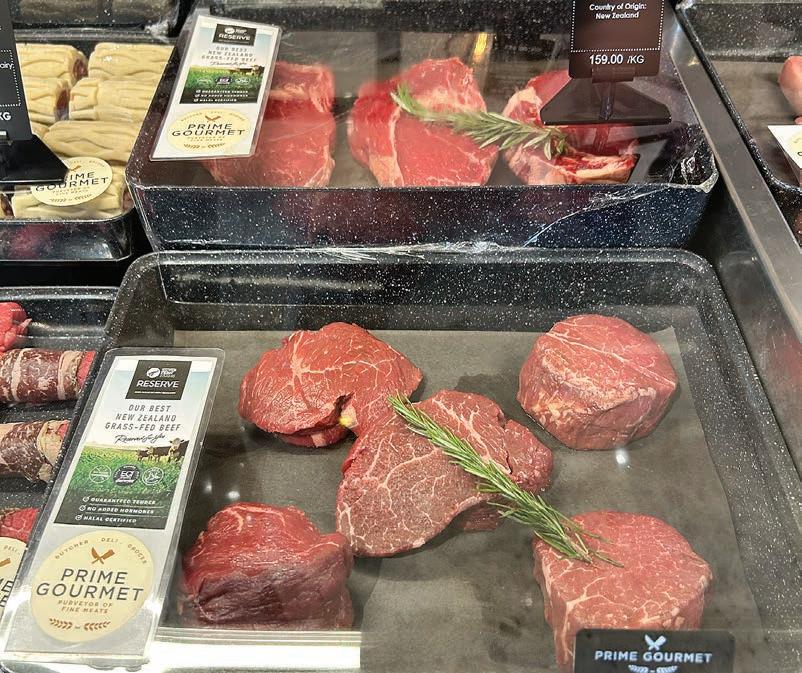
EXPOSURE: Silver Fern Farms-branded beef in a Prime Gourmet food store Dubai. Getting exposure for NZ-branded meat in overseas markets is a challenge.
priority for many governments but so is environmental protection, especially in Europe with its Green Deal policies.
Some commentators believe new European Union environmental regulations could mean a 15% reduction in cow numbers, potentially creating opportunities for NZ meat and dairy exporters.
They want data and evidence to show farmers are progressively reducing those impacts.
There is a view that environmental regulation is at the expense of technology, a route that has seen Europe in 75 years become largely self-sufficient in food.
Trade is being disrupted by the growth of nationalism, food security and trade politics between China and Europe and China and the United States.
It means the days of a rulesbased trading system that enabled multi-nation free trade agreements are over, but gains are still possible from reducing nontariff barriers.
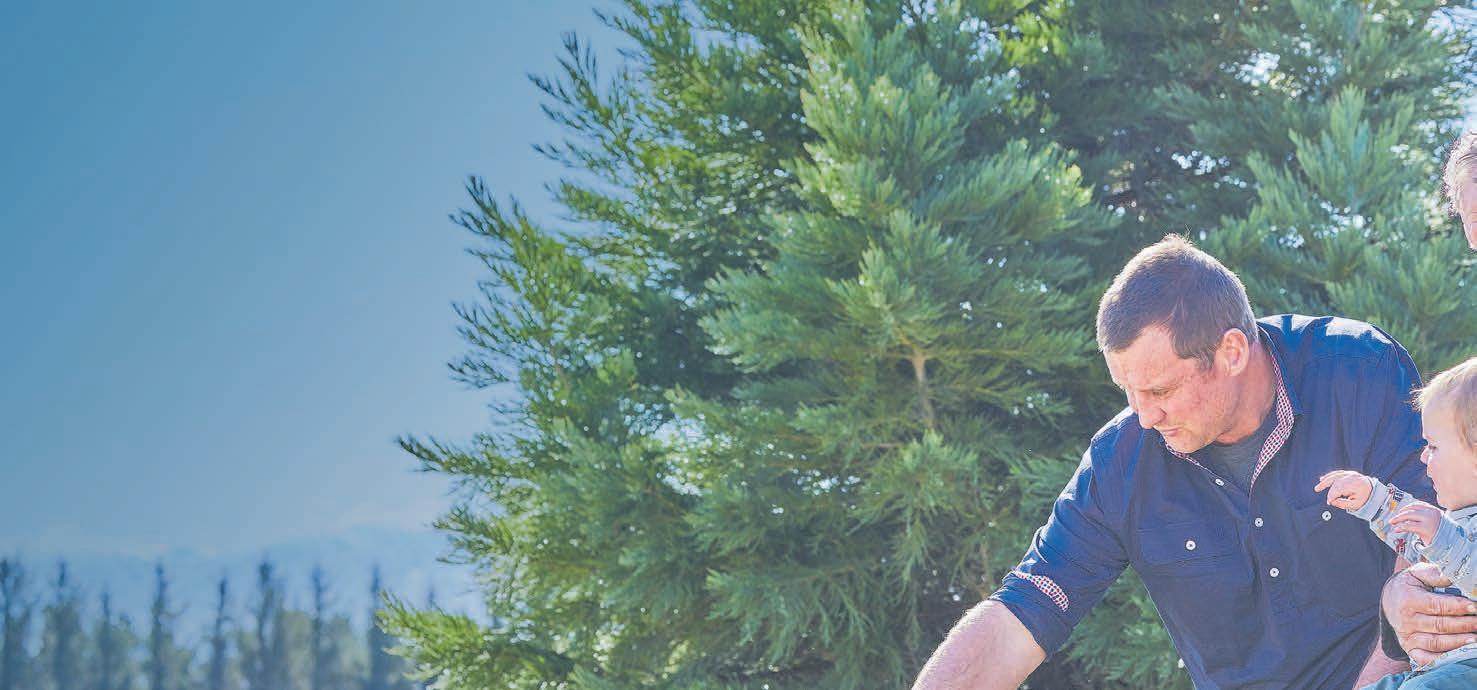


China is struggling to switch from an export-led to a consumption- and services-based economy and is sluggish as uncertain consumers save their money instead of spending.
China’s ageing population offers a spectacular opportunity, a potential market estimated to be worth $8 trillion as older people seek the health attributes of protein.
There is plenty of uncertainty in our markets, which are evolving rapidly, but to retain business as usual will require changes in the information farmers collect. But in meeting those challenges we start from a privileged position, built on decades of being a supplier of the highest quality dairy and meat.
• Wallace visited seven countries and territories – France, China, Dubai, Belgium, the United States, the Netherlands and the United Kingdom – in six weeks to report on market sentiment, a trip made possible with grants from Fonterra, Silver Fern Farms, Alliance, Beef + Lamb NZ, NZ Meat Industry Association and Rabobank.
MORE: See page 15
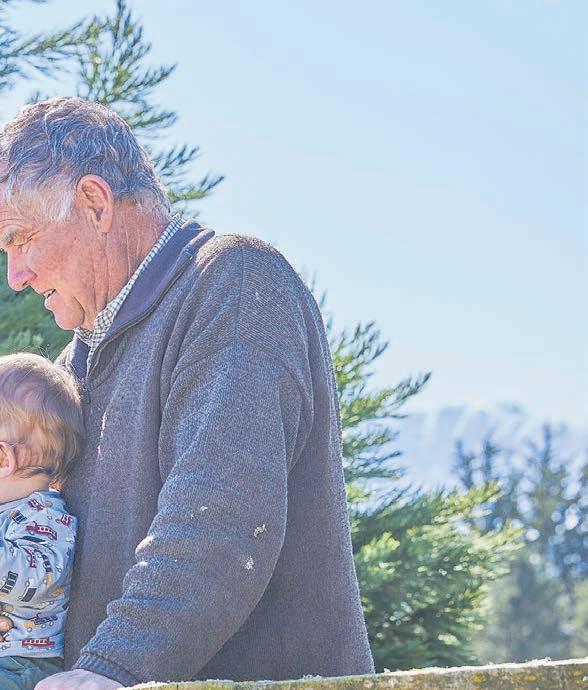


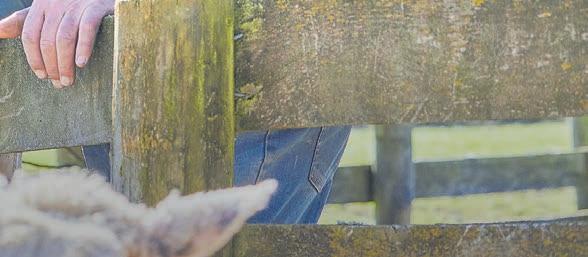

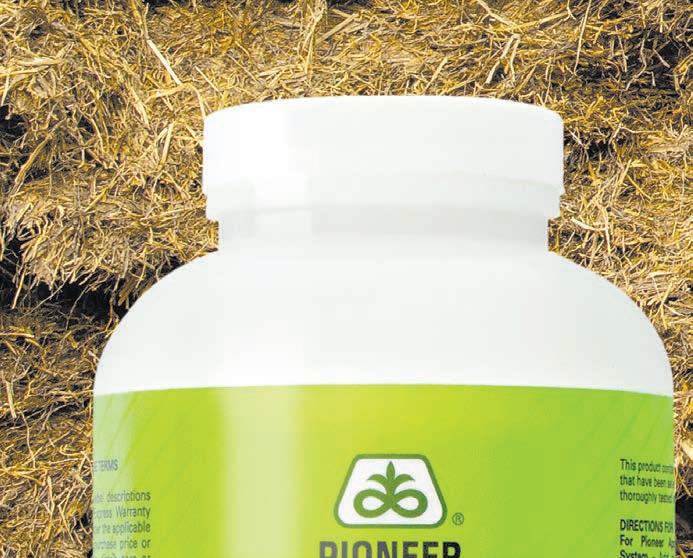
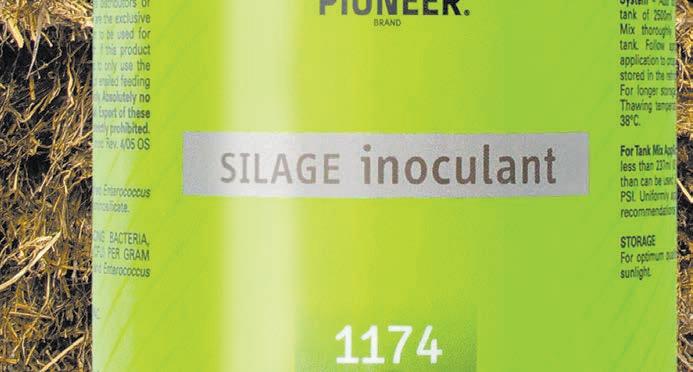


Neal Wallace TECHNOLOGY Genetics
AN ORGANICS lobby group says it has been sidelined in discussions so far about government plans to make it easier to use genetic modification technology.
Organics Aotearoa New Zealand (OANZ) is asking supporters for funding for a nationwide campaign to raise awareness of a policy it says endangers the integrity of NZ’s global reputation, risks cross-
pollination with organic crops and exposes farms to increased pesticide use and herbicideresistant plants.
Campaign co-ordinator Brendan Hoare said the sector is directly threatened as genetically engineered products are prohibited in organic production systems.
There has been no seat at the table for organics, no representation anywhere.
Brendan Hoare Organics Aotearoa NZ
Despite the sector being a $1 billion export industry, it has not been included in any discussion on a policy that will enable greater use of the technology.
“There has been no seat at the table for organics, no representation anywhere,” said Hoare.
In August the government announced it is ending the country’s 30-year ban in gene technology outside the laboratory.
Legislation ending the ban and implementing a dedicated regulator to oversee applications

Hugh Stringleman
MARKETS Livestock
YEARLING bull sales continued strongly in the South Island in early October with $15,000 made twice by Stern Angus, the minimum transfer price for bulls intended for stud duties.
Stern 23993, a son of the renowned Albert of Stern, was purchased by Westfield Angus, Otautau, and Stern 23973, by Taimate Roy, went to Tarangower Angus, Mahoenui. These bulls were lots 10
and 11 for Stern’s spring sale at Pleasant Point, South Canterbury, when 42 of 44 in the catalogue sold and the average was $6300.
Nearby in Geraldine, Kakahu Angus sold 34 out of 34 and averaged $5970, with a top of $11,500.
Down south, Torrisdale Murray Greys at Winton, sold all its 42 bulls offered and had a top price of $5000 for lot 4, Torrisdale Utopia U46. Komako Angus, Ashhurst, had a full clearance of 34 bulls and averaged $5460.
Top price was $12,200 for Lot 6, Komako U18, sold to Robbie Cummins, Whanganui, and Lot 3 was transferred for $10,000 to Hillcroft Angus, Ohinewai.
Matauri Angus, Tangowahine, sold 27 out of 31, averaged $2907 and had a top price of $3800.
Willowspring Herefords, Otorohanga, sold all 13 bulls at an average price of $2807, with a top of $5000 paid by Chevelle Herefords.
Bluestone Herefords, Cave, sold all 79 bulls averaging $2379, with a top of $4000 paid twice by Ardo Herefords.
for using the technology will be introduced to Parliament by the end of the year.
Science, Innovation and Technology Minister Judith Collins said in August that NZ lags behind Australia, the United Kingdom, Canada and many European nations in its restrictive use of the technology.
The OANZ campaign aims to educate the public and mobilise communities to push back against the policy.
Its promotional material says it also advocates for farmers’ right to choose GE-free practices and
consumers’ right to choose GEfree and organic products.
Hoare said in addition to being excluded from discussions, he has yet to see data, analysis, an impact assessment or market research on the benefits or costs from greater use of GE technology.
Equally missing from discussions are issues such as liability for cross-pollination from GE to organic plants.
Hoare said OANZ represents more than just food and beverages and operates a fully integrated supply chain for organically branded products.




RISK: High expectations have come much earlier this season, but with 11 months of the current season left to run, downside risks for dairy commodities and milk prices are also higher.
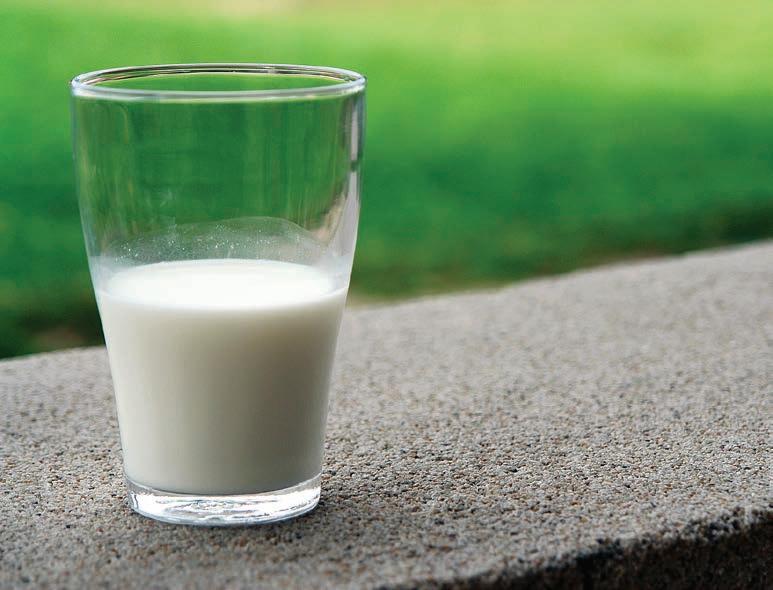

Hugh Stringleman MARKETS Dairy
DAIRY farmers are using milk price
The number of
of
future contracts traded on the SGX-NZX platform has risen and recently set weekly records for
the life of the 2025 contract (MKPU25).
Immediately after the Global Dairy Trade price index rose 1.3% in its recent auction, MKPU25-traded prices reached $9.25, the highest level since November 2022. It followed the September 25 increase of 50 cents in the Fonterra farmgate milk price forecast range, now $8.25 to $9.75, with a mid-point of $9.
That forecast is second only to the $9.25 in mid-2022, but the high expectations have come much earlier this season, when potentially farmers have more time and opportunities to lock in price outcomes over a larger portion of their season’s production.
However, with 11 months of the current season left to run, downside risks for dairy commodities and milk prices are also larger.
NZX dairy analyst Lewis Hoggard said milk price futures and options activity surged from the beginning of August, when MKPU25 set a weekly record of 1294 lots traded.





















“Open interest has also increased steadily; there are currently 70,854,000kg MS hedged for this season.”
High futures prices have also resulted in higher prices in Fonterra’s fixed milk price offerings.






The October FMP application window opened at $9.23 with a 10c service fee deducted so a net price of $9.13.
Some 350 farmers applied for 12 million kg MS and all were accepted in full.




The offer price is the average of the daily settlement price of the SGX-NZX Milk Price Futures contract for three days following the first GDT auction of the month.






That offer price is advised to all Fonterra farmers on Saturday morning and they have Monday and Tuesday to make applications.
The August FMP event was a stand-out for the over-subscription volume at $8.55 net, being 32.5m kg from 828 farmers and Fonterra accepted 22m kg, therefore scaling back all applications by 68%.
All applications were accepted in full in September, when the offer price was $8.70 and the application volume was one-third of Fonterra’s 35m kg.




SYNLAIT suppliers have been given a boost after the company announced it has increased its forecast milk price for the 2024/2025 season by 40 cents to $9/kg MS.
The forecast increase puts Synlait on par with Fonterra’s $9/kg MS midpoint forecast, which has a $8.25-$9.75 per kg MS range.
In a statement released on NZX, Synlait said that continued strengthening in global commodities prices, off the back of contractions in global supply, drive the forecast increase.
Last month, the company offered its South Island suppliers a 20 cent/kg MS oneoff payment in a bid to retain their milk, announcing the payment when it released its results for the 2024 financial year.
The payment is conditional on South Island farmers not having a cessation notice in place on May 31, 2025; that they are supplying milk to Synlait in the 2025-2026 season; and that they remain un-ceased until August 31 2025.

Gerald Piddock TECHNOLOGY Energy
TAIWAN-based Mobii Green Energy Group has signed an agreement with New Zealand energy company North Rakaia Ltd to build a large-scale green energy facility in Mid Canterbury.
The project includes building solar and wind farms generating 850MW and 300MW respectively, green hydrogen production and power generation facilities, and a 750MW AI data centre campus.
It carries an initial investment of US$2 billion ($3.2bn).
Total costs including for the solar and wind farms and 750MW data centres (excluding IT costs) will be $13-15bn. IT gear, mainly GPU servers, may cost US$15$20bn more.
North Rakaia chief executive James Gu said they have purchased farmland close to the Rakaia river, which will be the site for the solar and wind farms and the facilities.
Resource consents have been lodged.
An agreement with Transpower has been reached around power supply and a substation will be built to convert the energy produced for using in the campus with the rest exported for to the grid. Mobii Green Energy will license its green hydrogen technology, and both parties will jointly establish a project company responsible for project construction, maintenance, operations, and research and development.
In the first phase of development, the focus will be on solar and wind power generation, building a green computing centre.
If everything goes according to plan, Gu hopes to have the substation built in two years’ time.
The project is not included in the government’s Fast-track Approvals Bill.
Gu believes the artificial intelligence technology that the farms support could pave the way for transforming the farming sector away from current “inefficient” outdoor farming practices to indoor growing using precision technology.
The cheaper energy produced from the solar and wind farms, along with re-using heat from the data centre, could change that.
Data centres produce a huge amount of heat that is currently wasted, and Gu believes they can use that heat to produce cheap energy.
Gu said Canterbury is the ideal location for the data centre because of its low average temperatures and abundant solar, wind and water resources.
Modern large data centres consume enormous amount of electricity and water for efficient cooling and non-stop data processing, storage and retrieving.
The development will add significant data capacity in New Zealand, Australia and the Asia Pacific region while harnessing 100% green power and re-using heat and water from data centres for large scale indoor high-productive plant growing, he said.

Gerhard Uys NEWS Weather
SOUTHLAND farmers say persistent wet conditions will affect production next season.
Southland dairy farmer Hannes du Plessis said he reached the point earlier this month where he couldn’t use his usual standoff areas anymore as conditions were too muddy.
With mud on teats increasing disease risk, he chose to begin feeding out on race.
With no section on the farm dry anymore he upped the silage and baleage fed out in the shed, with cows now receiving up to half of their diet from supplements.
He is fortunate to have enough supple-
ments on hand, but knows of farmers in the region who have run out of reserves.
Beef + Lamb New Zealand lead economic service manager South Island Jenny McGimpsey said persistent wet and cold conditions will impact this season’s lamb crop.
She said a survey by BLNZ showed scanning percentages for Southland were high this season, with an expected lamb crop of about 6 million lambs for Southland and Otago combined.
Although farmers are doing their best to give lambs the best chance at survival, multiples are often less robust to severe weather conditions, she said.
The feeling was that the lamb crop will therefore be smaller than initially predicted.
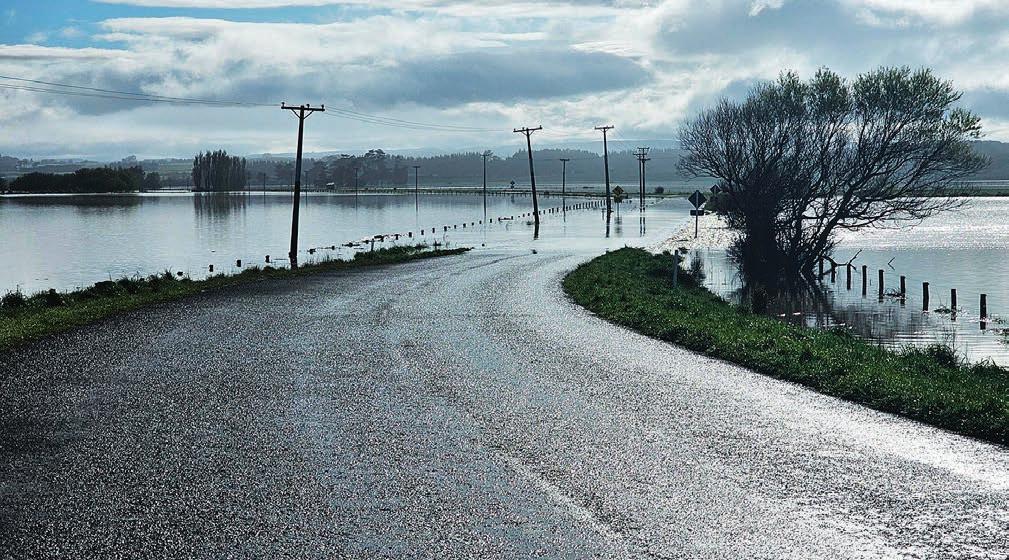



Ben & Samantha Tippins
Sharemilking 950 cows in Tokoroa

Dairy farmers like Ben and Samantha know that being proactive with udder health from the star t of calving is crucial for a successful season
With 950 cows and a switch to once-a-day, maintaining a consistently low somatic cell count was always going to be a challenge. But by teaming up with FIL and implementing a 10-step milking routine, they ’ve seen significant results: fewer mastitis cases, lower SCC, and more milk in the vat.
They ’ve also shaved an hour and a half off milking time, giving them and their team more family moments.
Now that ’s what we call a successful par tnership.
Learn more about Ben and Samantha’s success by scanning the QR code or visiting FIL.co.nz.


Richard Rennie NEWS Water
SUPPORTERS of the fast-tracked Tukituki water security project are adamant the scheme is more than simply a “Ruataniwha 2.0” proposal.
The Ruataniwha dam proposal in Hawke’s Bay was scuppered in 2017 after a Supreme Court ruling determined a proposed land swap by the Department of Conservation, allowing conservation land to be flooded, was illegal.
But a revised version, the Tukituki water security project, received the fast-track tick last week from the government.
Project spokesperson Mike Petersen said the proposal is completely different in focus and intent from the original Ruataniwha project, despite sharing the original project’s site on the Makaroro river.
“We completely rescoped the catchment’s needs and investigated other options to supply water to meet the needs of a growing population and found seven alternatives. But it came
back to the old Ruataniwha site as being the best option to deliver a catchment wide benefit.”
Petersen said the latest proposal differs from the Ruataniwha “build it and they will come” approach to that dam’s construction.
“That was very dam focused. This is more demand focused, about meeting needs of the catchment. We have a water hierarchy that has the river and environment as No 1, secondly the needs of people, and thirdly the provision of water for food production.”
That was very dam focused. This is more demand focused, about meeting needs of the catchment.
Mike Petersen Tukituki water security project
He said it is significant that the project has already been fully consented, and that it was only the Supreme Court ruling that stymied the original Ruataniwha project.
“And that was a decision made on the process behind the land swap agreement, not the actual
swap itself. The fast-track process will address this, and with consent already in place, it means we are not running roughshod over the community.”
Petersen rejected claims made on Radio NZ by opponents of the project that the dam could cost $1 billion. He pointed to original dam proposals that were closer to $280 million, but said the group would be assessing full costs in the coming months.
He said the group had looked hard at lessons learnt from Marlborough’s Waimea dam project, where costs had ballooned out from an original $75 million price tag to over $200 million.
Earlier Ruataniwha geo-tech work should also ensure there would be none of the expensive geological surprises Waimea threw at constructors mid-way through its build.
Plans are to hold up about 20% of the catchment’s total water supply behind the dam.
“There is simply no more water available in Hawke’s Bay for communities or irrigators. We intend to ensure a flow of 20 million cubic metres in the river to be absolutely sure we will maintain minimum flows.”
Staff reporter
NEWS Energy
TEN planned solar farms are among the 149 projects that will be highlighted in the government’s one-stop-shop Fast-track Approvals Bill.
The farms range in size and scope from 219 hectares through to 670ha and are spread across the country.
The Fast-track Approvals Bill is part of the government’s plan to rebuild the economy, Regional Development Minister Shane Jones said.
The 10 projects are part of 22 renewable electricity projects to electrify the New Zealand economy, boost energy security and help New Zealand address its climate change goals. The remaining 12 projects include wind farms and hydroelectricity.
“Collectively the projects will contribute an additional three gigawatts of generation capacity, if all consented. By comparison, Auckland’s historic peak demand is about two gigawatts,” Jones said.
The 149 projects will be listed in Schedule 2 of the Bill once the Bill is reported back from the Environment Committee in mid-October.
Once the Bill is passed, the project can apply to the Environmental Protection Authority to have an expert panel assess the project and apply relevant conditions.
The solar projects are: Auckland: Energy Farms

Limited wishes to construct the Wellsford Solar Farm on a 219ha site.
Canterbury: Far North Solar Farm Ltd wishes to construct the Point Solar Farm project on a 670ha site and to supply electricity to the national grid.
Black Point Solar Limited wishes to construct and operate a solar farm to supply electricity to the national grid.
Andrew William Simpson and Karen Frances Simpson of the Balmoral Station Solar Farm project plan to construct and operate a solar farm to supply electricity to the national grid.
Lodestone Energy Limited wishes to build a 320ha solar farm at Haldon Station and to connect and supply electricity to the

Meantime, modelling has shown climate change is reinforcing the need for more water supply in the western Hawke’s Bay region and there are about 20,000 hectares of land that could benefit from reliable water supply.
“We are talking permanent horticulture, arable, vegetable and seed production.”
He rejected claims that dairying was the only option to use the scheme’s water economically, with that land use impossible now under the regional councils’ plan change 6 rules on land use.
“If anything, we may see less dairying, not more.”
With costings still to be finalised, Petersen is confident multiple funding sources will come on stream for the project.
“There is a hydro generation component in the project as well, which appeals to those seeking green investment. Government is also keen to see Superfund and ACC fund investment.
“We believe there is a wider range of investors there than there was previously.”
Petersen said he hopes construction can start in the first quarter of 2026 and said it would take two to three years for completion.

Neal Wallace NEWS Dairy
LIQUIDATORS are still working with a potential buyer for the home dairy farm as the liquidation process of the former Taratahi Agricultural Training Centre edges towards six years.
Since 2019 liquidators have had a formal agreement with the Southern Institute of Technology (SIT) to provide education from the Telford Campus near Balclutha.
“We continue to work with SIT to make the Telford Farm available to assist in the education of its students,” the latest report states.
national grid
Waikato: Tauhara North No 2 Trust plans to build a solar farm northeast of Taupō to supply electricity to the national grid.
Harmony Energy NZ #6 Limited plans to build a solar farm at Hinuera, near Matamata, to connect to and supply electricity to the national.
Manawatu: SolarGen Joint Venture is planning a 400ha solar farm at Foxton to supply electricity to the national grid.
Harmony Energy NZ #5 Limited wishes to construct a solar farm at Bunnythorpe in Manawatū.
Taranaki: Harmony Energy NZ #8 Limited plans on building a solar farm at Huirangi, east of New Plymouth to supply electricity to the national grid.
The Wairarapa farm training centre was placed in liquidation in December 2018 and in their 12th and latest report, liquidators Grant Thornton say a potential buyer it has previously worked with continues to express interest in purchasing the land, but a deal is still to be finalised.
Under the Taratahi Act, a purchaser must continue to provide education and must be approved by the government.
The liquidators believe the potential buyer meets those requirements while also providing funds to pay creditors.
“A sale and purchase agreement has been presented to this party and while discussions with this party have been positive, we have not received a signed agreement.”
Once the sale of the home farm is confirmed, liquidators intend transitioning operations of the Telford farms in South Otago to an agreed party.
The Tertiary Education Commission and the Ministry for Primary Industries are being kept up to date about Telford’s farming operations and the liquidator’s intentions.
“To this we have established a transition liaison team with SIT and the Telford Farm Board to ensure there is a smooth transition when a settlement of the Home Campus occurs.
“In the meantime, we continue to operate the Telford dairy, beef and sheep farms and the Taratahi home dairy farm.”
When the liquidators were appointed in December 2018, the trust’s electronic records indicate 1194 unsecured creditor claims totalling $15.9 million. To date they have received 248 unsecured creditors’ claims totalling $15.2m.
“It is unknown the amount of funds that will be available to make payment to unsecured creditors as it is dependent on the sale of the home campus and dairy farm.”
2 0 2 5

E v e r y t h i n g w e d o ,
w e d o f o r t h e
g e n e r a t i o n s t o c o m e .
E n t e r i n g t h e a w a r d s i s
a n o p p o r t u n i t y t o s h a r e
i d e a s , l e a r n a n d g r o w.

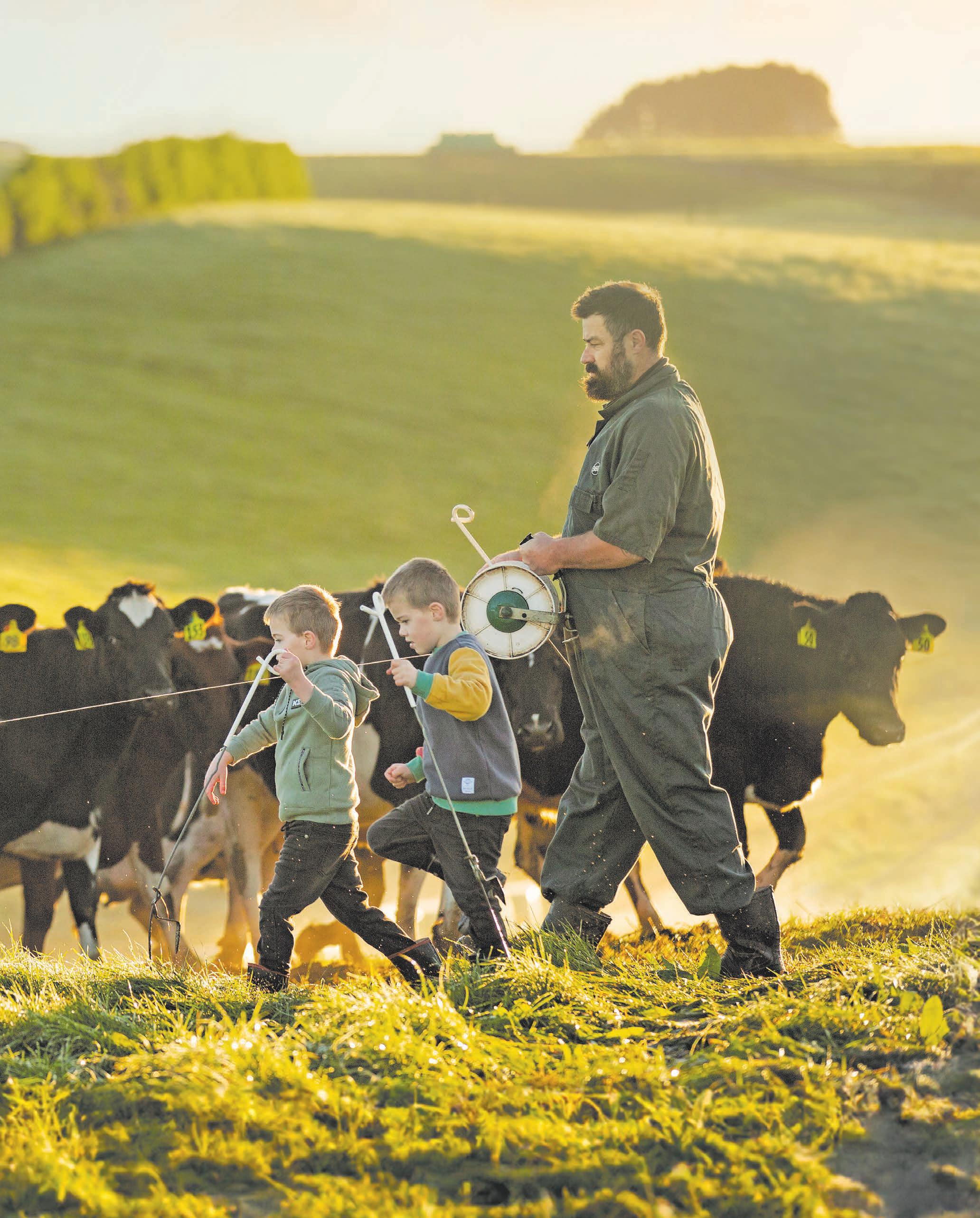

Gerhard Uys NEWS Safety
THERE have been a spate of accidents during recent agricultural aviation operations.
Executive officer at the New Zealand Agricultural Aviation Association (NZAAA) Tony Michelle said in recent weeks there have been five accidents and five incidents on agricultural aviation operations involving both fixed-wing aircraft and helicopters.
There were no fatalities or serious injuries.
“It is unwise to speculate on the reasons behind these. However, thorough investigations are being undertaken and the lessons learnt
will be invaluable,” Michelle said.
The circumstances of the accidents and incidents vary but there are clear trends, he said.
Spring weather conditions have been abysmal with small suitable operating windows, farmers are under pressure to feed lactating stock, airstrip maintenance has been put on the back burner due to the economic downturn and aerial operators are under financial pressure due to the economic downturn.
All the accidents and incidents were avoidable, he said.
“The primary sector, particularly sheep farming, is experiencing economic hardship that has significantly affected our industry with aerial application down 52% when compared to 2022.
“Following a long period of
relative inactivity, pilots and crew must gradually ease themselves back into the intense environment of agricultural aviation. They must take time to get ‘flying fit’ once again. The risks can be exacerbated by pressure from customers to fly when the airstrip or associated facilities are unsuitable, or weather conditions are unsafe.
“Our industry is very sympathetic to the pressures that farmers experience at this time of year and we ask that they be patient with our operators who must put the safety of our pilots and crew at the forefront. Our operators are working hard to provide services to clients in a timely fashion considering the challenging weather conditions we are experiencing this year.”
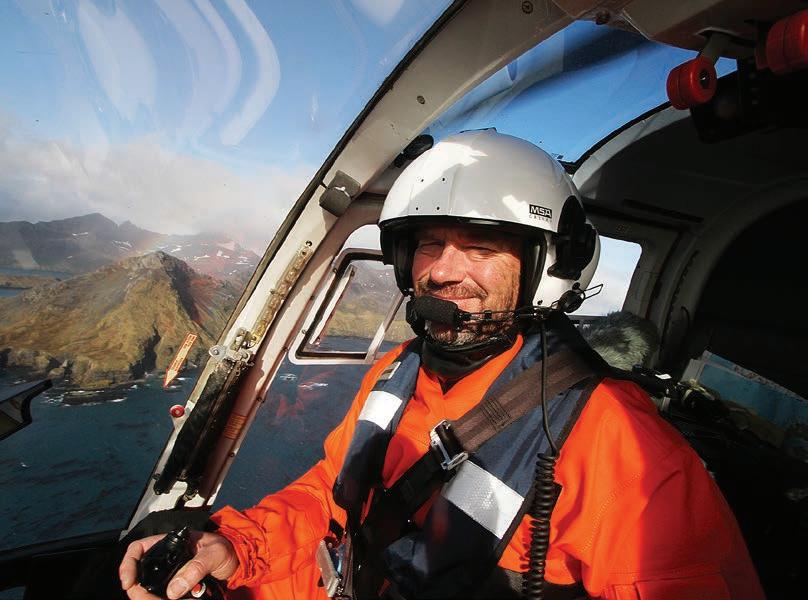
Staff reporter MARKETS
Food and fibre
NEW research is hoping to pave the way for New Zealand to emerge as a global leader in the Wagyu beef industry.
Dr Anna Earl, a senior lecturer in management, marketing and tourism at the University
of Canterbury, is carrying out research aimed at understanding changes required to advance New Zealand’s slice in the Wagyu beef industry.
The study delves into the potential strategies that could position New Zealand at the forefront of this high-value market.
“We have this beautiful image of
New Zealand, yet much of our beef is exported as a commodity. We’re looking at how we can change that by adding value to our produce and ensuring it’s recognised as a premium product in international markets,” said Earl.
Known for its marbling, flavour and tenderness, Wagyu beef is expensive, premium beef highly prized by connoisseurs in Japan,
where it originated, and many other countries.
Earl’s research has identified the key barriers to the New Zealand farming industry capitalising on premium foods such as Wagyu beef, including a lack of infrastructure to support highend cuts of meat, policy changes needed to support sustainable farming with a longer production
cycle, and a lack of education on the benefits and practicalities of long-term farming practices.
Earl said with limited players in the market, there is an opportunity for this to become a highly profitable export to countries such as China, the United Kingdom, United States and Australia, which consistently seek these premium goods.
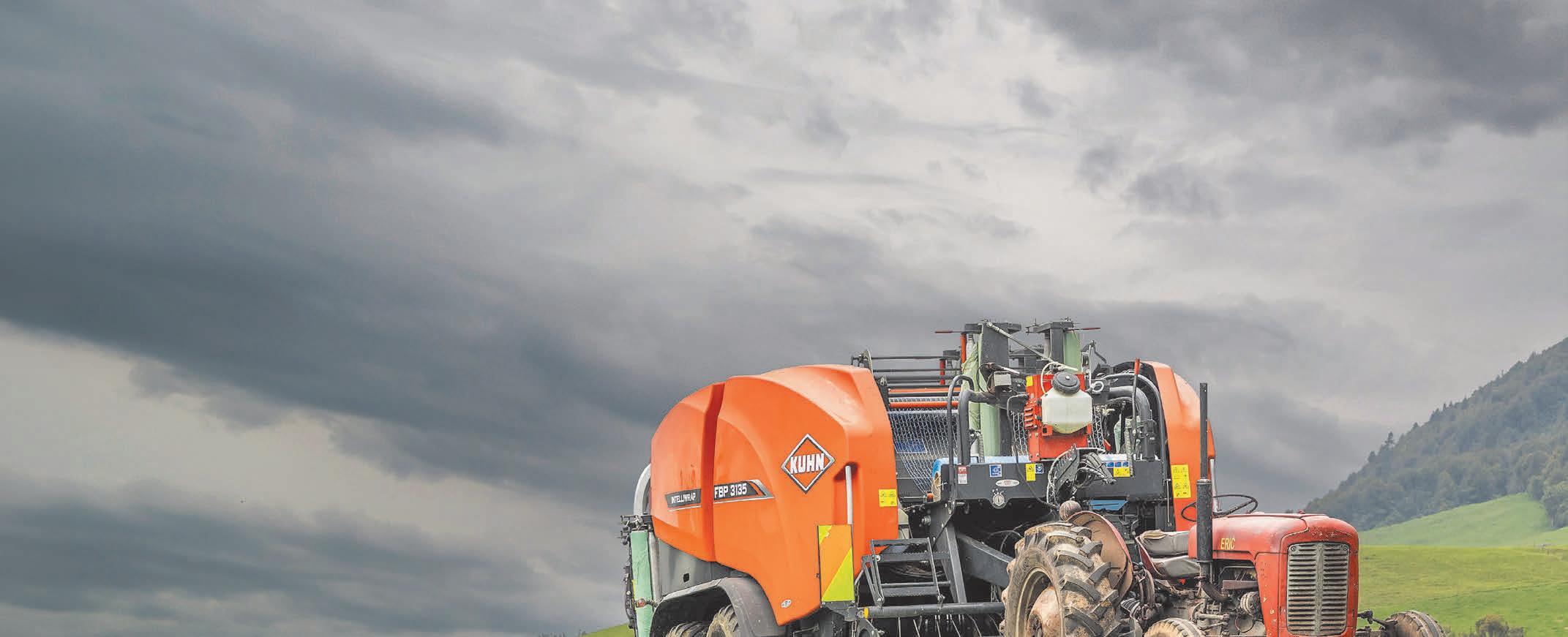


Neal Wallace TECHNOLOGY Dairy
DUTCH dairy farmers will from next spring have access to the first of possibly two new tools that could reduce methane emissions from cows by around 30%.
Next breeding season they can access semen from low methane emitting bulls, the result of an eight-year programme run by Wageningen University & Research in the Netherlands.
For the past four years researchers have collaborated with Dutch dairy company FrieslandCampina and genetics company CRV to establish breeding values for methane.
This measure alone is estimated to reduce average emissions by 1% each year, accumulating to more than 25% by 2050.
University scientists are also working on a project to utilise rumen fluid from cows that are naturally low enteric methane producers.
This rumen fluid is fed as a probiotic to newborn calves in a five-dose course.
It has been found to permanently adjust the recipient’s microbiome, providing a further 10% reduction in methane emissions.
Scientists are by nature conservative, but the team at Wageningen are encouraged their work could make a tangible reduction in livestock methane emissions.
“I am quite optimistic,” said senior researcher Léon Šebek.
“It is quite difficult, if not impossible, to reach methane reduction goals that have been pledged without any interventions other than feeding strategies.
“It shows the need for extra interventions.
“What we have shown here is that additional interventions through breeding values and steering microbiome will become available.
“If so, most Dutch dairy farms will have a suitable intervention meaning that we can achieve an average reduction of around 30% in methane by 2050.
“If we only used feed strategies and relied on the efficiency of the herd, we will only get a 15-20% reduction.”
Significantly, these one-off interventions provide permanent gains.
The project team, led by Professor Roel Veerkamp, focused on breeding values in Holsteins, which make up 92% of the 1.6 million-cow Dutch dairy population.
They measured emissions from 9000 cows on 100 Dutch farms and linked their methane emissions to their DNA, which confirmed heritability of the trait of around 25%.
Correlations with other desired breeding values were found to be maintained.
From this reference population they were able to estimate the first genomic breeding values for methane emissions, which will be rolled out next year.
The project will be extended and international collaboration will enable the reference population to be enlarged to increase the reliability of the breeding values.
This is at least a year ahead of New Zealand, where LIC expects to have a methane-emitting breeding value in the market by 2026.
In parallel to the genetics research, work has been underway since 2017 looking at the whether the natural development of a cow’s rumen microbiome can be manipulated to reduce enteric methane production.
What we have shown here is that additional interventions through breeding values and steering microbiome will become available.
Léon Šebek Wageningen University & Research
Šebek said initial work established that while feed and feed efficiency are influential factors in emissions, there was still a 20-24% variation between cows when feed was accounted for.
This indicated other factors were in play.
For two years they worked with dairy farmers studying gut microbiome fluid samples, which related back to feeding and management.
From that analysis they established the role of the microbiome.
Šebek said they also established there was no link between the microbiome of a cow and her calf –in other words the environmental factors were dominant over possible genetic transfer.
They introduced to calves microbiome from low enteric methane producing cows and found five doses sufficient to


permanently alter the production of methane in the gut of recipient calves.
To prove their encouraging hypothesis, they analysed 60 calves – 20 given microbiome from low methane producing cows, 20 from high producing cows and 20 as a control.
The average methane emissions of the selected microbiome donor groups was 17.2 and 24 grams methane/kg/DM for low and high methane producing cows respectively.
Satisfied the process will provide tangible benefits, Šebek said work is now focused on how to source the targeted microbiome and how and in what format to deliver it.
There is also the issue of securing public support or a social licence given the nature of the product.
Adopting the technology also has to be cost effective and provide sufficient benefits or incentives for farmers.
Programme manager Elian Verscheijden said recent meetings with some of the Netherlands’ most progressive dairy farmers who have used mainly feed and management measurements, showed they were able to
MAN WITH BULL: This 23 tonne sculpture was created for the Institute for Livestock Research in Zeist and eventually relocated to the Wageningen campus in 2015.
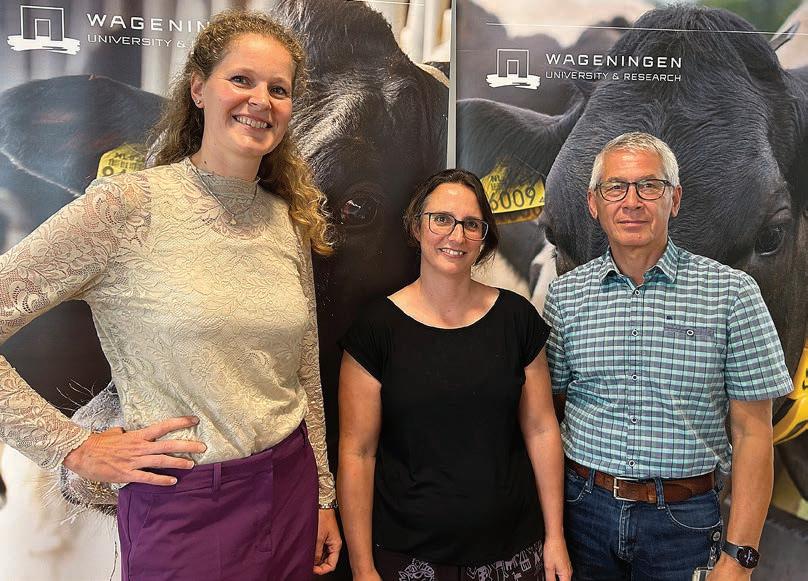
achieve methane reductions of 1015% but could not improve beyond that.
She said this research sends a message to the Netherlands government and the public that the sector is taking the issue seriously and it is making progress.
Both research initiatives are part of an integrated approach programme launched in 2018 to address methane emissions from livestock farming.
The program is funded by the Netherlands’ Ministry for Agriculture, Fisheries, Food Security and Nature with a budget of least NZ$16 million a year.
Besides research to enteric
methane, the programme also includes finding solutions to reduce methane emissions from manure, a significant issue for Dutch farmers.
The first goal of the programme is to comply with the government’s 2030 goal to reduce methane by 30% compared to 2020.
Ultimately the government has a goal of close to carbon neutrality by 2050.
• Wallace is visiting seven countries in six weeks to report on market sentiment, a trip made possible with grants from Fonterra, Silver Fern Farms, Alliance, Beef + Lamb NZ, NZ Meat Industry Association and Rabobank.


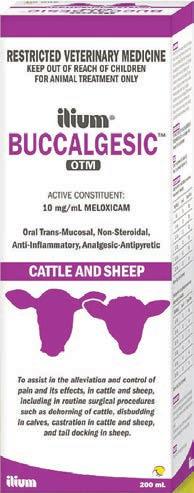
Staff reporter TECHNOLOGY Emissions
FARMERS and scientists are using the latest technology to measure how efficiently beef cattle convert feed into liveweight, as well as their greenhouse gas emissions, in a trial on a North Canterbury farm.
Cattle of all breeds eat variable amounts each day, some more, some less than their counterparts, while gaining the same weight.
Research teams are hoping to use the information from the trial to develop genetic tools that farmers can use to produce animals that feed more efficiently and emit less methane, without reducing the animal’s productivity.
The trial at Te Mania Angus stud near Parnassus has already sparked interest from scientists and farmers in Australia, who recently visited the farm.
We aim to create two breeding values: one for feed efficiency and another for methane emissions per kilo of feed.
Geneticists from Beef + Lamb New Zealand’s Informing New Zealand Beef programme, scientists from AgResearch and Te Mania Angus stud are working together on the project.
Head of genetics at BLNZ Dr Jason Archer said the goal of the trial is to develop new traits specifically for the New Zealand beef industry so farmers can produce efficient cattle with a light environmental footprint, and run productive and profitable farms.
“The feed efficiency of an animal is important to farmers because they’re facing rising costs behind the farm gate. An animal that can grow or produce more for the same amount of feed eaten is a real advantage for the farmer. At the same time, we are keen to find animals that produce less methane.
“We aim to create two breeding
values – the measure of an animal’s genetic potential to pass on specific traits to its offspring: one for feed efficiency and another for methane emissions per kilo of feed.
“In sheep, we have shown that we can breed for animals that produce less methane for every mouthful of feed. The goal in this trial is to try and identify those cattle that can do both – produce less methane per kilogram of feed and grow faster per kilogram of feed.”
Archer said New Zealand’s greenhouse gas emissions profile is heavily influenced by enteric methane from livestock production.
“Methane reductions will be important in future to meet climate commitments and will support marketing efforts around lower carbon input red meat production.
“This becomes more relevant as governments and customers focus on reducing their Scope 3 emissions.”
Director at Te Mania Angus Will Wilding said feed intake is measured by feeding silage in a bin that sits on load bar scales.
“Basically the Vytelle Sense system is a big tub of silage sitting on scales. Only one animal can feed at any one time. While the animal eats, the system reads its NAIT identification tag, records which specific animal is eating, and weighs feed before, during and after feeding.
“The system feeds data back to Vytelle in Canada and they collate the data to tell you exactly how much each animal has eaten. When the animals have a drink, they are weighed on scales, providing data for their daily weight gain.”
AgResearch then use portable accumulation chambers to measure methane emissions during the trial, he said.
“Farmers will benefit from the trial because they will be able to extract more value from inputs by having a more accurate feed efficiency Estimated Breeding Value (EBV) as a tool in their toolbox.”
AgResearch principal scientist Dr Suzanne Rowe said the portable accumulation chambers developed by the research

institute can be taken by trailer to where the cattle are grazing for methane measurement on site. This technology has addressed a longstanding gap in the ability to effectively measure grazing beef cattle.
“We’ve been doing this for many years with sheep, with thousands of measures on farms around New Zealand, and we’ve been able to prove that is an accurate and effective method.”
The measures help farmers understand the emissions profile of their herds and assist in breeding decisions for producing lower methane offspring.
Angus and Hereford heifers are being tested in the trial.
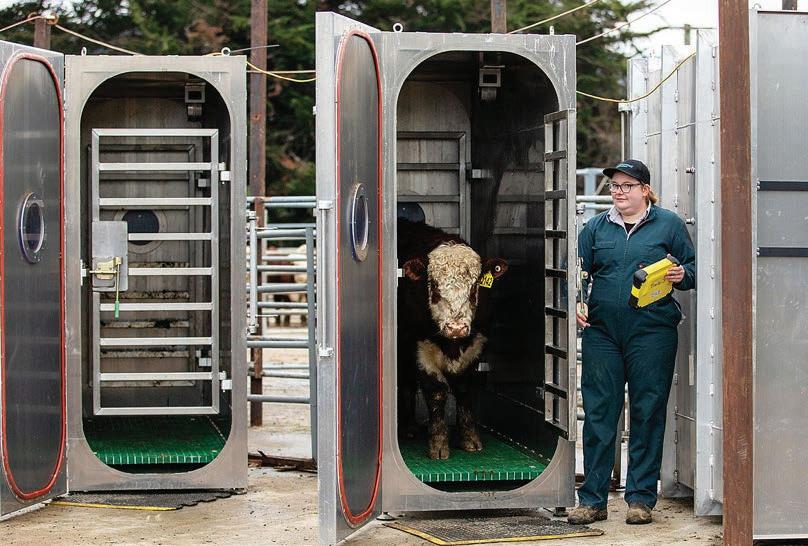
A DEVICE that purifies water cheaply and efficiently could revolutionise hydroponic growing and make farming more sustainable in a changing world.
The photoelectrochemical water treatment device is being developed by a Te Whare Wānanga o Waitaha | University of Canterbury (UC) team led by Chemical and Process Engineering Professor Alex Yip, with funding from the Ministry of Business, Innovation and Employment.
Yip said the goal of the project is to enable a food supply that is resilient in the face of climate change.
“Hydroponics, where plants grow in water instead of soil, is becoming an important technology internationally because it’s a way to grow crops in an environment protected from the increasing risks of storms, pests and disease. But it relies on ultra-clean water free from contaminants and pollutants.”
Yip said if hydroponics is used to grow plants at scale in a developing country where water is scarce and not completely clean, it can cause an accumulation of pollutants inside the plant, called bioaccumulation.
“With a closed system with recirculating water, it is very important to keep the water clean, especially from emerging micropollutants, which is what we are targeting with our new device. These micropollutants include pesticides, endocrinedisrupting chemicals and longlasting pollutants.”
The device the team is working on is unique and low-cost because it uses solar energy, reducing reliance on electricity.
“During the day, the smart device basically utilises solar light and converts it into
chemical energy to remove pollutants from water,” said Yip.
“During night-time or under weather conditions where we don’t have so much sunlight, it will automatically switch to an electrical system which powers the chemical reaction. This dual power source makes it more robust and adaptable to use.”
He hopes when the product is realised it can be marketed internationally, particularly to countries where clean water is not guaranteed.
The project team, which includes two PhD students –Chunyan Zeng and Vicky Tsui, funded by the Joint Postgraduate
Growing plants efficiently and sustainably within the city would help cut down some of the carbon emissions or ‘food miles’ associated with transportation.
Prof Alex Yip University of Canterbury
School Food Transitions 2050 – has already found the device works in a laboratory setting, and it is currently being tested in a real-world hydroponic system.
Yip said hydroponic farming is important because it has the potential to decarbonise the food chain.
“If we can create an urban farm in a city centre, and perhaps grow food in a high-rise building, it means the produce doesn’t have to be transported long distances.
“Growing plants efficiently and sustainably within the city would help cut down some of the carbon emissions or ‘food miles’ associated with transportation. It would also mean that you can grow plants in winter or any time of the year, rather than just within the season for that fruit or vegetable, allowing offseason cultivation of high-value produce.”
While the photoelectrochemical water treatment device is designed to be used on a large scale, he said it could also be used in individual households instead of, or in addition to, water filters.
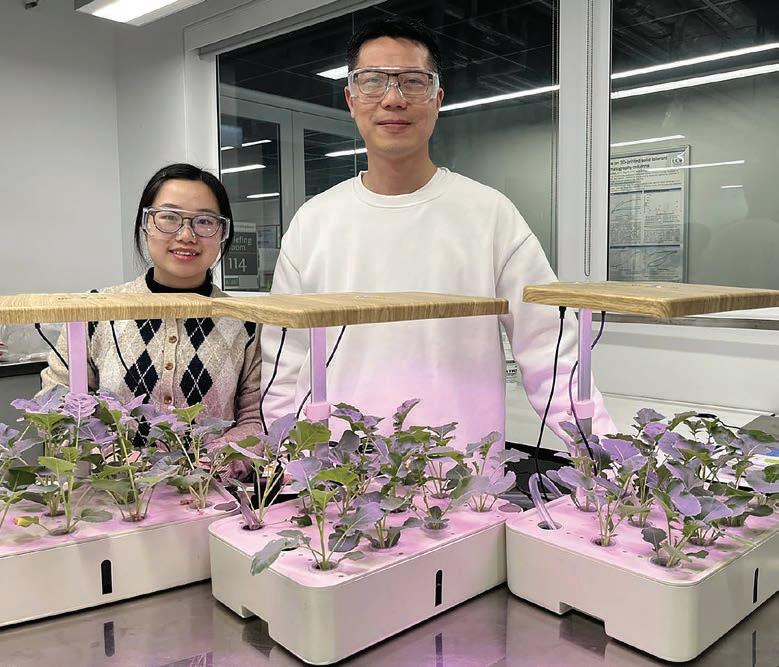

Olivia Caldwell PEOPLE Health and safety
THE mother of a teenager who was allegedly sexually harassed over a three-year period on a Southland farm is calling for the rural sector to make changes to prevent more people falling victim.
To protect their identities, Farmers Weekly has decided not to include their names in the article.
Between 2020 and 2023, the then 14-year-old girl with autism spent her school holidays learning the ropes of agriculture on a Southland farm.
During this time, she was allegedly groped, encouraged to take part in “play fighting” with the farm owner, and had an overnight hunting trip where he shared a bed with her.
Over the course of three years, the teen would return home, two hours north of the Southland farm, and not mention the inappropriate interactions with man entrusted with her safety and wellbeing.
“He would play fight [with her]; she said she could feel an erection,” her mother said.
“He took her on an overnight hunting trip and he didn’t take a sleeping bag and got into bed with her. He was spooning her and she said she didn’t sleep a wink. It was on the cusp of getting away with what he could.”
The parents had given permission for the hunting trip, not knowing of his earlier advances, she said.
“She’s young and he is in a position of power. She did say no, but he convinced her. He said ‘I will just snuggle in beside you’. He had an ulterior motive the whole time.”
The then high school pupil had aspired to become a farmer because she loves the outdoors and animals. The work experience had been organised privately by her parents, with a “well-respected and wellknown” farming couple.
“Through a trusted family friend, we were introduced to this farmer who has older kids and he is a grandfather.”
During her visits, the girl would stay at the farming couple’s home.
It wasn’t until the young woman turned 17 in 2023 that she told her mother “I am never going back there again”.
Her mother describes the incidents over three years as subtle touching and grooming.
The girl’s parents reported the incidents to police, but decided not to take the matter to court because they did not want to subject their daughter to the ordeal.
The farmer denied the complaints put forward to police, including sharing a bed with the young girl overnight.
“He got a warning ... If she went to court, she would be absolutely annihilated, pulled apart and we didn’t want to put her through that.
The New Zealand Police were legally unable to confirm the

WHERE TO TURN? RWNZ says issues facing rural women experiencing violence are exacerbated by rural isolation, which is an impediment to seeking and receiving urgent help when needed.
We are also hearing anecdotally about cases of harassment.
Gill Naylor Rural Women New Zealand
complaint on the farmer, whose identity is known to Farmers Weekly.
While she feels guilt, anger and disappointment, the mother is not focused on seeking justice, but wants the farming industry to open doors for women, or men, who have been harassed.
“I feel this is not something that is a one-off, I think it is probably something that happens to females in the farming industry.”
Rural Women New Zealand (RWNZ) confirmed there have been anecdotes of harassment towards girls and women in farm workplaces.
“We’ve heard that gender bias against female staff and their perceived capabilities is a real issue in rural workplaces. We are also hearing anecdotally about cases of harassment,” national president Gill Naylor said.
“Unfortunately, rural communities are vulnerable due to poor workplace practices.
“Issues facing rural women experiencing violence are exacerbated by rural isolation, which is an impediment to seeking and receiving urgent help when needed.”
Police recommend victims of abuse get themselves to a safe location and seek support through police or Victim Support.
Victim Support said these situations do happen and it can take a while for a victim to realise they have been harassed or abused.
“Unfortunately, it can sometimes
go on for a long period of time, having a lasting impact on your sense of security and leaving you feeling constantly unsettled,” a spokesperson said.
“Reporting what happened to police as soon as possible can keep you or others from experiencing further harm, but you can still report a crime regardless of how long ago it happened.”
RWNZ and Federated Farmers agreed that farm environments lack what larger organisations have in the form of a department to lodge complaints.
“Unfortunately, harassment is an issue in any workplace, whether farming or other. We do not condone any instance of harassment on farms,” Federated Farmers president Wayne Langford said.
“Within a rural workplace, it can be an extremely difficult situation, as people are often living on farm and don’t have the ability to move on quickly or easily if a situation does arise in the workplace.”
Langford recommended anyone facing harassment should contact the Rural Employee Support helpline, the Rural Support Trust, Federated Farmers or the police if it is an unsafe or criminal matter.
MORE: Where to get help:
Rural Support Trust Helpline: 0800 787 254
NZ Police
Victim Support 0800 842 846
Rape Crisis 0800 88 33 00
Rape Prevention Education HELP
Safe to talk: 0800044334
Male Survivors Aotearoa
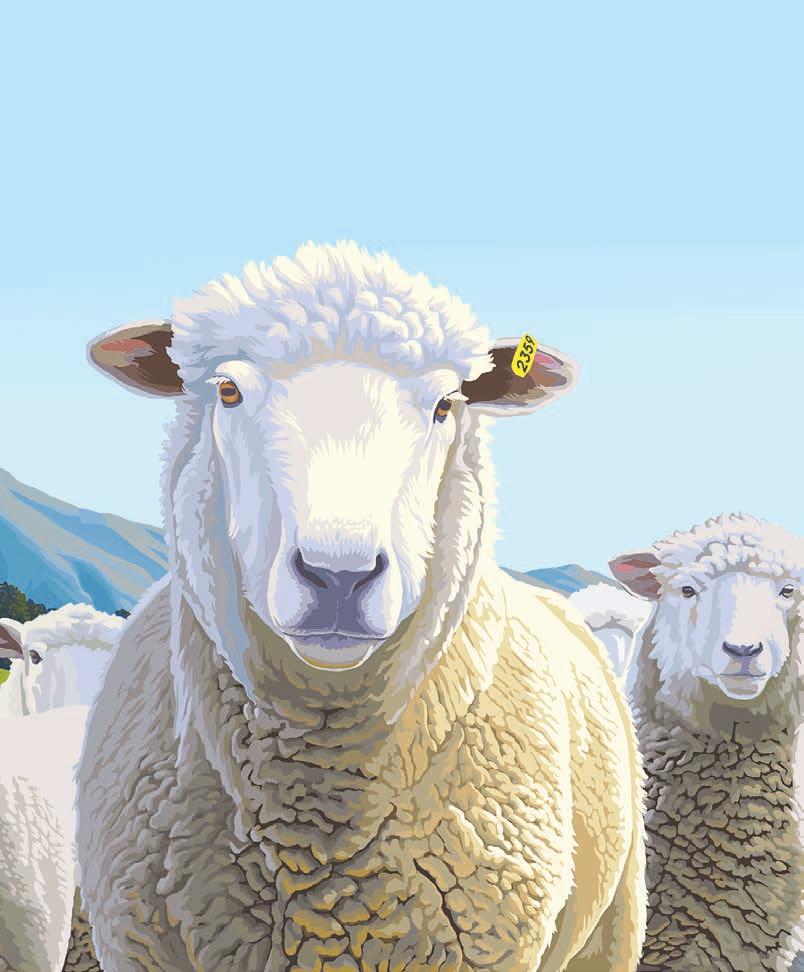
To




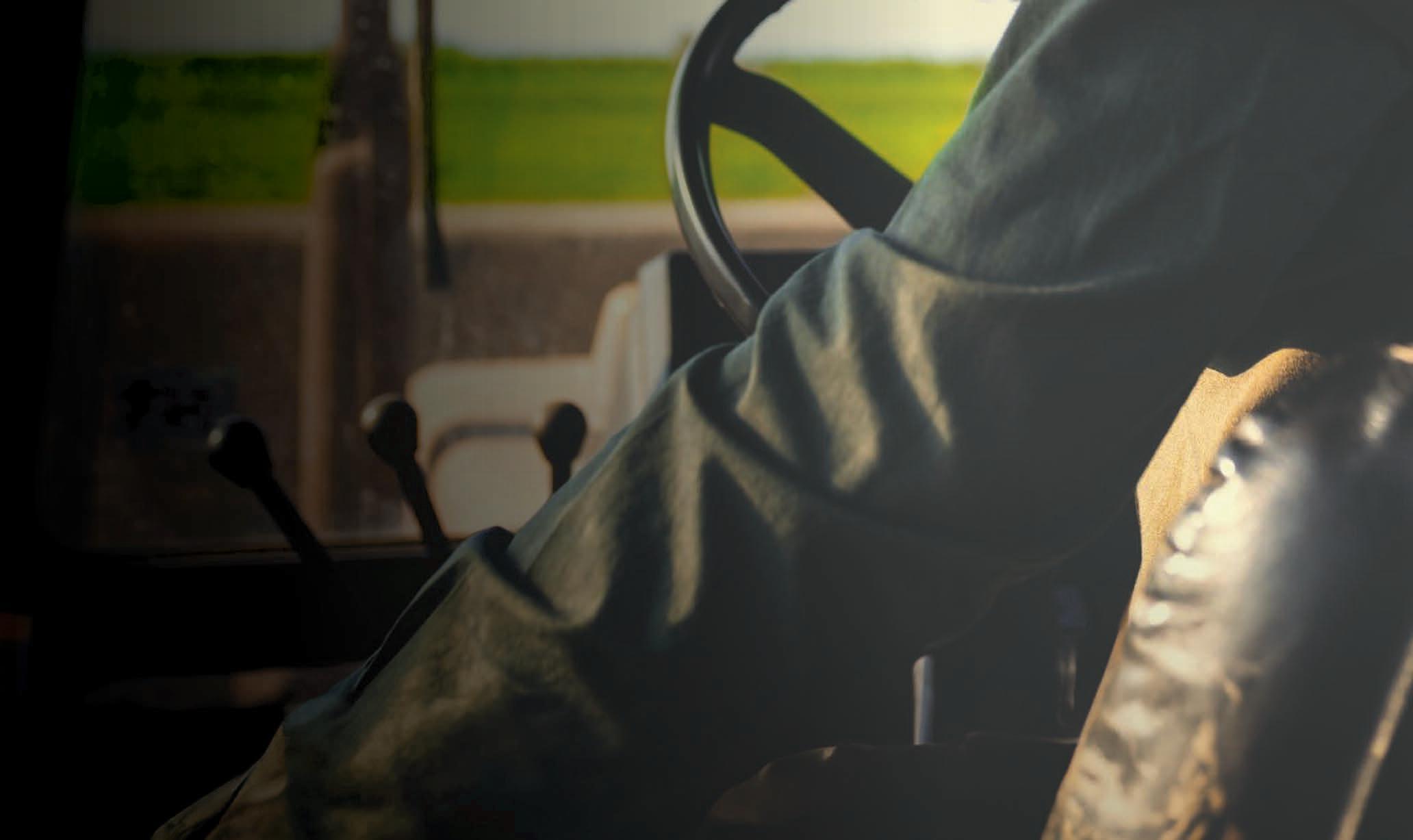

Richard Rennie MARKETS Horticulture
ZESPRI is doubling down on efforts to convince its New Zealand growers of the value of greater northern hemisphere supply to help preserve and expand shelf space, supporting NZ returns as demand continues to grow for the fruit.
Nick Kirton, Zespri’s Bolognabased northern hemisphere executive officer, said Zespri is asking growers to consider licensing up to 420 additional hectares per year over the coming six years to northern hemisphere growers. Most of this would be in Italy.
This comes on the back of having a proposal for an additional 10,000ha of northern hemisphere orchard plantings missing out in 2022 on the required 75% support of growers, achieving just under 70%.
“The current proposal for the northern hemisphere has been downscaled at the 2500ha, in Italy, France, Japan, Korea and Greece with about half planted in Italy as SunGold, with Greece being the next big area we are experiencing very good orcharding opportunities in.”
To date Zespri only has grower
approval to grow 5000ha of SunGold fruit in the northern hemisphere. The company’s total northern supply, known as Zespri Global Supply (ZGS), amounted to about 30 million trays this season, meeting around 70% of demand in the ZGS season.
Italy remains the jewel in the company’s crown for offshore SunGold production, accounting for over 80% of the offshore SunGold supply with a strong contingent of growers, some who have been supplying fruit for over 20 years.
“We now have growers here who have been supplying Zespri across multiple generations, and for longer than some of our NZ orchardists.”
Greece is also a major production base for kiwifruit, now growing around 13,000ha of Green kiwifruit.
Ultimately Zespri wants to increase the volume of trays coming out of the northern hemisphere to help shore up the brand’s shelf presence, ensuring it is held for 12 months of the year, and supporting New Zealand grower returns.
“It’s an increasingly competitive category and we need that 12-month supply, the value is there.
“The beauty is that growers like to grow SunGold, and consumers like to consume it.
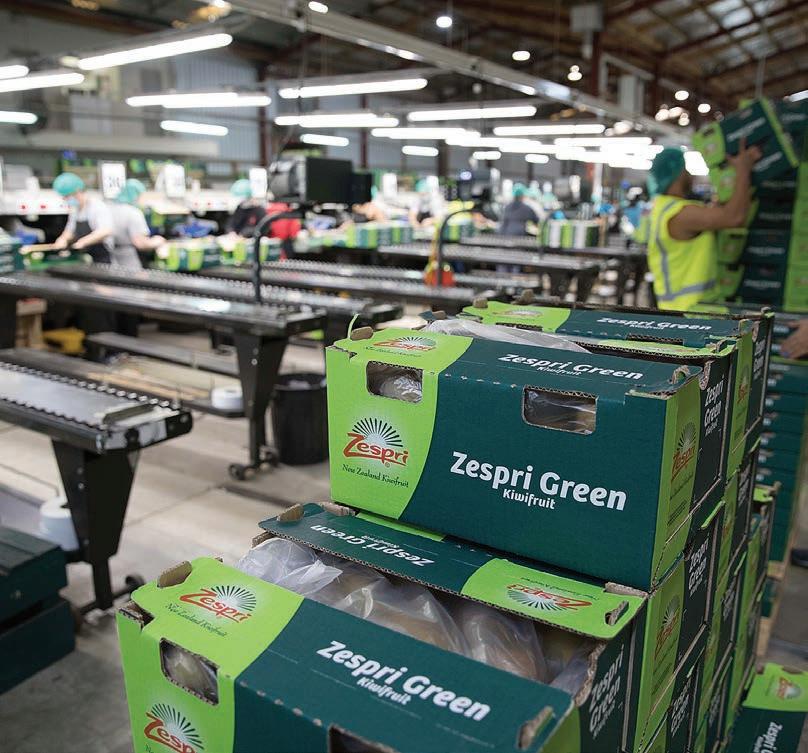
GROWTH: Greece is also a major production base for kiwifruit, now growing around 13,000ha of Green kiwifruit.
“The high cropping, sturdy SunGold also offers a premium to our northern hemisphere growers when supplied based off Zespri variety and crop standards.”
Kirton is acutely aware that if Zespri does not work to fill outof-season supply with northern hemisphere fruit there are plenty of emerging competitors who gladly will.
Jingold is an Italian company offering varieties of Red, Green and Gold to retailers, leveraging consumer attention using Marvel cartoon characters on some packs for added appeal.
Kikoka gold kiwifruit is another variety with plans to plant over 2000ha in the next five years.
Zespri has been bringing growers and post-harvest executives to
New Zealand farmers are some of the best primary producers in the world What they do every day requires a lot more than a green thumb; it demands a passion for problem-solving, overcoming new and different challenges to make some of the best produce in the world
For New Zealand farmers, the stakes are high.
Farmers bear responsibility for producing world-class food for a growing population with reduced access to farmland. By 2050, the world’s population is expected to exceed 9 billion, requiring farmers to sustainably produce more food than ever on less land and with fewer resources.
Productivity improvements year-to-year are a must, and that’s before you take into account biosecurity threats, pests and diseases. Farmers have the added challenge of contending with a natural environment that’s resource-rich but vulnerable to natural disasters such as earthquakes, landslips, storms and floods.
Geopolitical uncertainties add to global market fluctuations, and rising costs impact margins and
profitability Yet, while these challenges are big, so too is the appetite for success.
Farmers are dedicated to producing high-quality food, farming responsibly, determined to lean into every challenge that comes their way
At BASF, we understand this, and we’re committed to supporting farmers to overcome some of these hurdles. There is no doubt farming is “the biggest job on Earth,” and we’re here to help farmers take greater control of their futures.
In today’s demanding agricultural sector, innovation is essential. Traditional farming methods are no longer sufficient to meet the needs of a growing world. Farmers are at the forefront of innovation, implementing advanced techniques to grow more with less.
Farmers rapidly adopt new technologies and methods to stay competitive and safeguard the environment, not only for today, but for future generations. They secure strong yields on both prime and marginal land, achieving retur ns even in seasons that might have been loss-makers a decade ago
We now have growers here [in Europe] who have been supplying Zespri for longer than some of our NZ orchardists.
Nick Kirton Zespri
Europe to meet growers face to face, to better understand the systems, level of skill and commitment European growers have to the brand’s fruit.
Unlike in NZ, northern growers are not required to solely supply Zespri with fruit for export and can chose from numerous fruit brand supply options.
“But they like growing our SunGold, and we want the best growers up here growing it.”
Losing consumers due to loss of shelf space is a reality Kirton is acutely aware of.
“We saw it last season with our shortage of Green fruit from New Zealand.
“We had a one-month gap between hemispheres’ supply. Competitors flooded the market and took retail accounts and pulled the price down with their lower quality fruit.
“That is space that is hard to win back, and erodes our premiums.”
New Zealand’s agricultural community excels at fostering knowledge sharing among farmers and across the broader farming networks.
Collaboration is key Working with neighbours, industry partners, and academic and research institutions strengthens regional communities and promotes resilience.
BASF helps farmers navigate the complexities of moder n agriculture by providing them with the tools, products, and support they need to thrive. In 2023, BASF’s agricultural solutions division invested NZ$1.7 billion globally in research and development This investment is a testament to BASF’s focus on keeping agriculture competitive while building a more sustainable future.
Whether through access to the latest products or critical information that helps farmers make better decisions, our goal is always to empower farmers to succeed. By working hand-in-hand with New Zealand’s agricultural community, BASF is helping to create a sustainable system that benefits today’s farmers and ensures a lasting legacy for future generations.


Carmelita Mentor-Fredericks PEOPLE Community
AQUICK glance at Brent Wallace’s 24-hour Endurance Challenge Instagram page, and you’ll see the Arrowtown man hard at work training for a worthy cause.
On November 1, Wallace will attempt to ride the luge for 24 consecutive hours at Skyline Queenstown, in an effort to raise $100,000 for Gumboot Friday and I Am Hope – both organisations that offer mental health support across Aotearoa New Zealand.
“I’ve followed Mike King [founder of I Am Hope] since I was a kid. To come out and publicly say he has a problem with mental health, you can only but respect him more for that.”
For Wallace, the challenge, aimed at raising awareness for youth mental health, is a cause that’s also deeply rooted in the father of three’s personal experiences.
From having been held at gunpoint by a friend in Australia eight years ago, to almost losing control of a helicopter mid-flight and narrowly avoiding colliding with a mountain, Wallace has learnt that trying to pretend things will be alright after traumatic experiences does more harm to yourself and the people closest to you.
“What I didn’t know at the time, as much as I carried on with normal day life, I had never addressed these parts of my life, but had gotten into a real bad mindset of don’t give a shit about anyone or anything.
“The end result – some of my choices were aired and I lost a lot of people close to me due to my behaviour.
“We all have our own stories and battles. Growing up we had that
mentality of ‘don’t talk about it, just get on with it’ ... [and] that’s what I did, I never spoke about it.”
Asked why he chose to highlight youth mental health, the father of stepdaughter Lily, 16 and Nate, 12 and Isla, 10, said he hopes to break the stigma around talking about mental health.
“We shouldn’t wrap our kids in cotton wool, but we have to educate our youth that mental health is real and that talking and being open about what is going on in their lives and our minds is important. That could be your friend’s family or a counsellor.”
Wallace, who works as a contractor in the livestock sector as a buyer and drafter, and in transport and logistics, said he was fortunate to have the funds to access mental health support in his region, but it’s often not easily accessible to others, and when it is, support capacity is often at breaking point.
“Due to location, rural support systems are at a disadvantage. Even in urban areas I found that locking in an appointment was a process.
“Rural people, farmers are busy and investing their time in the land and animals is more important than their own wellbeing.
“But in saying that, once I got my first appointment locked in, for the next three months after that I got to see my counsellor every two weeks, but it all cost money.”
Doing the luge challenge is Wallace’s way of giving back to his community.
“After seeking help and learning a lot about myself I wanted to get involved or do an event where others would benefit from it. But I didn’t want something that focused solely on me, I wanted others to join in.”
He said he got the idea for the luge challenge while out with his family.
“Luge is something that all
ages can do as a family or with your friends, and that is what this event is about, bringing people together.”
After doing the necessary groundwork, Wallace announced the event on a specially created Instagram page in March and has been following a rigorous fitness regimen, which includes running, and strength and endurance training as he prepares for the challenge.
In the next few weeks he’ll start easing into doing a few hours in the luge at the Skyline and working his way up.
Being active by lifestyle, Wallace said he is not following a specific diet but “would love to get into some pies to get some fat on my backside, but past history shows it likes to stop at my waistline”, he joked.
He’s also mindful of his mental health while completing the challenge.
“I have a few mates coming on board as my support crew, and [they] will luge as well.
“Big part of doing this event was to get a few of us together and enjoy doing something different together.
“Having those guys there will be so important for the mental side of things as well as supporting the fundraising efforts, which is what it is all about.”
Gumboot Friday, an initiative by the I Am Hope Charity, offers two free counselling sessions to young New Zealanders aged 5 to 25 across the motu, with no questions asked or referrals needed.
There’s also the option for longer-term support if necessary. Since 2019, the organisation has provided more than 100,000 therapy sessions to young Kiwis.
I Am Hope founder Mike King said the two organisations deliver community and school talks in primary, intermediate, and high schools nationwide, helping to raise awareness and spark
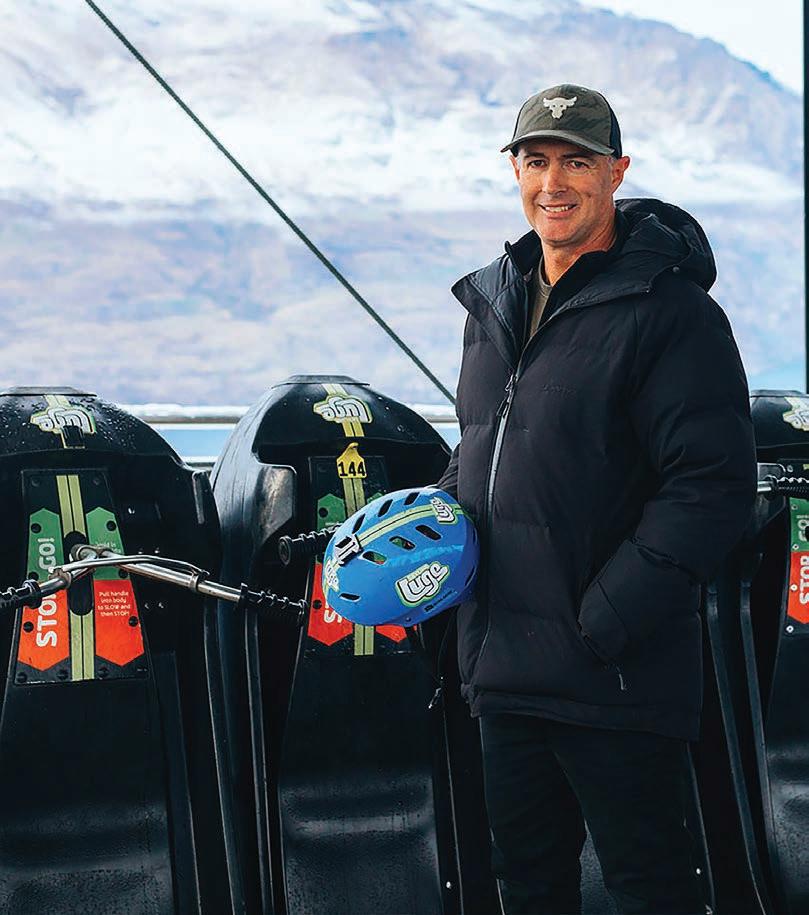
Don’t be scared to talk to your mates – we all cry, it’s not a sign of weakness to ask for help.
Brent Wallace Luge challenge
important conversations around mental health.
“Our goal is to remove the barriers to care and create a more connected and supportive environment for all New Zealanders,” King said.
According to Statista.com, as of June 2020, the youth suicide rate of 15- to 19-year-old young people in New Zealand was about 19 per 100,000 people.
“The most common issue Kiwi youth are struggling with is anxiety, followed closely by depression and stress. These challenges cut across different backgrounds and circumstances, highlighting the pervasive nature of mental health struggles among
young people in New Zealand. Whether they’re facing academic pressures, social expectations, or uncertainty about the future, it’s clear that our youth are in need of more accessible and proactive mental health support,” King said. At time of writing, Wallace had raised just over $2100, a far cry from his goal, but he is sticking to the plan and hopes that he will at least make some difference to support the good work of Gumboot Friday.
“The $100k amount has been a hot topic with people close to me,” Wallace said.
“It was a debate with myself as well. It is a target that I may not get to, but will give it a good crack. Anything from $1 will help in a small way for this cause.”
King said Wallace’s upcoming 24-hour luge challenge is “an incredible initiative” and they will have boots on the ground to support him.
TOGETHER: Brent Wallance says the luge is something that all ages can do as a family or with friends, and that is what this event is about, bringing people together.
Photo: Supplied

“My team and I will be there on the day to support Brent every step of the way. We’re hoping to even join him for a few circuits and keep the energy up.
“His dedication to raising funds for Gumboot Friday and I Am Hope is truly inspiring, and it’s this kind of commitment that keeps the conversation around mental health moving forward. We’re looking forward to being part of this amazing event.”
MORE:
Need help? Contact Gumboot Friday here: https://help. gumbootfriday.org.nz/ Or any other the other organisations below:
Rural Support Trust: 0800 RURAL HELP
Depression Helpline: 0800 111 757
Lifeline: 0800 543 354
Need To Talk? Call or text 1737
Samaritans: 0800 726 666
Youthline: 0800 376 633 or text 234
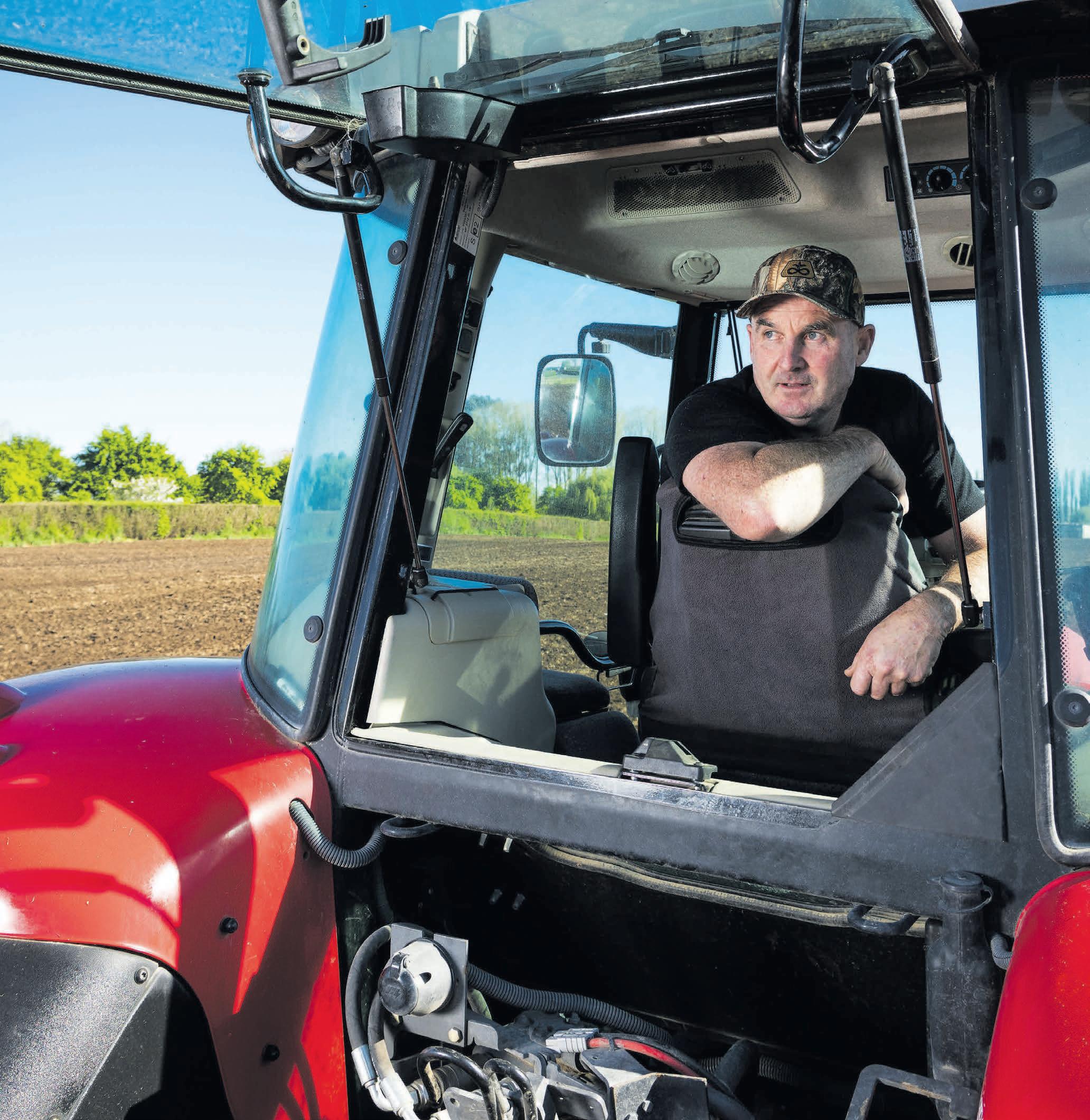




















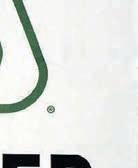







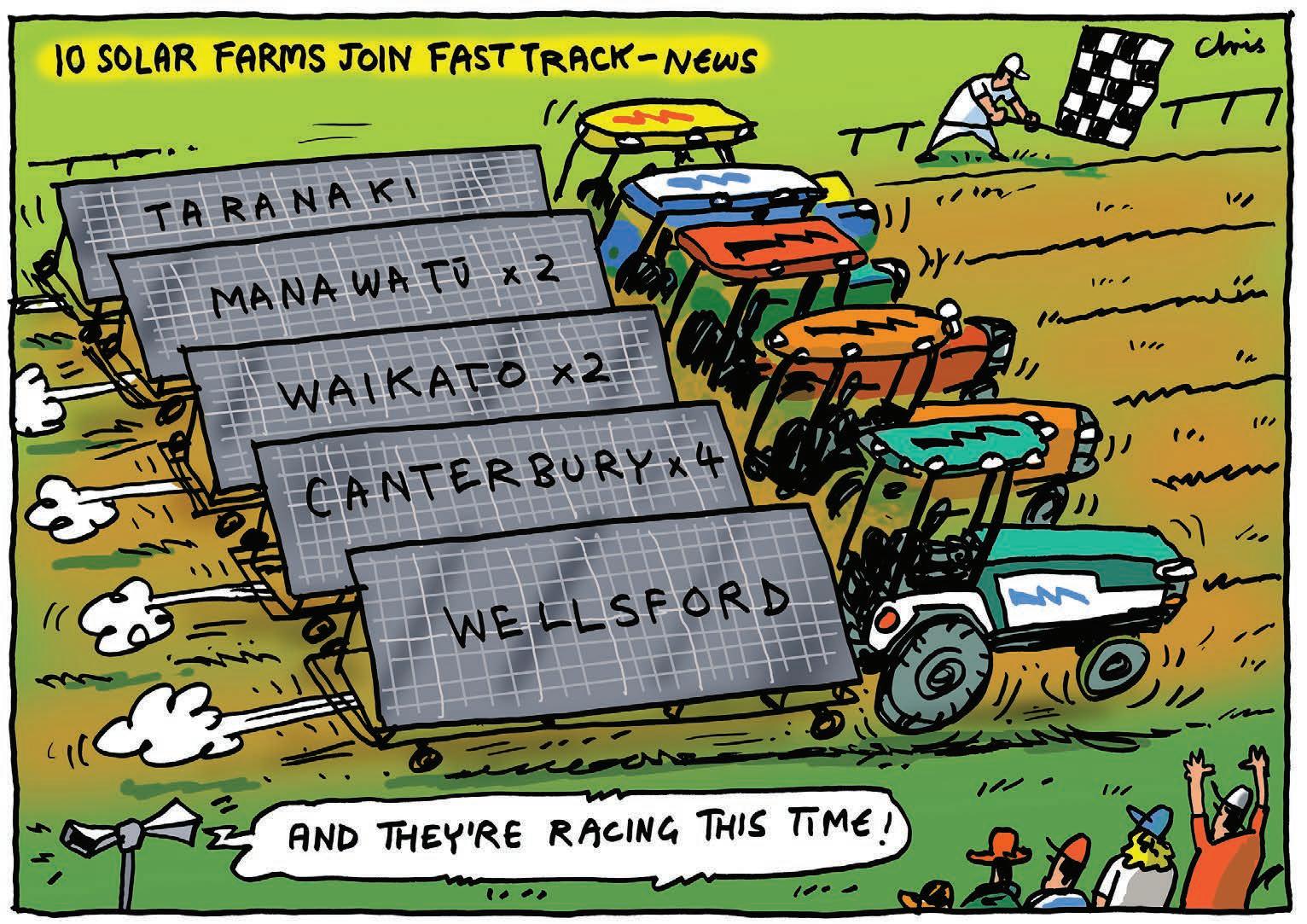

Neal Wallace Senior reporter
GETTING consent for any development in New Zealand has in the past decade or so become increasingly time consuming and costly – and the outcome increasingly uncertain.
The planning template that is the Resource Management Act has evolved into something of a dog’s breakfast, a fact acknowledged by the previous government, which tried to rebuild it.
Dissatisfied with what was proposed, the current government is starting that process over again.
To encourage continued investment until that new legislation is in place, the government last week announced the fasttrack consenting process will apply to 149 projects it hopes will kick-start a sagging economy.
These projects consist of 58 in housing and land development, 43 in infrastructure, 22 renewable energy, 11 mining, eight quarrying and seven aquaculture and farming.
Inclusion on the list is no guarantee that consent will be approved.
An independent panel will consider each application and consult local and iwi authorities, landowners or occupiers, government ministers, the director-general of conservation and requiring authorities.
It is difficult to argue against the proposed projects in housing, infrastructure and energy, the adequacy of which is regularly debated.
Mining, quarrying and aquaculture projects have, however, provoked the usual outcry from environmental groups, who claim the developments will damage the environment and have little scrutiny from local communities.
Those in favour of the policy argue the RMA has become a handbrake on the economy.
There are many examples that support their claim, but one that sticks out is the Project Aqua hydroelectric scheme proposed in early 2000s by Meridian Energy.
Its plan was to divert a portion of water from the lower reaches of the Waitaki river –already modified by hydro schemes – into a canal, and pass it through six power stations before returning to the river. It would have generated enough electricity to supply Christchurch.
Citing uncertainty about whether it would get consented, in 2004 Meridian withdrew the application, having spent $38.7 million plus the cost of land (which it later sold).
A project of that scale and potential impact needs to be carefully scrutinised, but are we balancing the environmental impact with society’s needs?
A lack of rain last winter caused spot electricity prices to soar. Businesses closed and there was talk of a potential electricity outages.
Given the debate on water storage and irrigation, there will be much interest in the inclusion in the fast-tracking group of the Tukituki water security project in Hawke’s Bay and dams on the Klondyke and Amuri irrigation schemes in Canterbury.
Tukituki is already being compared to the Ruataniwha project, which was scuppered in 2017 by a Supreme Court ruling over a land swap deal with the Department of Conservation.
But it will have a completely different focus and intent, despite sharing the same Makaroro river site and benefiting from having many of the consents already approved.
An inference in adopting the fast-track legislation is that the pendulum of what is reasonable for society and an economy to function has swung too far in favour of the environment.
Most people want a lifestyle, health and education services befitting a developed nation.
Achieving that requires us to pay our way – and that requires some human impact on the environment.
Paul Studholme Waimate
YOUR correspondent David Field, in “Usual dogma about forestry”, (Letters, September 30), dismisses the letters of Pippa Hawke and Laurie Collins that point out so accurately the reasons for and consequences of planting exotic trees on productive farmland.
While claiming he has a very good idea of historical land use in this country, he condescendingly says Pippa is too young to know this history and Laurie trots out pro-farming dogma and wild claims about forestry.
Pippa and Laurie are speaking of the reality facing us today, not last century. The recent proposed closure of the Alliance plant in Timaru with the loss of over 600 jobs, due principally to declining sheep numbers, underlines exactly what Pippa stated.
They both provide insightful analysis of planting trees for carbon farming. This simply provides, as Laurie put it, an “easy out” for carbon-producing industries to continue to do just that, with no reduction in overall production of CO2.
David Field would be pleased to provide some “useful” reading about land use for Pippa and Laurie. He should do some reading himself – there is plenty available – of the effects on rural/provincial New Zealand of sacrificing good farmland in a futile attempt to reduce carbon emissions.
R Dawson Clevedon
WE CAN all join with Federated Farmers’ Mark Hooper in welcoming the government’s announcement that the Resource Management Act 1991 will be replaced, and particularly that “enjoyment of property rights” will be central to the new legislation, “RMA replacement now underway” (Federated Farmers, September 30).
The 1991 statute was drafted in haste, outside of normal law drafting procedures, and with novel features of law and extensive use of vague sentiments defying straightforward definition.
The reality is that since 1991 our nation has invested billions of dollars in court interpretations attempting to work out what the legislators actually meant, and in vast bureaucracies of regional and
Continued next page
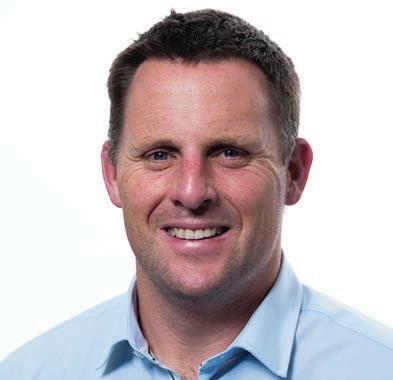
DURING the school holidays I found myself at a pub with friends and our children. To pass the time between pizzas and chips, we played a game: “If I owned a pub, what would I call it?”
Some great names came up, including The Ploughman’s Rest and The Roaring Donkey. One of the players was ChatGPT. Could artificial intelligence (AI) come up with better options than a couple
Continued from previous page
local government producing complicated planning documents to give effect to the main legislation. The Act was touted as making land management “faster, cheaper and more flexible”.
I doubt that even its most fervent fans could say, hand on heart, that it has produced any significantly better standards of land management over the past 30-plus years.
I am encouraged by your reported statement that New Zealand doesn’t need a “Ferrari” model of legislation, but just an “affordable and reliable Toyota Hilux that will get the job done”. Amen to that.
of families assisted by William Speights?
The machine delivered, in a sense. It didn’t come up with a creative or clever pub name, but it did scan the internet and found options to help us pick a winner. For instance, it reminded us that the world’s most famous farmer, Jeremy Clarkson, named his new pub A Farmer’s Dog.
A farmer’s dog, like Ditch from Steve Wyn-Harris’s columns, is a staple in rural life.
My dog team numbers two: Peggy, a woolly bearded collie (Peg for short, as poor whistling skills necessitate fewer syllables), and Midge, a kelpie-heading dog cross.
Working dogs hold a unique place in a farming family. They aren’t quite family pets like a townie’s cavoodle, nor are they mere tools like the AG200 farm bike. Peg and Midge are as indispensable as they can be frustrating.
Within a given morning, the team can influence the direction of a 600kg bull, catch a misdirected ewe, and provide numerous loving looks. They also have a knack for undoing their good work by shaking themselves off next to your wife, who has stopped by the
Why do we always seem to think that our tiny and comparatively poor nation can always produce world-beating standards?
The old saying that “perfection is the enemy of good” is a much better guide to reasonable behaviour.
We must hope that our representative bodies, such as Fed Farmers, can work closely with the government in scoping and drafting new legislation. But land use regulation is fiercely complicated and the job will not be easy.
In the first instance the legislators tend not to know much about how their proposed statutes will work out in the field, and it must be admitted that the folk out at the sharp end tend to know a lot
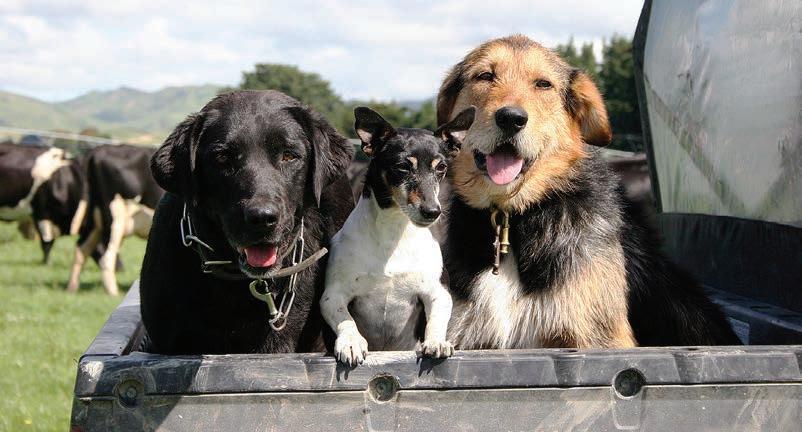
GOOD BOY: Artificial intelligence and other on-farm tech can replace some of what animals and humans bring to the party, says Phil Weir, but not quite all of it.
The simple pleasure of shifting the stock with the dogs is good for me and makes me a better husband, father and farmer.
yards on her way to town.
I would be treading well-worn ground to talk about how man’s best friend can improve mental health with companionship and unconditional love. Or about the benefit of taking both farmer and dog for a walk, rather than just running them with the quad.
I wonder if, with such a simple life, Peg and Midge should be worried about AI and digital technology. After all, it seems to be making ever more inroads into our lives these days. In addition to
about effects but very little about the importance of the form of legislative processes.
The rule of law is of huge importance to the success of the democratic form of government, especially in nations such as ours that have few and pretty vague constitutional rules.
The other end of the spectrum is rule by edict – loved by dictators and bureaucracies everywhere!
The 1991 RMA has become something of a model for other areas of legislation, and, yes, I know your eyes are getting all glazy already, but we all need to know about these things!
The RMA Act was the primary piece of law “enacted’ by our people” – you know, the ones we voted to send to Parliament.
playing the pub naming game with us, new technology showed up at a recent family outing at Hamilton’s tenpin bowling alley. Bellabot, a service robot, brought out the fizzy drinks.
With so much useful tech coming out so fast, will the on-farm versions of ChatGPT or Bellabot (like Halter or E Shepherd) be the end of Peg and Midge?
Even though it got our drinks order wrong, economics tells us that Bellabot is probably the future of hospitality (at least on the cheaper end). Bellabot is specifically designed to get the job done and will never ask for a pay rise or call in sick. The owner of the tenpin bowling alley would be mad not to use Bellabot (at least the next version with the bugs worked out).
As tough as this is to admit, economics will challenge Peg
One might assume they thought they had something important to set out in their new enactment.
But no, they preferred to waffle on about “clean & green”, and nice sentiments about taking this or that into account or protecting this which is “significant” etcetera.
And when you looked to the schedule of definitions to explain, precisely, what they meant, well, many things were undefined.
Instead the Act authorised the cabinet to work out the detail. Or worse, it permitted regional or local government to create planning documents which (one presumes they hoped) would fill in the practical detail.
And anyone who has had responsibility to manage a
and Midge’s place on our farm too. Real-time animal health data and the benefits of a virtual fencing platform like Halter will likely become too advantageous to ignore, despite the many kilometres of wire and batten subdivision already in place. This future work situation will put me in a bind. New technologies like these will be the tools I use to grow and work faster, resulting in efficiency gains. I’ll be in the same spot as the tenpin bowling manager soon – it will be economically irrational for the team of Phil, Peg and Midge to be involved in all of the shifts of the future.
But economics aren’t everything. As I reimagine my farm system, I’ll also need to consider the value of the other stuff the dogs give me and think about how I can keep those bits in the system. Maybe Halter will do 70% of the shifting work, with 30% left to the animals – Peg, Midge and myself?
This type of decision, like a few at our place, considers more than the economics and the efficiencies. It acknowledges that the simple pleasure of shifting the stock with the dogs, is good for me and will make me a better husband, father and farmer. Many of us also know that to be an outstanding farmer you need to be out standing in your fields.
If I really do value that time with Peg and Midge, I’ll have to consciously protect it in a fast-forward world of Halter and Bellabots.
property, a town section, a farm, or (horrors) a quarry, now knows, the 1991 Resource Management Act was all about detailed management of land and other resources, but you, as owner, had no role in the “manager’s” seat! In fact you are in the back seat handing forward the fistfuls of dollars “required” by the true managers, the bureaucrats. It is my belief that the RMA brought us far too close to rule by edict – daily rules, weekly rules, rules tucked away in complex planning documents. I hope that our government and our representative organisations, with their teeth firmly in legislators’ back of pants, can return to better forms of legislation, more in accordance with the rule of law.

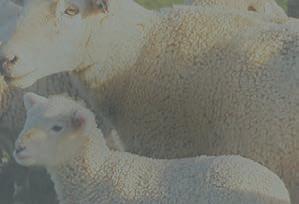


WHEN the Coubrough family employed a small army to help out on the land at their dairy farm in Waikato 18 months ago, one advantage was that feeding the new arrivals would never be a problem.
Trialling dung beetles seemed a no-brainer on the 76 hectare farm between Putāruru and Tirau after fifth-generation farmer Linda Coubrough looked into the advantages.
“We’re all about biological farming as much as we can, so why wouldn’t we want to try these animals that can get dung back into the ground at no cost to us and see what can grow from putting the nutrients back into the soil?
“We’re caretakers and we’ve been here since 1907 so we want to look after the land. Yes, dung beetles are introduced species, but we all come from science backgrounds – I studied geology, my brother Tim did chemical engineering with nanotechnology and biological science, Dad is an engineer extraordinaire, and Mum’s a physiotherapist – so we’re always looking for new things to try.”
The beetle trial, which involved the release of around 1500 of two species of the insects into fresh cow pats in autumn 2023, has inadvertently led to other innovations on the farm, which have had spin-offs in terms of environmental gains as well as money saving.
“Linda’s research led to us discovering that dung beetles are susceptible to a lot of the drenches

so that forced us to go and look at our calves and ask why we were drenching them,” said dad Brett.
“We realised we were doing it because everybody says that’s what you do. When we looked at alternatives, together with our vets, who’re a great source of knowledge, we came to a solution.”
Instead of drenching calves as a matter of course, over the past 12 months regular faecal samples have been collected from calves coming into the yard to be weighed. The samples are taken to Putāruru’s Vetora veterinary clinic for testing, carried there in an ordinary egg carton by one of the family members.
“If there’re no worms, we don’t drench,” said Brett.
“In fact we haven’t needed to in the whole time we’ve been testing.
So that’s $14 a round of testing versus a couple of grand for a bottle of the drench.”
The Coubroughs think their ancestors would be proud of their stewardship of the land. Brett’s great-grandfather was an engineer, and had come across from Scotland, helping build the Edendale dairy factory in Southland.
“Then he was involved in a flax works south of Auckland before moving to the Tirau area where they were doing chaff cutting for horses before these blocks came up for sale and he bought one.”
Brett grew up on the farm and was involved in milking the cows before school until he left at 17 to study electrical engineering at polytech, then taking an apprenticeship as an electrician. He spent many years working all over the globe, eventually settling back in New Zealand with his Dutch wife Joke (pronounced Yoka), working in a pulp and paper mill in Kawerau and living
in Whakatāne where the couple initially brought up Linda and Tim. After his mother died in 2002 Brett had to take over the farm, managing share milkers from afar for just over 10 years before opting to relocate the family and build a house on the land. In 2017 they decided to take control, buying a herd, with Tim and Joke managing the farm between them. Two years later Brett gave up his full-time control systems engineering role to join them.
Having started from scratch, and with new perspectives from different careers, the family decided to invest in technology to help make managing the farm independently more achievable.
One purchase that is still working greatly to their advantage, said Brett, is the Lely automatic calf-feeding system. Monitoring the amount of milk each calf has access to via the RFID ear tag is one reason, he said, the farm’s
I think our ancestors would be impressed, not just with the fact we’re willing to try new things, but that we’re still dairying.
Brett Coubrough Waikato
calves grow at a good rate and remain healthy.
“This system is trying to create as much of a natural process as possible,” said Linda – who gave up her job as a police officer in Auckland after realising she loved working on the land.
“The calves come [to the feeding system] when they want a drink for a feed plan of 80 days, and their first 40 days they are allowed two litres every two hours. From then on, they start to taper off.”
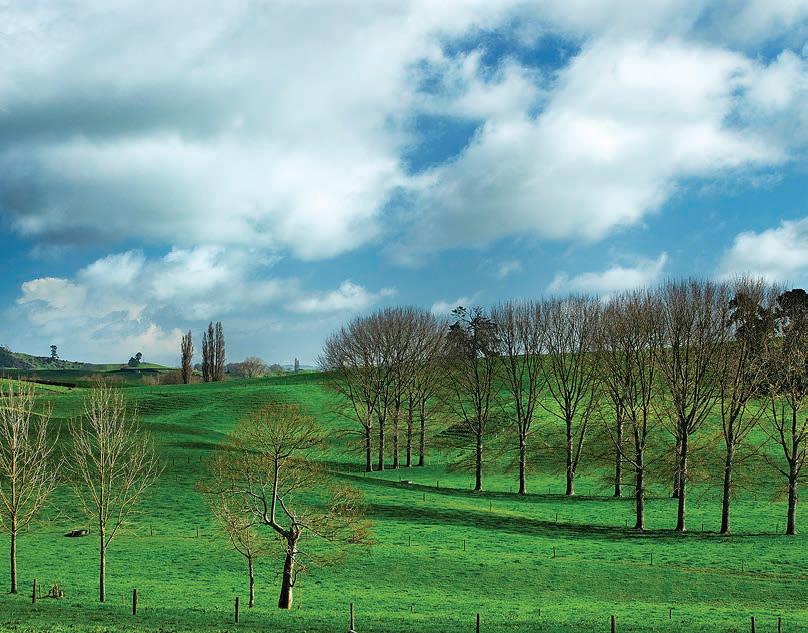


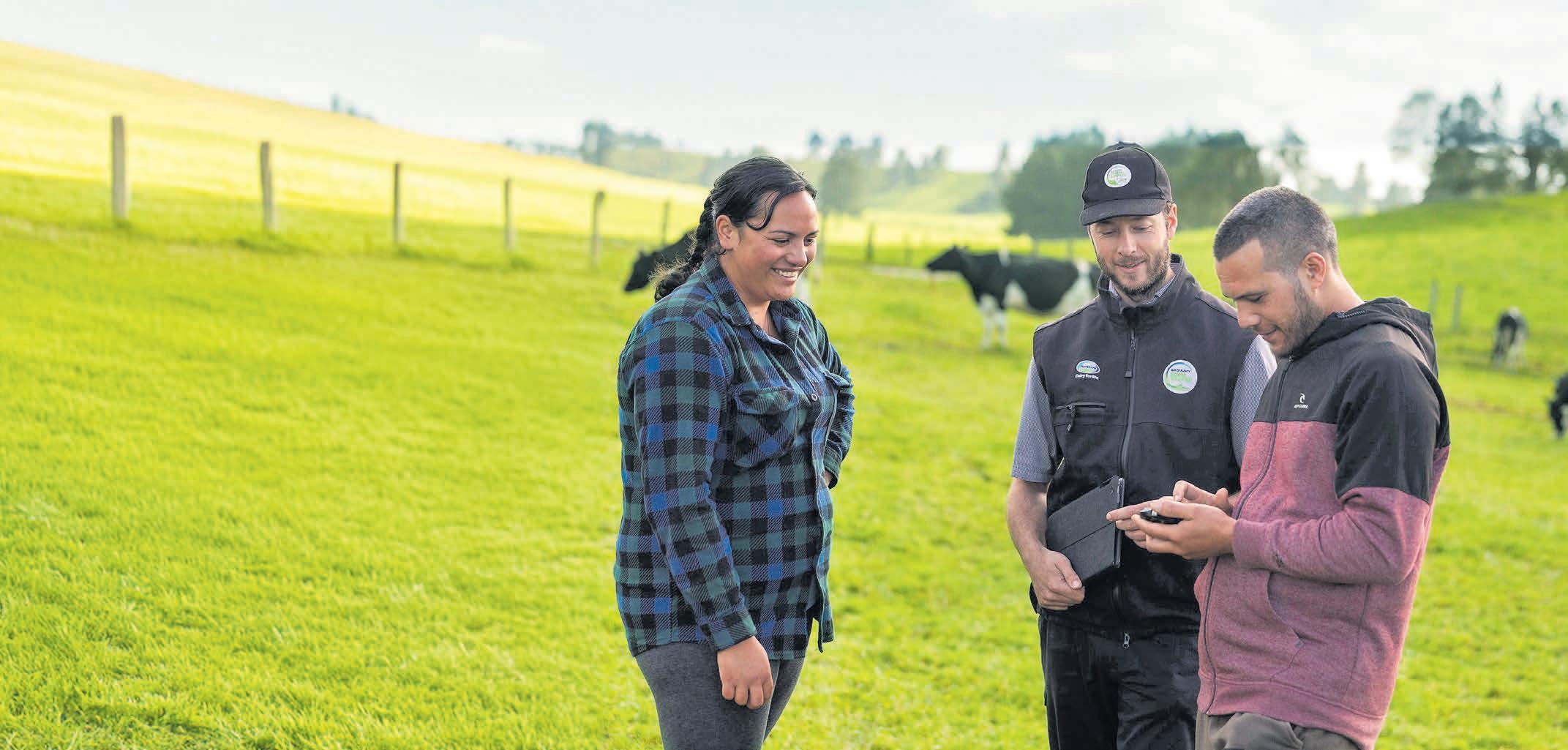
The Coubroughs are currently trialling new teats on the automatic feeders, in conjunction with Milk Bar, which specialises in controlled-flow feeding teats.
“We were finding with the teats supplied by Lely that the calves were feeding at too rapid a rate, about a litre a minute,” said Linda.
“The new controlled-flow teats we’re trialling can operate in any direction and we’ve been studying the data which shows each calf’s feeding behaviours.
“It’s a great improvement. Last year, for instance, some calves were drinking 16 to 18 litres a day, which was way too much. They were just guzzling and not getting that full feeling, or the nutrients. So what we’re trying to achieve with the new teat is that feeling of fullness and to get the proper saliva production as well, for their immunity, and digestive enzymes.
“We’re aiming for three to four litres per minute, which is closer to what it would be if they were feeding on mum. I’m very happy with the teat change, cross suckling has been reduced and the calves have slowed down on drinking speeds to on average eight litres a day, spread out over 24 hours.
“The vets have commented on how shiny their coats are and how healthy they’re looking.”
These days the milking herd of 150 is a Kiwi cross of Jersey and Friesian. Brett’s retired but still does bits and pieces, especially at busier times. Tim works full-


time, including covering all the grass management and herd management, and Linda works part-time, including rearing the calves and milking.
Beef calves are Charolais.
“We raise them until about 100kg,” said Tim. “That’s usually around three months and then they go to the sales.”
Linda particularly likes that the Charolais don’t need disbudding.
“As the genetics improve, my next project using LIC is to breed more hornless replacement animals,” she said.
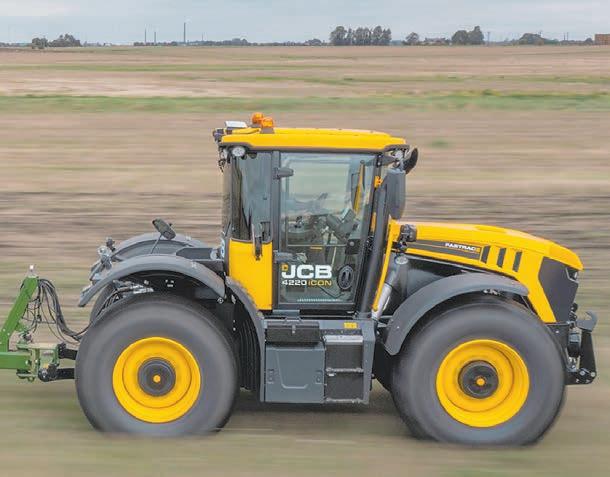
Collars are used to relay health data and for mating. When last year one animal seemed to be suffering, again they worked with their vet to come up with a solution.
“Blue cow, as she’s now known because we bought her a blue coat to help with her condition, had terrible eczema. With the vets’ help we started regularly testing spore counts and managed her condition by adding zinc to her diet. The dosage depends on the spore count levels.”
The farm now acts as a sampling
centre, with its pasture spore counts published in the veterinary practice to act as a guide for other local farmers.
Earlier this year the property was officially acknowledged as a Century Farm after Linda’s love of history led to the submission of an application for recognition of the longevity.
“It was backdated as the farm’s actually 116 years old,” she said.
“We wrote about our forefathers and it’s a direct Coubrough line, which is actually quite impressive.”
The next goal is to get to 150

years. In the meantime it’s hoped the dung beetle colony will become so well established it will have also expanded out to neighbouring farms.
Said Brett: “It takes around five years before we’re likely to see any real impact of the work the dung beetles are doing. I think our ancestors would be impressed, not just with the fact we’re willing to try new things, but that we’re still dairying and we’ve been supplying the same company all the way through. I’m certainly pretty proud of that.”
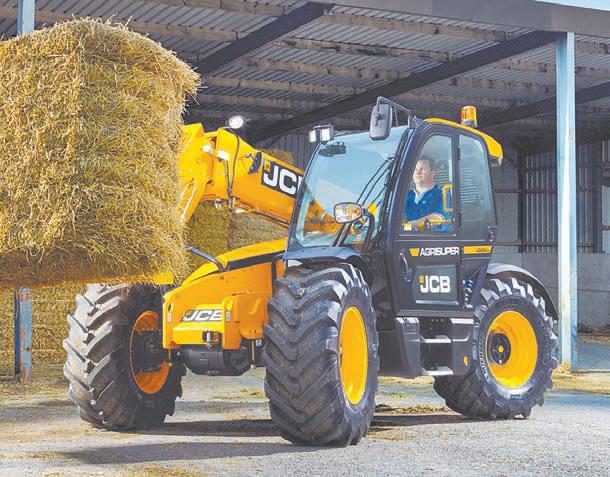
JCB SERIES III LOADALL
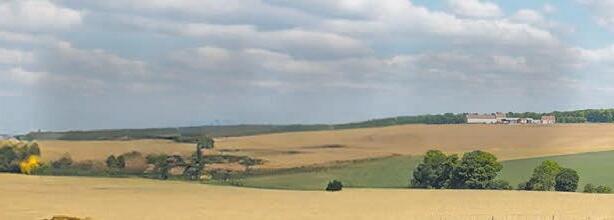










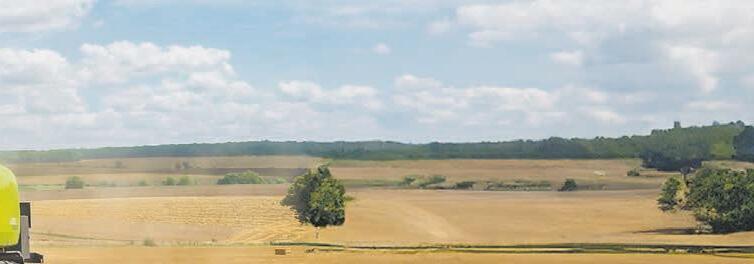








Fonterra’s Farm Insights Report is becoming a valuable benchmarking tool when it comes to planning.
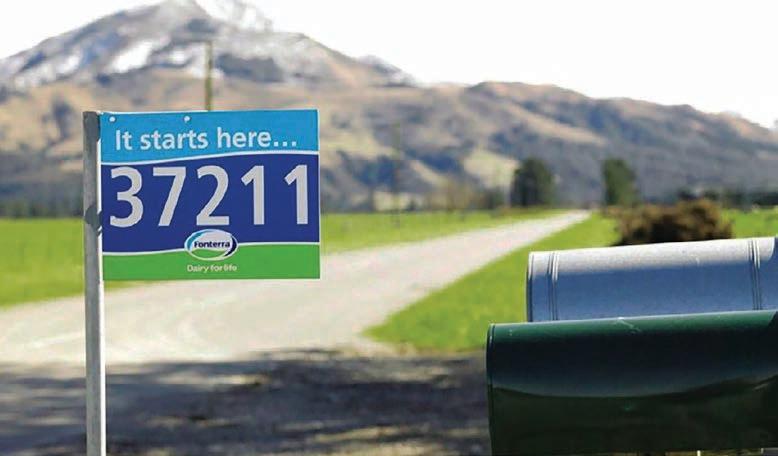

Gerald Piddock NEWS Trends
FONTERRA’S annual Farm Insights Reports are becoming a key management tool as farmers use the findings for decision making and benchmarking.
The reports, which are tailor made for every Fonterra farmer, allow farmers to view their performance and identify areas where they can perform better.
They include information such as what products were made from their milk, as
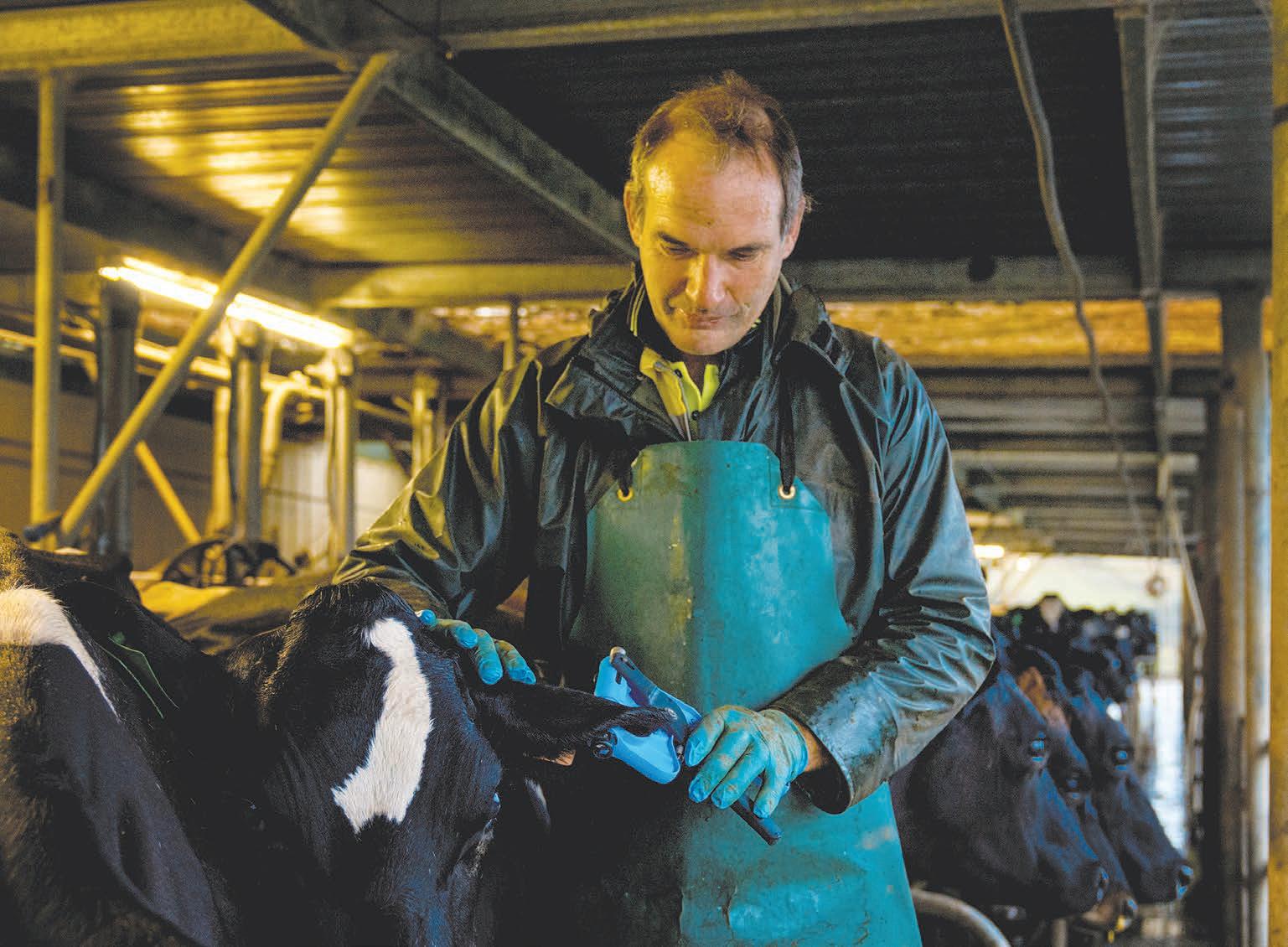
Conti nue id enti f yi n g you r b est g en eti c s with G en e M a r k
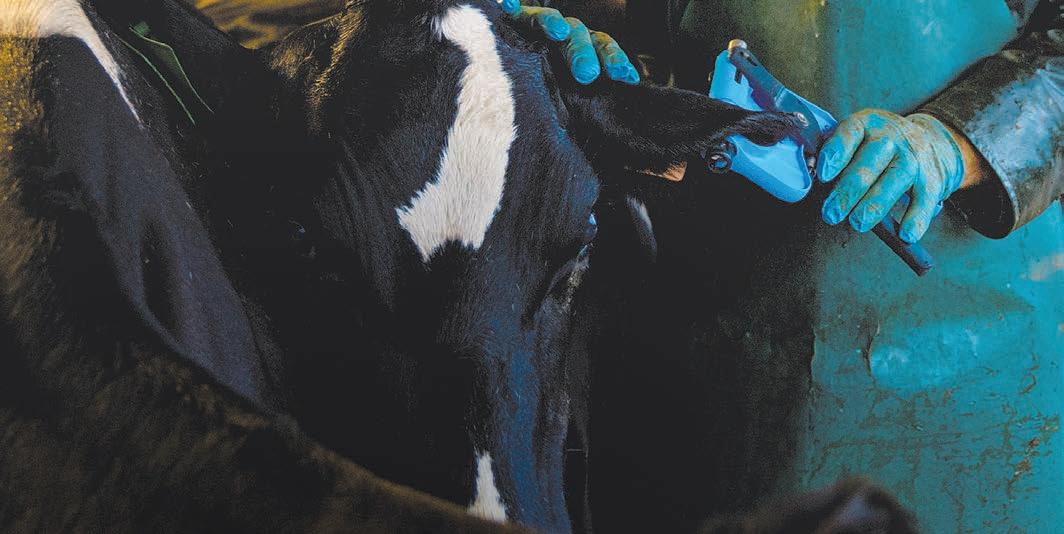
You’ve always tried to breed from your best, and you already know the power of genomics. Through our new GeneMark® Genomics ser vice, you can continue to identify superior genetics with increased reliabilit y at a younger age
GeneMark Genomics takes the guesswork out of matching calves to parent s while accessing genomic data, adding precision to your animals’ breeding values at a more cost- effective price
All of which helps yo u fast-track your herd’s genetic gain
So continue breeding from your best and building your conf idence with GeneMark Genomics
Tal k to your Agri M a nager today or vi sit lic.co.nz /genema rk
well as key on-farm data on the farm’s environmental record, its production, inputs used, animal health, its reproductive performance and feed and animal efficiency.
Some of the data used in the report is collected automatically from Fonterra while the rest comes from the farmers’ dairy records and from third-party industry data.
It is the fourth season they have been distributed to farmers.
Fonterra’s on-farm excellence director, Mike Hide, said the information is benchmarked, which allows the farmer to see where they have the greatest opportunity to improve.
Hide said the report was designed to avoid farmers being “drowned in data” by presenting it in a way that highlights areas that are good and where they can focus their attention.
The reports are designed to complement the farmer’s Farm Environment Plan. The number of farmers who have FEPs – either from third parties or as part of Fonterra’s Tiaki programme – is now in the early 90% range.
With the vast majority having got these FEPs, the focus is turning to using these plans as tools for implementing their goals, he said.
“You can think of the Insights report as that first stage in the conversation that gets the farmer thinking about what the opportunities are on their farm and our team is there to have conversations about what that might mean and help guide them in the decisions they might make.”
It creates a very visual display of stuff that can be quite technical.

There's always room for improvement

Craig McBeth Canterbury
Farmers enjoy the report because it gives them clear guidance on their farm.
“This is not a tool that’s there to tell farmers what to do.
“It’s a tool that’s there to help them, understand where the opportunities are in their farm system. They are then the ones who make the decisions around what they want to focus on with the relevant support.”
Canterbury dairy farmer Craig McBeth said the reports give him benchmarking data both against his peers but also internally within his farming business.
McBeth is involved with several farming operations, including a syndicate farm, and is chief executive of Dairy Farms NZ, which has seven farms in the region.
“What specifically the Farm Insights Report is good at is it creates a very visual display of stuff that can be quite technical.”
The report, like Overseer, helps start those conversations around difficult subjects like GHG emissions, he said.
“We use this information to inform the wider conversation about, ‘This is what a historical performance has been like’, ‘This is how much grass we’ve calculated we must have grown and we must have eaten’.
It allows them to discuss what better looks like and what changes in behaviour or farm management are needed, he said.
“I use the word ‘literacy’ around about this a lot. It improves our literacy around environmental stuff. All these key parameters are in here and therefore because we understand it better, we move on to the next level of conversation, which is higher and better than it was before and that’s where the value is.”
Staff reporter ON FARM Dairy
ACOUPLE closing in on their ultimate farming dream are taking their first steps towards another farming ambition – to own a line of registered pedigree Holstein Friesians.
Celene and Adam Taylor are sharemilking 420 cows for Adam’s parents, Kevin and Lily Taylor (Malvern), on 177 hectares at Tirau. In their 11th season on the farm, they are regularly surpassing their target of 150,000kgMS, and aiming for 160,000kgMS.
Their 420-strong herd is made up of 60 Jerseys, 226 registered Holstein Friesians and 134 crossbred cows.
They first registered their Holstein Friesian cattle in February 2023: 82 older animals and 144 2022/23 animals, as well as all their supplementary animals.
Celene grew up in Tirau township and worked in hospitality after leaving school, and Adam grew up on his family dairy farm at Te Puke and was a builder by trade. His family still owns the Te Puke farm, which has been converted to a beef block on which the couple run all their young stock.
The couple decided to go dairy farming together after Celene fell pregnant with their eldest child, Arya.
“We thought it would be a good opportunity to get into the industry while we were young and to live a better lifestyle for our family,” Celene said.
Adam and Celene worked on the Te Puke farm before moving to the Tirau farm in 2013. They work on the farm full-time, and have a full-time staff member as well. The
farm – which sits on top of a hill –is System One, relying on excellent pasture management to ensure the cows are fully fed.
“When we first bought the herd, it was all Holstein Friesian,” Celene said.
“Working within a System One farm we decided to crossbreed the majority of the cows to increase milk production.”
The herd has been in the family for three generations, and has been a closed herd for 30-plus years.
Mating of the herd started on October 1 last season, a little earlier than usual as they had a few embryo transfer cows. They did eight and a half weeks of AB, before finishing the last two weeks with bulls.
Although Celene has been able to choose around 30 straws of her preferred bulls to put over her best cows – including Meander Shot Alibi-ET S3F – most of the herd’s genetics are chosen by CRV, as it is a progeny test herd.
My aim is to get as many pedigree Holstein Friesians in the herd as we can.
Celene Taylor Tirau
Some of the bulls picked by CRV in the last mating include Busybrook A Butterbox S2F, Ambzed Alibi Buyback S2F, CRV Delta Drone PP-Red, Muritai Hustler Watchme-ET and Waiau Alias Prescot-ET S2F.
“I’m looking forward to seeing what sort of animals we get from these bulls,” Celene said.
“Although most of our bulls are picked for us, there are
Farm Facts
Owner: Kevin & Lily Taylor
Sharemilkers: Celene & Adam
Taylor trading as A & C Taylor
Dairies Ltd
Location: Tirau, Waikato
Farm size: 177 hectares
Cows: 420 cows (226 registered Holstein Friesians)
Production: 160,000kgMS Stud name: Malvern
definite traits we are looking for – primarily milk production and conformation.”
The farm’s calving start date is July 1, and although Celene admits they haven’t yet identified any cows with particularly “special” qualities, there have been some that have definitely stood out.
“We have used Woodcote Hot Charlie S2F in the past, and have had some really good heifers out of that bull,” she said.
“Our children do Calf Club and there have been several animals we have chosen based on their awesome conformation and temperament.”
The couple have three children, Arya, 11, Mya, 9, and Harrison, 8. They have all competed in Calf Club and Arya in particular has started to demonstrate a real interest in showing.
“Arya attended the Youth Camp in Feilding in January, and she just loved it,” Celene said. “She is really getting into the showing side of things and we are excited to support and encourage her.”
Celene and Adam have an exciting development in the pipeline for the 2025/26 season.
“We are looking at farm ownership,” Celene said. “It has always been a dream of ours, and the beautiful thing about the farm we are currently on is that it was
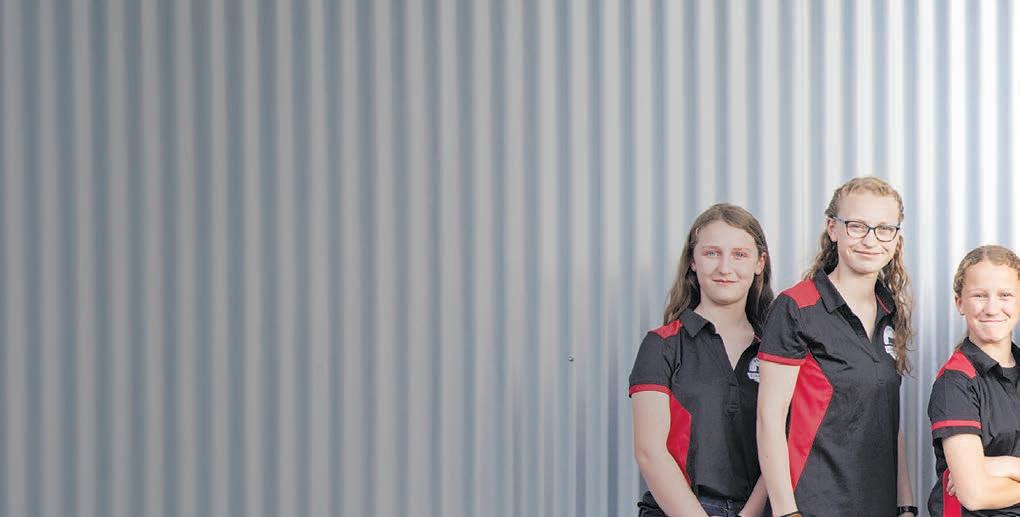
André de Leeuw
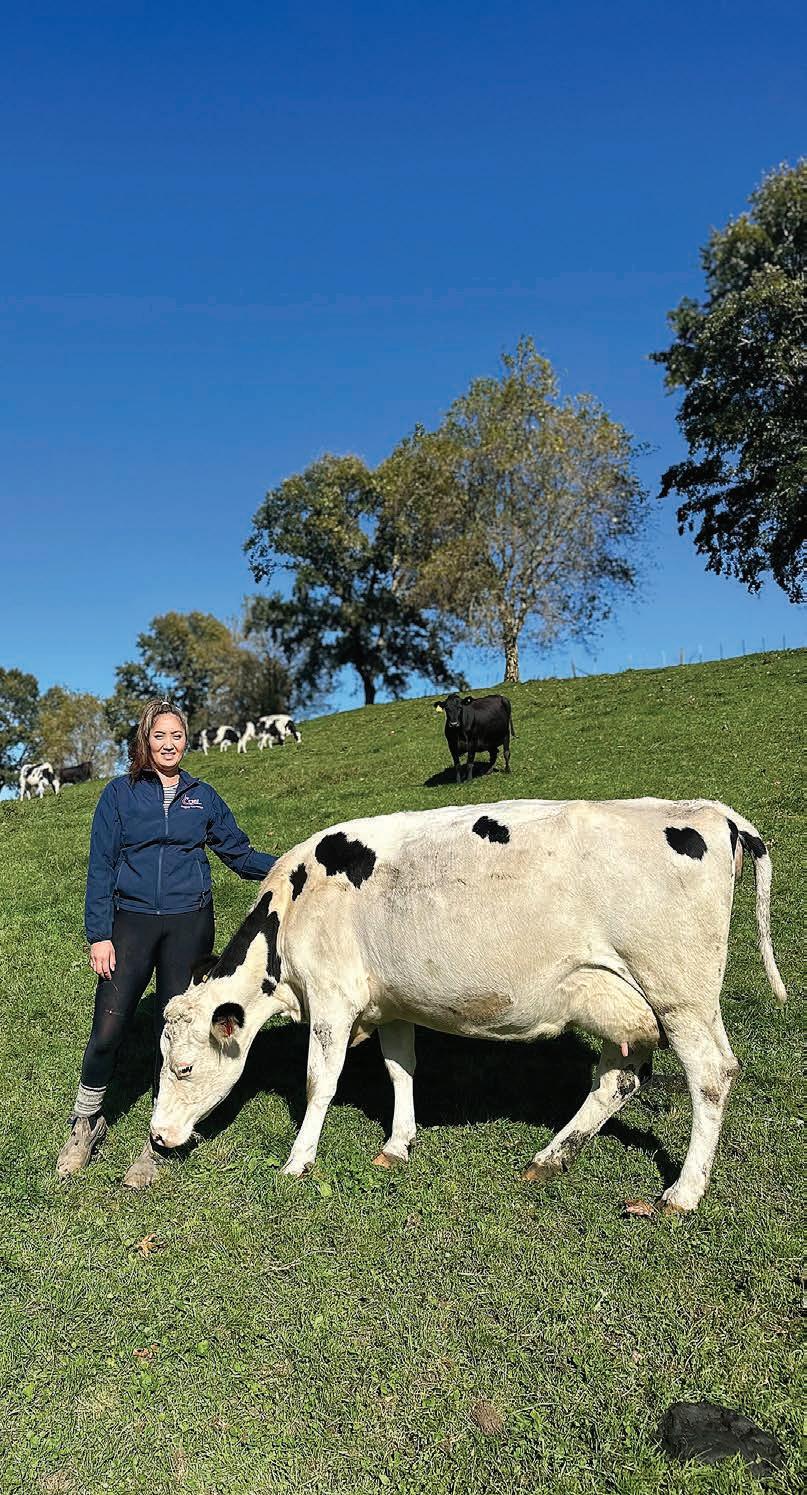
originally Adam’s grandad’s farm. We are happy it is going to stay in the family.”
Celene said there is a lot to love about the Holstein Friesian breed.
“I have always loved the look of them,” she said. “I like their nature, too – they are easier to
deal with than some of the other breeds we’ve had. They are also more robust, lasting a bit longer. “We will definitely continue to register our Holstein Friesian animals. My aim is to get as many pedigree Holstein Friesians in the herd as we can.”
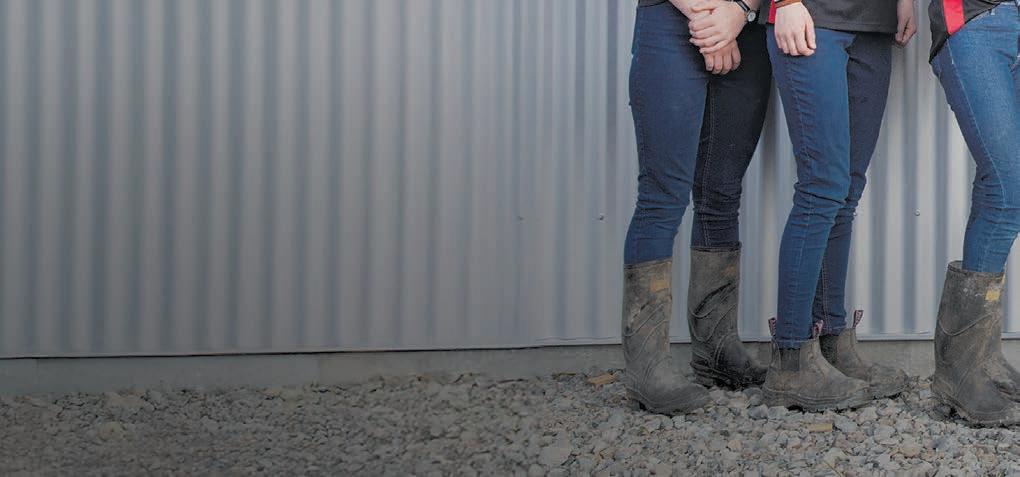





















It ’s the last week for you to consider who has your vote in
recording of D air yNZ’s ‘Meet the Candidates’ webinar are available online at dair ynz co nz/elec tions
governance experience, deep agricultural roots, and am a hands- on farmer





Voting closes this Thur sday, 17 Oc tober, at 12 noon, so take a moment to learn more about the three candidates v ying for t wo vacant roles and decide who has your vote This year, Jacqueline Rowar th, Richard McInt yre and Kylie Leonard have put their names for ward for this oppor tunit y The successful candidates will help ensure dair y farmer s and the dair y sec tor have a positive future ahead of them
Each candidate’s full profile and individual video along with a
Jacqueline Rowar th, Tirau

Dair yNZ resolutions for ratification
Outside of the candidate vote,
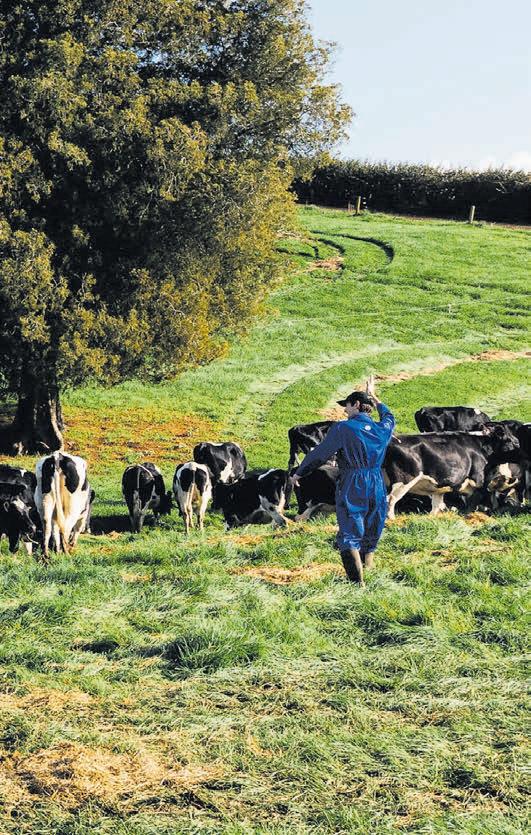


Financial viabilit y, science, communication and education – these have never been more impor tant for agriculture on farm, in towns, and in the corridor s of power
Richard McInt yre, Levin
I’m standing for D air yNZ because
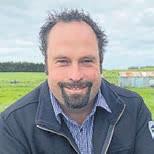
I’m passionate about dair y farming I can see the challenges we ’ re facing as a sec tor, and I believe I can make a real contribution and difference around the board table
Kylie Le onard, Taupō
I am honoured to stand for D air yNZ I have ex tensive

there are four resolutions for farmer s to ratif y in their vote pack , including the appointment of Independent Direc tor D avid Hunt and changes to the Rules of D air yNZ to reflec t new regulator y changes and capture recent feedback from farmer s
Fur ther detail s on the resolutions are available in the Notice of Meeting booklet in farmer voting pack s and online
Voting closes at 12 noon on Thur sday, 17 Oc tober 2024
More information is available at dair ynz co nz/elec tions
Join us at our AGM in Canterbur y
This year we are excited by the oppor tunit y to connec t with
Take
oppor tunit

farmer s in the Canterbur y region, and our AGM is being hosted at the Clear water Golf Club in Christchurch on Tuesday 22 Oc tober
We are pleased to have secured a uest s eaker and warml
g p y welcome the Vice - Chancellor of Lincoln Univer sit y, Professor Grant Edwards BAgr Sci (hons), DPhil
Light refreshments and drink s will be available from 6:30pm, allowing the oppor tunit y to net work with other farmer s, D air yNZ staff and board member s prior to the AGM commencing at 7pm
The AGM will present key highlights from the 2023/24 year, including how D air yNZ invested lev y funds last season, a summar y of the annual audited financial accounts and an over view of D air yNZ’s strategy and fut ure investment priorities
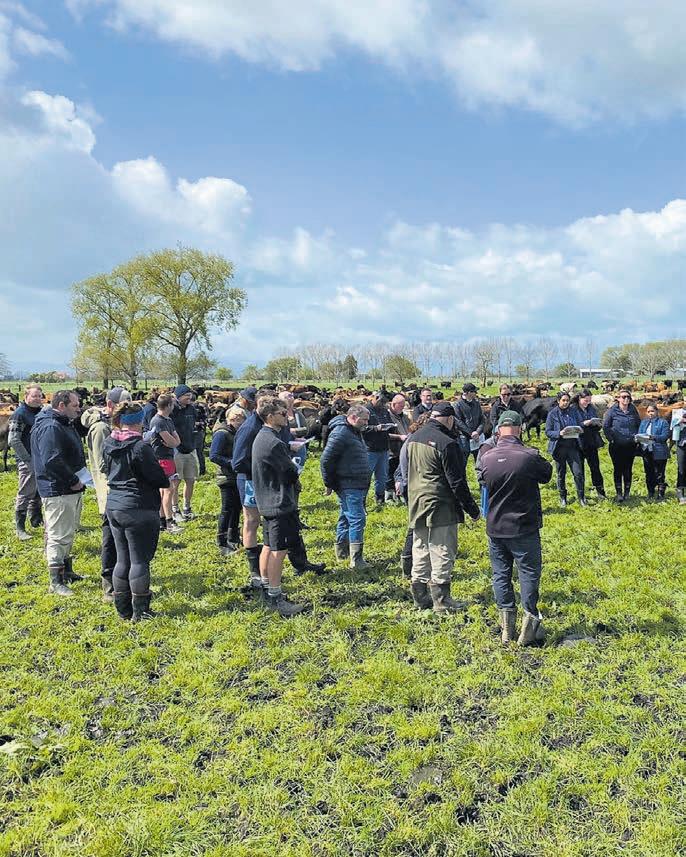

Gerald Piddock NEWS Dairy
TATUA paid its farmers $10.50/kg milk solids for the 2023-2024 season after the small dairy co-operative earned $497 million in income, with earnings available for payout of $184m.
Its overall earnings equated to $12.20/kg of shareholder-supplied milk solids, before retentions for reinvestment. Tatua retained $1.70/kg MS for reinvestment in the business – the equivalent of $26m.
The indicative cash payout forecast for the current season is $9/kg MS for the company, which is located at Tatuanui near Morrinsville.
Last season had a challenging start, marked by a wet spring and limited sunshine hours, which adversely affected pasture growth and quality, and therefore milk production.
However, the El Niño-induced drought that was forecast for later in the season did not eventuate, and instead, regular summer rainfall led to good late-season pasture growth. This enabled production to be maintained, increasing full-season shareholder supply to 2.57% above the prior season.

It’s been a new record for each of the last 10 years.
Brendhan Greaney Tatua
“We’ve had a good year, a good, robust result in a normal year,” Tatua chief executive Brendhan Greaney said. Its bulk ingredients division of caseinate, whey protein
concentrate and anhydrous milkfat fell in revenue after the unprecedentedly high protein commodity prices seen last year fell to more normal levels.
In the previous year, those commodity prices, especially caseinate and WPC, spiked to record, unsustainable levels, where at peak caseinate was selling for US$22,000 a tonne – twice its long-term average of $8000$10,000/t, Greaney said.
“We saw it coming because we knew those prices couldn’t stay up there.
“We knew they were going to come off, and they did.
“The great thing is that the value-add side of the business is continuing to grow year on year for the past 10 years and will continue to grow this year as well.”
The combined revenue from its specialised nutritional products, foods, and flavours divisions was its highest ever, reflecting a continued focus on developing these less-commoditised product offerings.
“It’s been a new record for each of the last 10 years. That value-add

Annette Scott TECHNOLOGY Dairy
IN A first for New Zealand, a Canterbury dairy farmer has successfully integrated a manure decanter environmentenhancing system into his farming operation.
Farming at Chertsey near Ashburton, Craig Copland is pioneering the GEA manure decanter system, traditionally used in wastewater and wineries, to enhance environmental sustainability.
He and his brother Wayne have successfully integrated
the manure decanter system into their farming operations with the system significantly improving pasture irrigation on the farm.
The farm, which has been in the Copland family for more than 140 years, includes dairy, Black Origin Wagyu beef, cropping and an apple orchard.
With 1500 cows milked through a 60-bail GEA rotary, the System 5 dairy operation houses 600 cows and 1000 Wagyu beef animals indoors, producing a large volume of effluent.
Sales engineer and business development for GEA’s separator and flow technologies Daniel
Geldenhuys said the company is committed to providing innovative solutions that support sustainable farming practices.
Before implementing the GEA manure decanter, Copland was using a GEA screw press separator but faced challenges with irrigation nozzle blockages and high levels of potassium and phosphate in the paddocks.
The GEA manure decanter, adapted for use on Copland’s farm, separates solids from liquids, creating nutrient-rich fertiliser and irrigation water.
The clarified liquid is fed to a nearby irrigation pond and the
solids are dropped underneath the decanter into a concrete bunker.
The GEA system has reduced irrigation nozzle blockages and allowed for more efficient use of natural fertilisers.
“Since installing the decanter, we have seen a dramatic increase in irrigation run time from blocking nozzles in less than eight hours to now-endless running times, along with improved pasture growth and reduced synthetic fertiliser use,” Copland said.
“The decanter system has saved time and money on the farm.”
business keeps climbing,” Greaney said.
Tatua’s year-end gearing (debt divided by debt plus equity) increased to 23% from the prior year low of 16%, reflecting the funding impact of the foods plant capacity expansion.
Looking ahead to the current season, Greaney said commodity prices are looking strong without spiking to 2022 levels. Nutritional powders is growing steadily and its flavours business has greater capacity to grow.
Its food business had more demand than capacity – which was the main reason it is spending $85m on doubling the size of capacity for that business.
Work is underway on that expansion, which is expected to be ready by August next year.
Greaney said the expansion means that Tatua will not add to its 101 existing shareholders because it will be using more effectively the milk solids it has.
“What we are doing is reprioritising the cream ... into the value-added business. We’ll make less commodities and more value add with the same amount of cream coming onto the site.
“It’s making more of what we know how to make, on plant that is substantially what we already have, to meet demand that we currently can’t supply.”
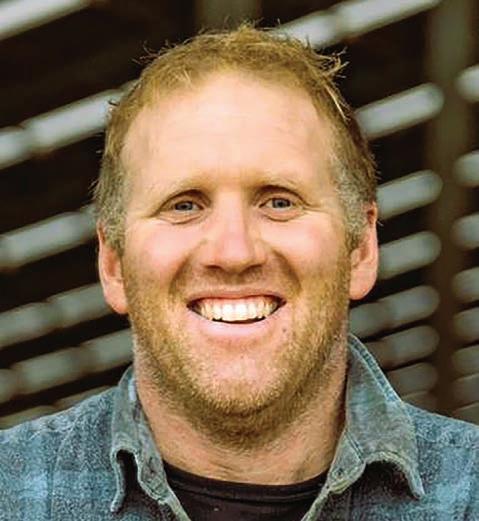



Cheyenne Nicholson PEOPLE Farm management
LOOKING out the window from her office in her Norsewood home, Charlotte Heald has the perfect view of the heifers springing up and not far off calving. The farm is coming to life with colour again in the first days of spring, it’s picture-perfect. But not by accident, by spiralling up.
“It’s a real honour to be a farmer, but especially at this time of year. I feel so grateful to be sat here, looking out at all this. A past version of myself would be so happy to see me here,” she says.
Charlotte and her husband Russell run an award-winning 170 hectare, organic-certified, regenerative dairy farm in Norsewood. Charlotte, originally from a sheep and beef background, got into dairying when she met Russell and the rest, as they say, is history – but there have been plenty of bumps in the road since.
“I think back to those early days, Russell was working such long hours, we were raising a family and were under a lot of pressure, we probably both got burnt out. It was a low-payout year and we just felt like we were so far in it that we couldn’t get out; we had to find a way to farm our way out of it.
“I got unwell and got my rheumatoid arthritis diagnosis and that’s when we realised something needed to change.”
They adopted once-a-day milking and started using some aspects of biological farming, which saw the beginning of their regenerative and organic farming story.
“We were learning so much about the linkages between what
you do on the farm, human health and the impact the way you farm has on all the systems. We started with some small changes, saw some positive results, and thought, ‘Ah, we’re onto something.’ I call it spiralling up.”
Her health journey with rheumatoid arthritis and background in rural nursing provided the foundation of her health coaching business but an underlying desire to help people has been the key to its growth and success over the last six years.
With a mix of one-on-one sessions and group sessions both in person and online, one of the key areas of focus in what Heald offers is in self-care, wellbeing and connection.
“One of my real passions is getting women to put themselves first. We don’t do it nearly as much as we should and it has a really profound impact on our lives.
Russell actually had to encourage me to do this this year! I wasn’t going to play hockey this year so I could focus on the kid’s sports, but he said ‘If not now, then when?’”
Time and time again she was hearing from clients and her community that despite women being busy in their lives, they were lacking the deep, trusting conversations with people that make navigating life that bit easier. So she began running a local “women’s circle”.
“Mostly it’s a lot of being open to listening, sharing and letting those that need to talk, talk. If a person finds a resolve in speaking then it’s a good result, and that’s what makes it powerful. It’s such a special time, a lot of laughs, and a few tears – it’s something women really want and need.”
Over the past few years, the Healds have started opening up
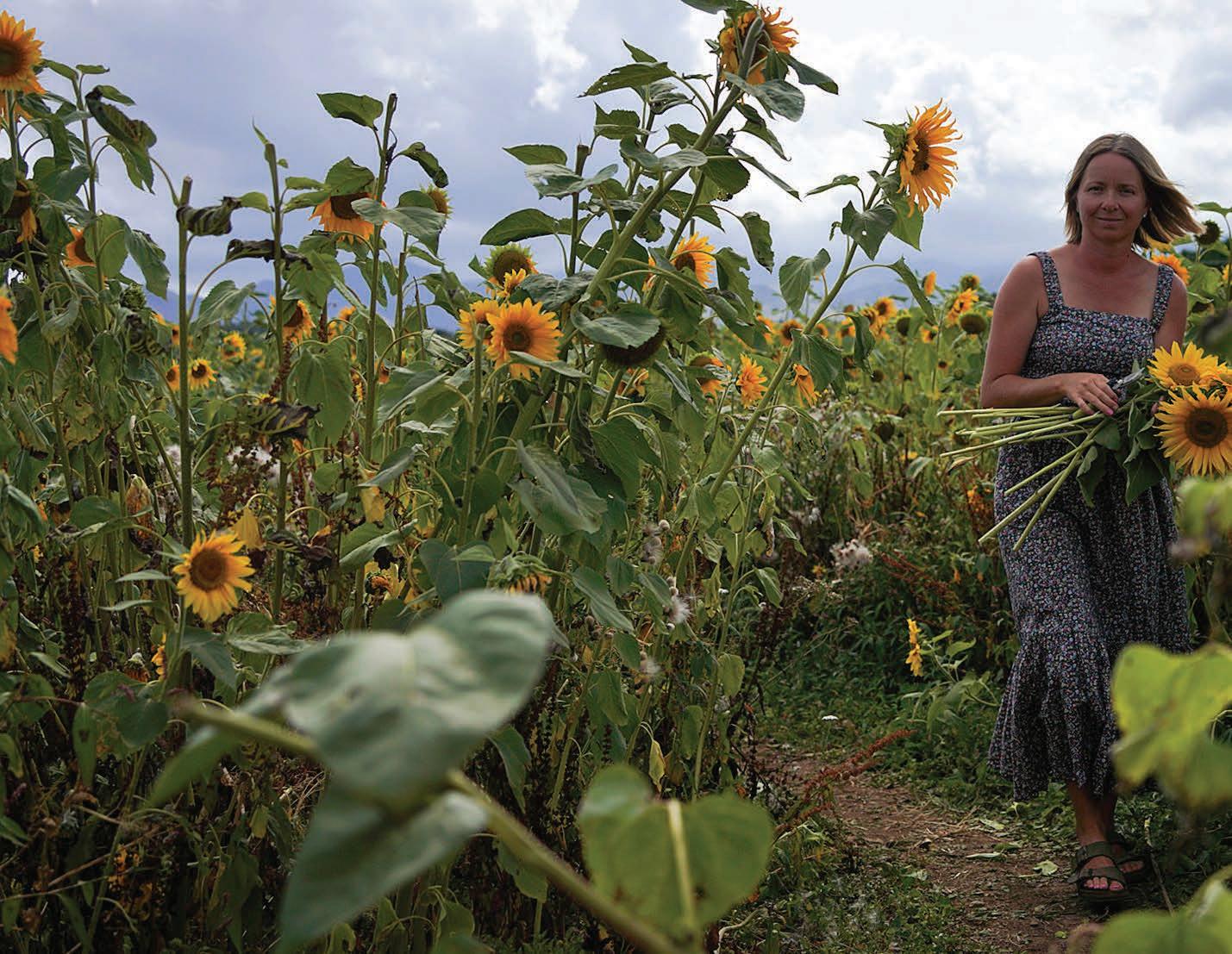
We were learning so much about the linkages between what you do on the farm, human health and the impact the way you farm has on all the systems.
Charlotte Heald Norsewood
their farm for open days, hosting events like yoga in the sunflowers, picnics and more. It’s been an opportunity for them to share their story and show others what they’re doing and the impact that’s having.
“Sometimes, you just need to come and see things being done to get an appreciation for it. Come and see the cows grazing in our diverse pastures, see how we manage things, feel the soil.”
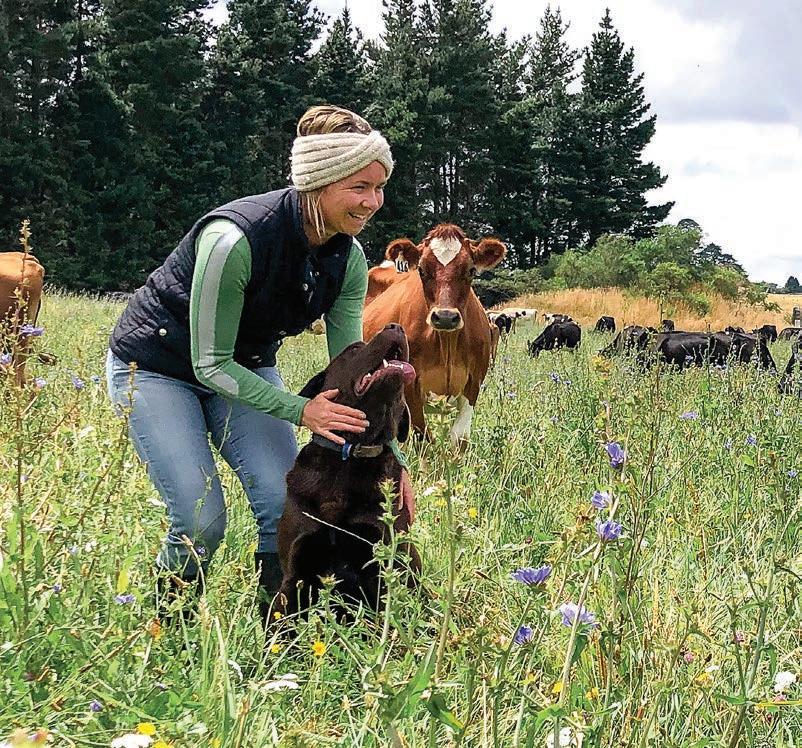




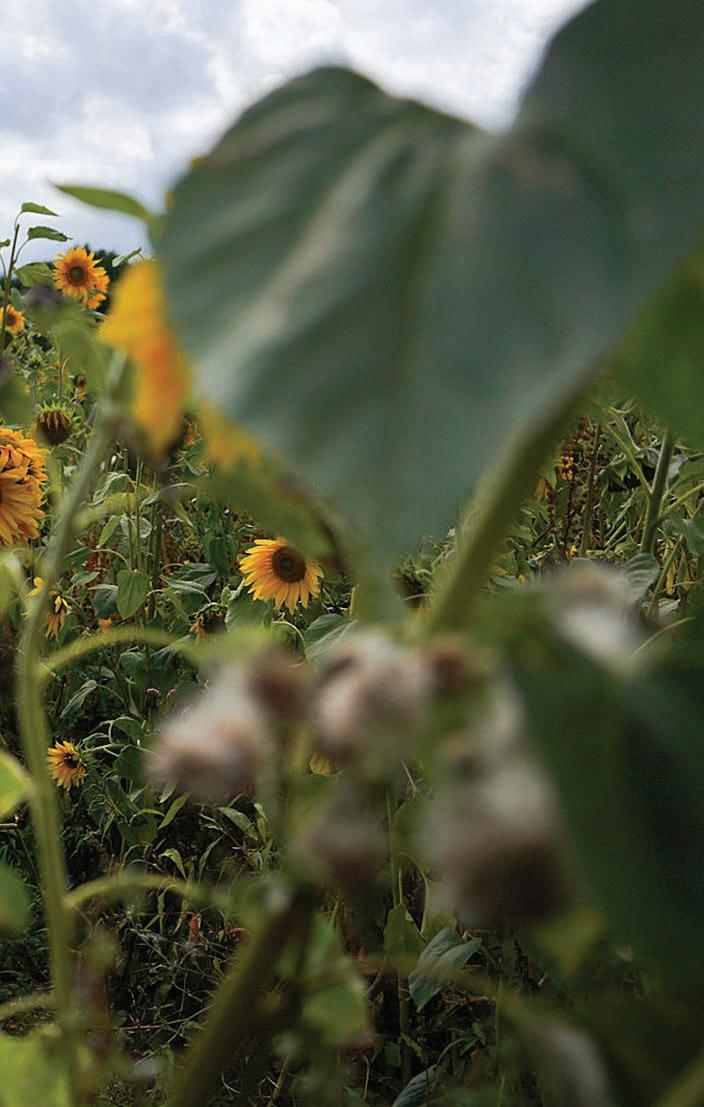
While the farm and the business are passions for the Healds, everything centres on family. With three children, Isabelle, Henry and William, life can get busy with homeschooling and the whole family being into sports and a number of other activities during the year.
“I’ve stepped back in terms of where my commitments are. I have a full life and I choose to do a lot of things but sometimes if you’re ‘busy’ all the time, you’re not actually being productive. By slowing down and not filling all the gaps in my schedule, I’m more productive.”

Heald stresses the importance of their community in being able to manage it all, too. With connections made through farming, homeschooling, health coaching and sports, she said they’re lucky to have such a good support system to lean on when needed and give back to when they can. Sitting at her desk and watching the heifers graze, Heald reflects
on their journey and can clearly see the web of connections of the changes they’ve made to their lives and farm and the benefits it has had to her health and wellness.
“At a certain point in my life, I couldn’t see any possibility of healing myself. But more recently I’ve been reflecting and have got to a place where I have been able to acknowledge with a lot of gratitude that I have achieved a lot
of healing in my body from where I was five years ago, to the point where I consider myself ‘healed’. It’s been a lot of work to get there, and I respect my body so much more now.
“I look at my health journey and how it has been neatly woven into the changes we’ve made on farm and smile because it makes sense, everything begins with soil health.”


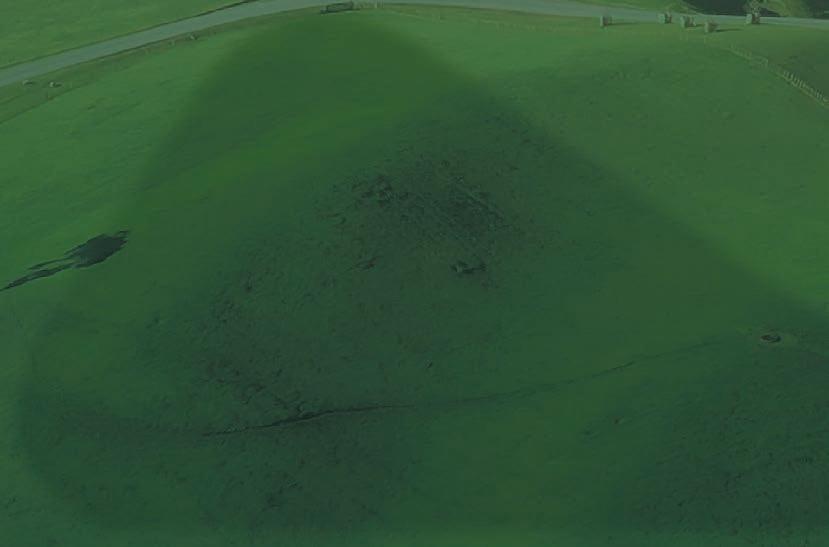



TUAKAU VISIT: MPI director-general Ray Smith, second from left, with Julie Collins, deputy director-general Policy and Trade at MPI, Tom Breen, Ruminant BioTech chief executive, George Reeves, Ruminant BioTech head of intellectual assets and strategic partnerships, and Kirsty Bardoul, Ruminant BioTech head of research studies.
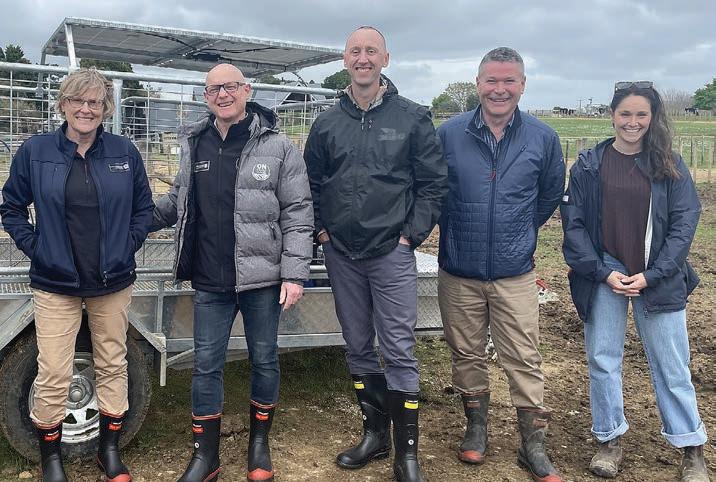


T’S one of the most important times of the year on farm, with dairy and beef farmers focused on getting as many cows in calf as possible.
Mating provides an opportunity for genetic improvement, such as boosting milk production, liveweight gain, fertility, longevity and an animal’s ability to convert feed efficiently.
Farmers are also recognising the impact of selective breeding decisions on helping to bring down their on-farm greenhouse gas emissions.
The Ministry for Primary Industries (MPI) is investing heavily to support the sector to sustainably reduce emissions.
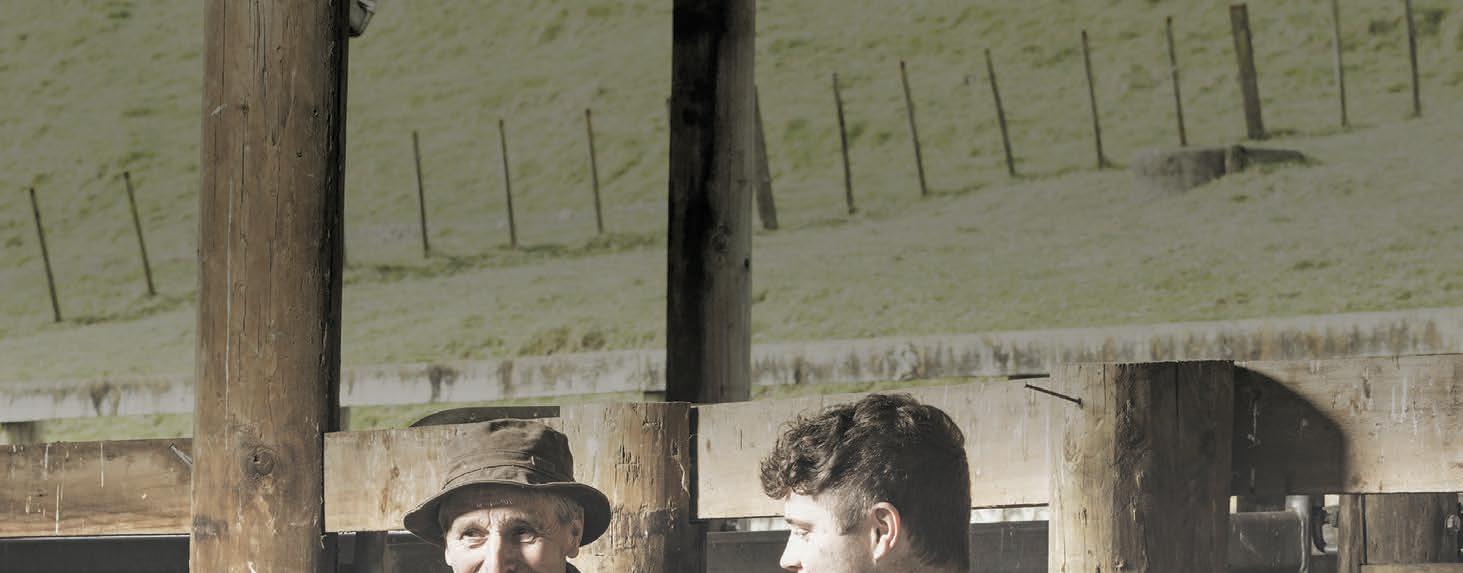
Change is being driven by our markets and by farmers wanting to ensure the resilience of their businesses. It’s a challenge with no quick fix.
Our largest commitment is the more than $400 million being invested over the next four years to strengthen research and development in getting new emissionsbusting tools and technology to farmers quicker.
November will mark two years since the launch of the Centre for Climate Action on Agricultural Emissions, which has two key components – AgriZeroNZ and the New Zealand Greenhouse Gas Research Centre (NZAGRC).
AgriZeroNZ is a 50/50 public-private joint venture. A total of $191m has been committed by industry and government over its first four years.
AgriZeroNZ aims to have two to three emissions reduction tools in widespread use by 2030.
The joint venture’s first investment alongside MPI was in Ruminant BioTech. In late September, I visited a research farm in Tuakau to see first hand its trials to develop a methane-inhibiting bolus that’s suitable for pasture-based farming systems.
Part of our investment includes boosting funding for the NZAGRC, where an additional $50.5m will be spent over the next five years identifying and funding critical research and development.
That includes helping to accelerate progress on breeding low emissions cattle and scaling-up research on developing a methane vaccine with AgriZeroNZ.


In June, we teamed up with industry partners at the national Fieldays in Mystery Creek to debut the successful Science for Farmers site.
It featured information on diverse pastures, soil monitoring and efforts to breed climate-friendly sheep and cattle that can reduce emissions without sacrificing productivity.



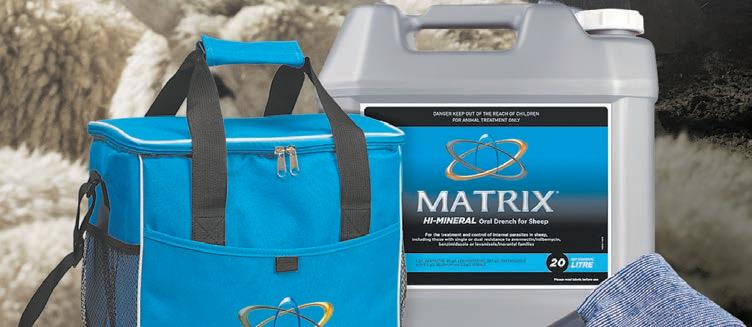
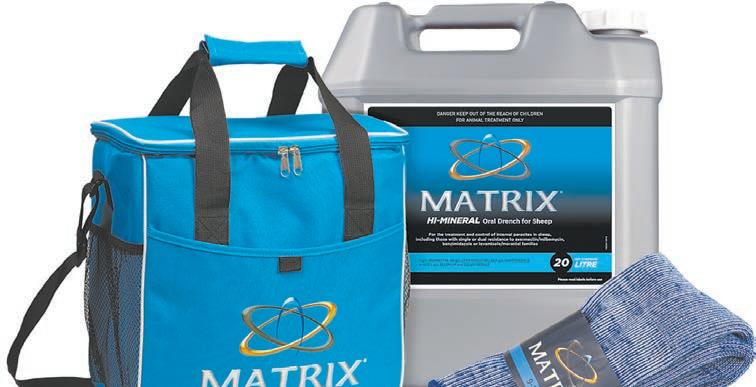



The discussions were different for each farm. The list of actions included using low-emission genetics, developing an animal health plan with their vet, optimising fertiliser use, improving animal fertility, riparian planting and reducing supplementary feed.
The idea for Science for Farmers came from an exhibit I saw on a trip to the national ploughing championships in Ireland last year with chief science adviser and On Farm Support’s director, Dr John Roche.
The site enables farmers and growers to learn first hand about the science helping our agricultural sector become even more efficient and adapt to change.
It’s an important focus of John and his team.
With the development of major tools still in the pipeline, On Farm Support is working on the ground with farmers to understand steps they can take now to reduce emissions.
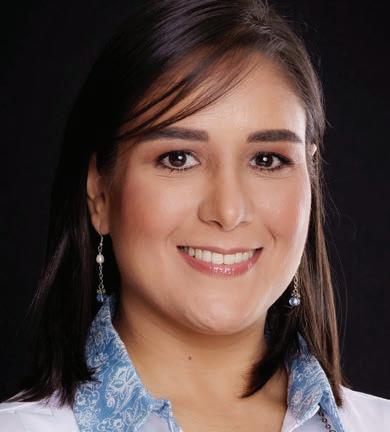
SEPTEMBER was another eventful month for the dairy industry, with significant developments both domestically and internationally.
The standouts include New Zealand recording its highest yearon-year (YoY) growth in August milk production since 2020, strong prices for skim milk powder (SMP) and whole milk powder (WMP) on the Global Dairy Trade (GDT) platform, constrained milk production in other major dairy regions, and Fonterra announcing its second-largest dividend payout in history.
New Zealand’s milk production for August rose by 10% YoY, totalling 123.8 million kg of milksolids. This is the highest figure for August since 2020, driven by good pasture growth in key regions and favourable weather conditions across the country.
Season-to-date production is now 8.3% higher compared to last year, showing a solid start to the
dairy season. In tonnage terms, milk production was up 9.0% YoY, with 1.42 million tonnes of milk recorded – again, the highest August result since 2020. In contrast, other major dairyproducing regions have not fared as well. For August milk production, the United States reported a YoY decline of 0.2%, Argentina saw a steep drop of 4.0%, Uruguay fell by 5.5%, and Europe’s July milk production posted only a slight 0.4% increase.
The US continues to face challenges, including avian flu outbreaks and tight availability of heifers, while Europe is grappling with a rise in blue-tongue virus cases and non-favourable weather in some key countries.
These disruptions are putting pressure on milk supply in these regions, which could, in turn, have implications for global dairy prices.
Global Dairy Trade events in September were mixed. Event 363 saw a slight dip of 0.4% in the GDT index, while Event 364 bounced back with a 0.8% rise. Throughout both events, certain products stood out, particularly SMP, cheddar, and mozzarella, which all posted price gains.
This recent result suggests a stabilisation of prices.
Notably, Event 364 recorded the highest average price for SMP on the GDT platform in the past 12 months, at US$2809/t. This strength in SMP pricing was largely driven by a surge in demand from north Asia, particularly China, as buyers there replenished stocks of powders.
The upward trend continued in October’s first GDT event, Event
365, where the overall index rose by 1.2% and WMP saw its highest average price on the platform since October 2022 with US$3559/t. This recent result suggests a stabilisation of prices, which may offer further reassurance to farmers as the season progresses if demand continues to hold.
On the trade front, NZ’s total dairy exports declined by 13.8% YoY in August, primarily due to the seasonal lull in exports. However, year-to-date (YTD) exports are still up by 0.7%. This drop in August was anticipated, as it follows Fonterra’s strategy of minimising inventories towards the end of its financial year. It is worth noting that this is a common practice to ensure the co-op doesn’t hold too much stock going into the new season.
In contrast, other dairyproducing regions have reported stronger export performances. Argentina’s August exports were up 10.9%, while the US, Europe, and Australia all saw growth in July exports, rising by 7.8%, 4.2%, and 20.2%, respectively.
For many NZ farmers, Fonterra’s announcement in late September brought positive news. The cooperative increased its Farmgate Milk Price forecast for the 2024/25 season by 50 cents, bringing it to a midpoint of $9.00 per kg of milksolids, which is in line with our NZX milk price calculator’s forecast.
This revision, combined with a 55-cent dividend payout for the 2023/24 season, should bolster confidence. The dividend is the second-largest in Fonterra’s history, only surpassed by the 59-cent payout in 2007.
Overall, the outlook for the New Zealand dairy season remains optimistic. The strong start in milk production, coupled with firm GDT prices, is encouraging.
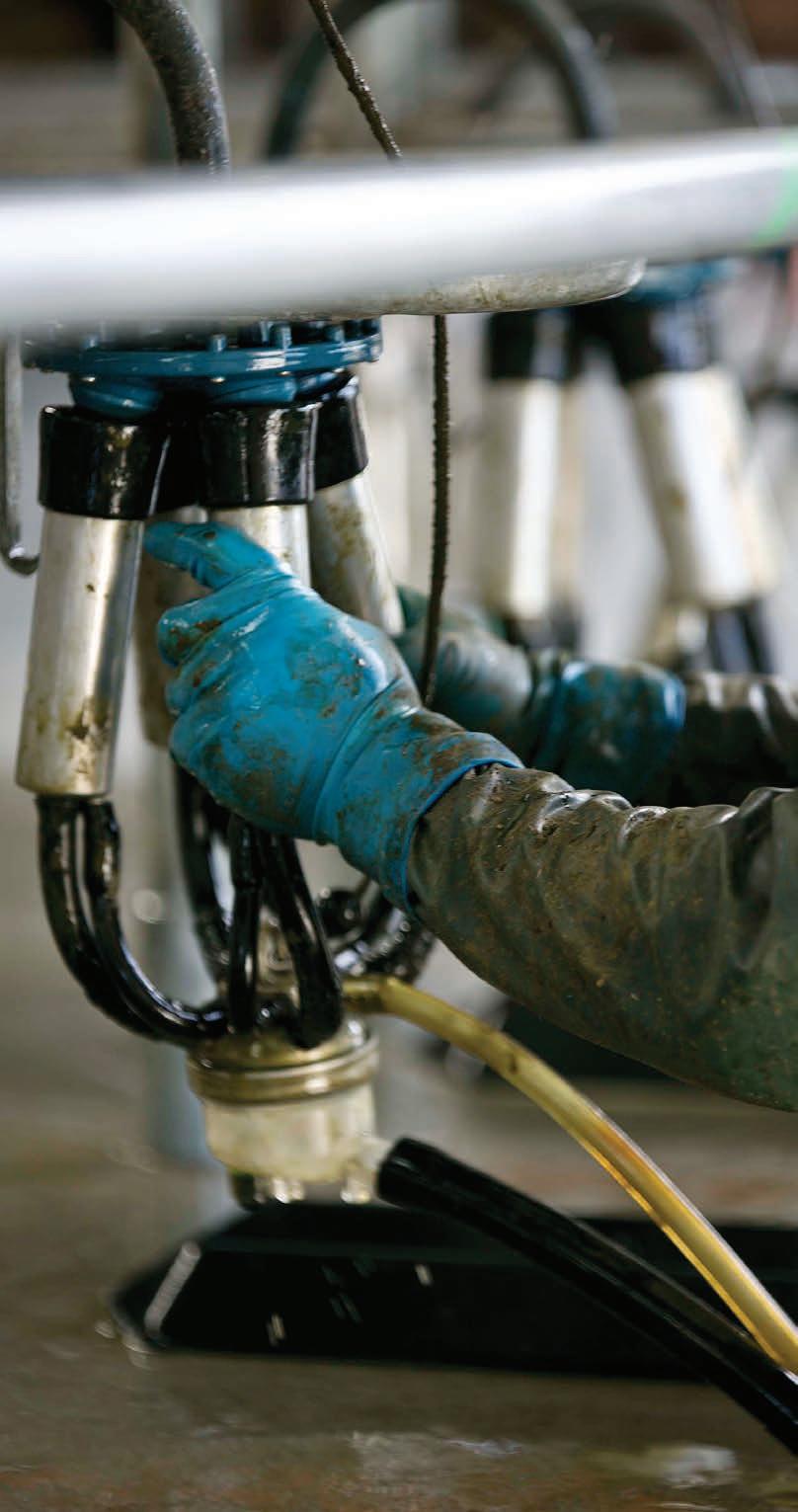
FAVOURABLE: New Zealand’s milk production for August rose by 10.0% YoY, totalling 123.8 million kg of milksolids. This is the highest figure for August since 2020, driven by good pasture growth in key regions and favourable weather conditions across the country.
However, keeping a close eye on global demand will be critical, particularly as China implements new economic stimulus measures that could boost dairy imports.
Additionally, with butter supply constraints in Europe and production issues in key regions, New Zealand is well-positioned to maintain strong export demand in the coming months.
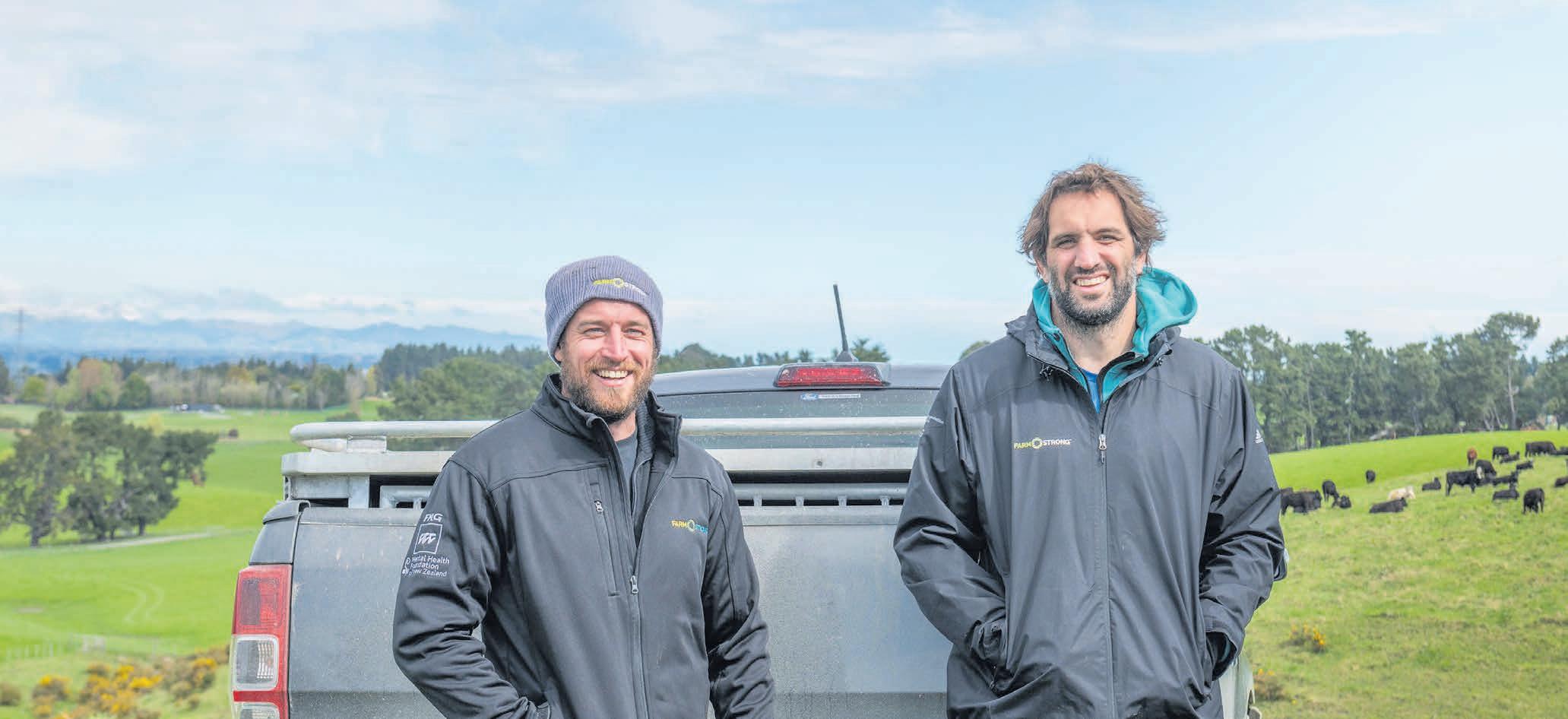


Keeping in shape mentally and physically helps you put the best into the farm so the farm can give the best back to you.




Sam Whitelock Farmstrong Ambassador
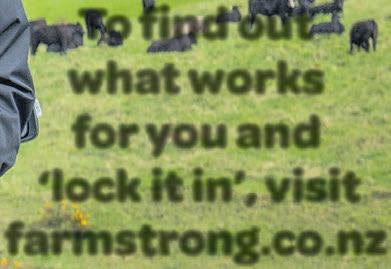
Take the risk out of your pas ture renewal – and get the bes t returns – by sowing a proven, qualit y produc t from Barenbrug. A s k your reseller, or learn more at barenbrug.co.nz /c heaper - is n -t- bet ter

Supercharged with NE A12, Shogun is the pace - set ter in 1-3 year pa s ture Shogun NEA12
The phenomenal 3 - 5 year pa s ture, delivering per formance your neighbour s will env y Forge NEA 1-3 year s 3 -5 year s Perennial Nex t generation perennial, our ‘ go to’ gra s s for superior per sis tence & summer grow th Maxsyn NEA4

The super s t ar perennial, delivering high int ake, yield, N upt ake & per sis tence Array NEA2
The benchmark in tetraploid perennials, it ’ s ea s y grazing & bet ter for the environment 4front NEA2

Federated Farmers has come up with a range of solutions to prevent rural families from losing their much-needed school bus services.
The Government is planning to scrap or change school bus runs to many communities around the country, a move that’s left farming families angry and upset.
“Our understanding is that about 250 school bus services are being axed, or at least changed, and we’ve been hearing from many of our members who are really concerned about it,” says Toby Williams, Federated Farmers rural education spokesperson.
“Ensuring your kids can get to school should be a basic service in this country, so this issue has really got our attention.
“We’ve come up with some solutions that we think could stop this from happening, and we’ll be asking the Government to take them seriously.”
To qualify for school transport assistance, the Ministry of Education says children must go to their closest state or state-integrated school, must live more than a certain distance from the school, and there must be no suitable public transport options.
There must also be a minimum number of students on the bus route to keep it running.
Williams says one action he’d like the Government to take immediately is to review those eligibility criteria.
“For example, at the moment, you need to have a minimum of eight
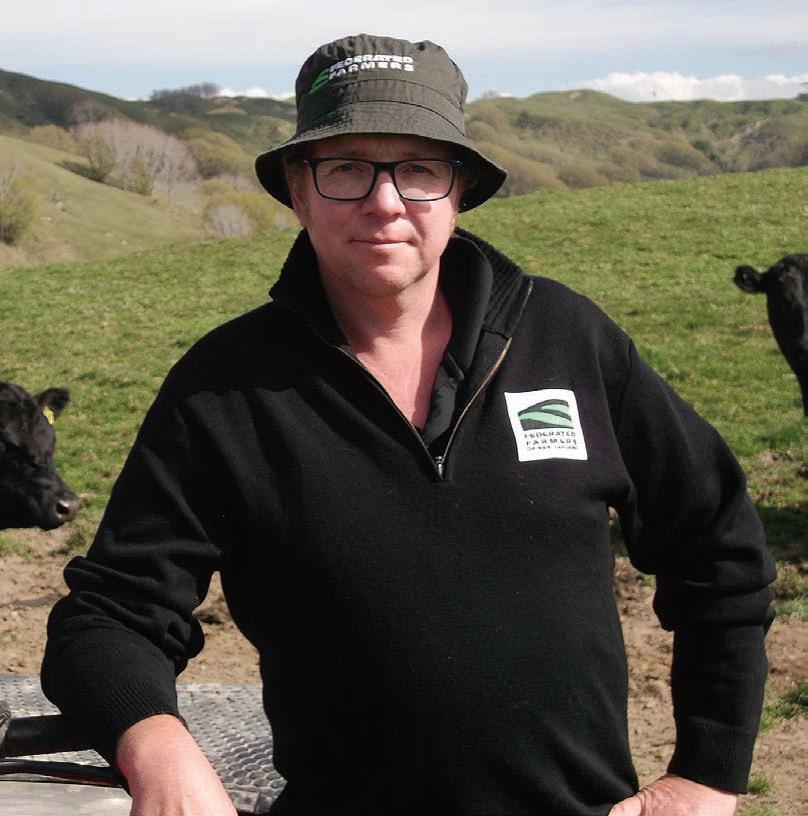
children catching the bus from an area for it to carry on running, but we think that should be lowered to four.
“That would keep more bus routes viable and better reflect the realities of rural New Zealand, where we do have smaller communities than in the past.”
More ambitiously, Federated Farmers suggests that Minister of Education Erica Stanford and Minister of Transport Simeon Brown
jointly instruct their officials to look at integrating their respective transport fleets.
This could create a multi-use public/private system, where bus routes serve both schoolchildren and provide daily transport to town for rural people.
“There would be a fee with that, but we’ve heard from a lot of families who say they’d choose a userpays system if it keeps their buses running, rather than losing them

altogether,” Williams says.
“At the end of the day, if mum and dad are looking at an hour-long return drive to school twice a day, versus paying a few bucks for the bus, it’s an easy decision.”
As part of this, Federated Farmers is urging the Government to adopt a social investment approach when making decisions about rural transport.
“It’s not just about short-term savings; it’s about maintaining the long-term viability of our rural communities,” Williams says.
“Keeping school transport services running is an investment in these communities.”
Williams also warns that cuts to bus services are already affecting farms’ ability to attract and retain staff.
“No buses means no staff, which ultimately undermines rural communities.
“We need young families to move to and stay in rural areas, but if access to schools is difficult, why would they?
“If we don’t get this sorted, farmers are going to sell up and go to forestry, which doesn’t fit with the Government’s goal of wanting to double our export earnings over the next 10 years.”
He says Federated Farmers is very prepared to work with the Government to find real solutions – and think outside the box – to prevent bus losses.
“Cutting these routes would hollow out our rural communities, which would be devastating.
“We’ll be doing everything we can to find innovative ways to keep our country kids getting their education.”
Williams says the Ministry of Education is “obviously trying to save money” by reducing bus services, but they clearly haven’t thought it through.
At the end of the day, if mum and dad are looking at an hour-long return drive to school twice a day, versus paying a few bucks for the bus, it’s an easy decision.
Toby Williams Federated Farmers rural education spokesperson
“I get that the Ministry has some cost-cutting to do, but I feel like these rural communities are an easy target.
“Just because it’s a quick win and doesn’t affect many people, that doesn’t mean it’s the right thing to do.
“The impacts on the ground for rural families will be huge.”
Williams says he is in discussions with the Labour Party and Rural Women NZ, which are both also opposing the cuts.
He hopes Minister Stanford will respond positively to the concerns raised and direct officials to find solutions, including the user-pays option.
“We need a resolution to this problem – and fast.”
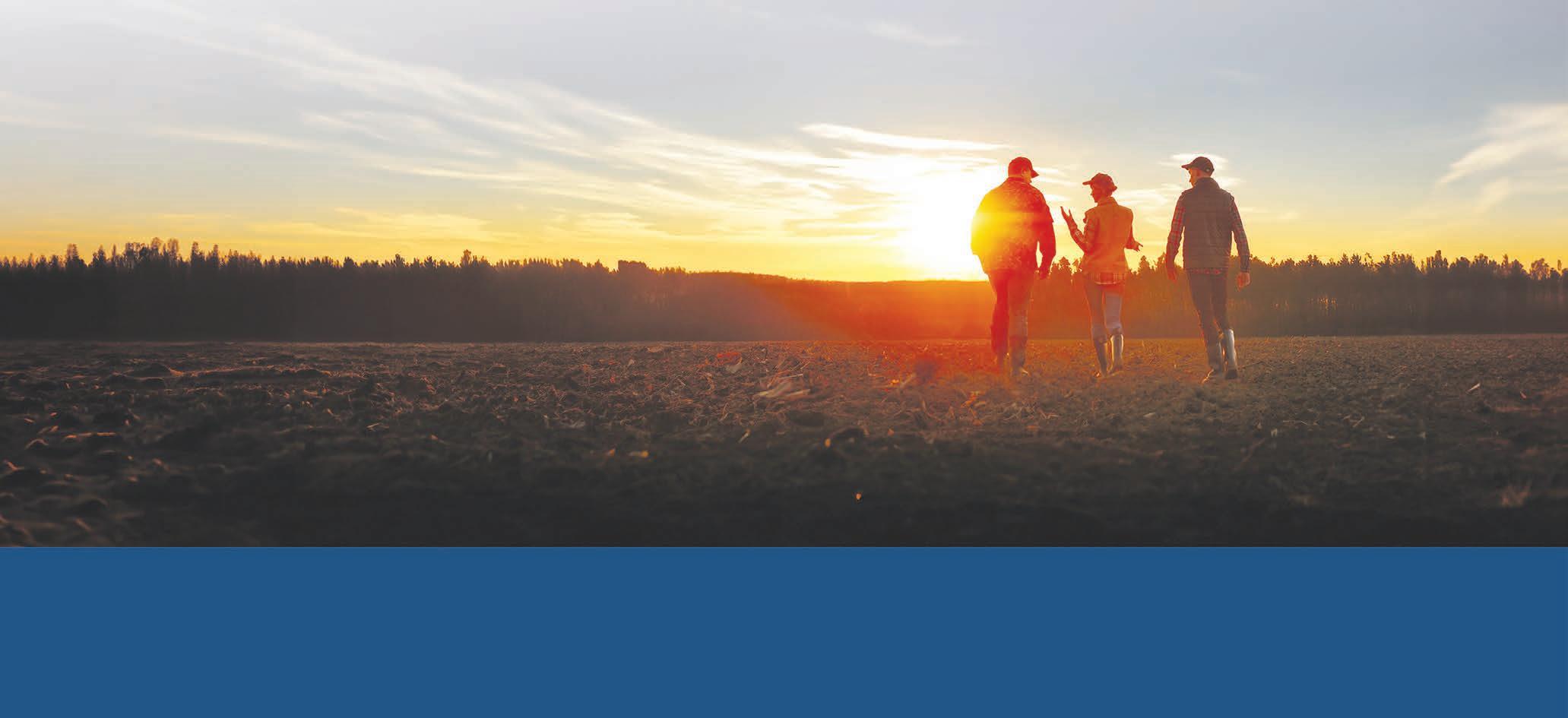
W I L L YO U S TA N D W I T H U S ?
Federated Farmers leaders in Otago and Southland are urging any farmers struggling with their mental health to reach out for help.
“In Southland, it’s been raining pretty much constantly since April and a lot of farmers here are really battling,” Federated Farmers Southland president Jason Herrick says.
“As farmers, we take immense pride in our animals and in our farms and it’s not easy slogging it out day after day in wet weather gear.
“Morale is low and we need to be looking out for each other and working together as a rural community to get through this.
“I can’t say this strongly enough: if you’re doing it tough, please pick up the phone and ask for help because there’s a lot of support out there.”
Herrick says Rural Support Trust (0800 787 254) has excellent local people who know farming and are trained to help farmers through all kinds of situations.
He recommends the free 1737 phone service for people who need a chat.
Federated Farmers also has its Feed Coordination Service up and running. If anyone has feed for sale, or need feeds, they can go to the Southland Federated Farmers and Otago Federated Farmers Facebook pages.
Luke Kane, Federated Farmers Otago president, says the prolonged wet conditions and past week’s flooding in some parts of the province have left many farmers in a bad state.
“It’s fair to say that stress levels are pretty high around the place, and a lot of farmers are doing it tough as they move into recovery from the flooding.
Morale is low and we need to be looking out for each other and working together as a rural community to get through this.
Jason Herrick Federated Farmers Southland president
“The feed situation is dire in some areas here, and in Southland too, so we need to be pulling together to look out for each other.”
Kane says it’s easy to get isolated and feel like you’re the only one not coping.
“I encourage farmers to lean over the fence or go for a drive to talk with your friends and neighbours to get some perspective and clear the head.
“This is also about checking in on others too, making sure they’re okay and not shutting themselves off.”
He says those in a slightly better situation could consider organising a potluck dinner and getting some of the neighbours over to lift the mood.
“It’s times like these we need to dig deep and support each other.”
Having been through a mental breakdown in 2018, partly as a result of similar weather conditions, Herrick
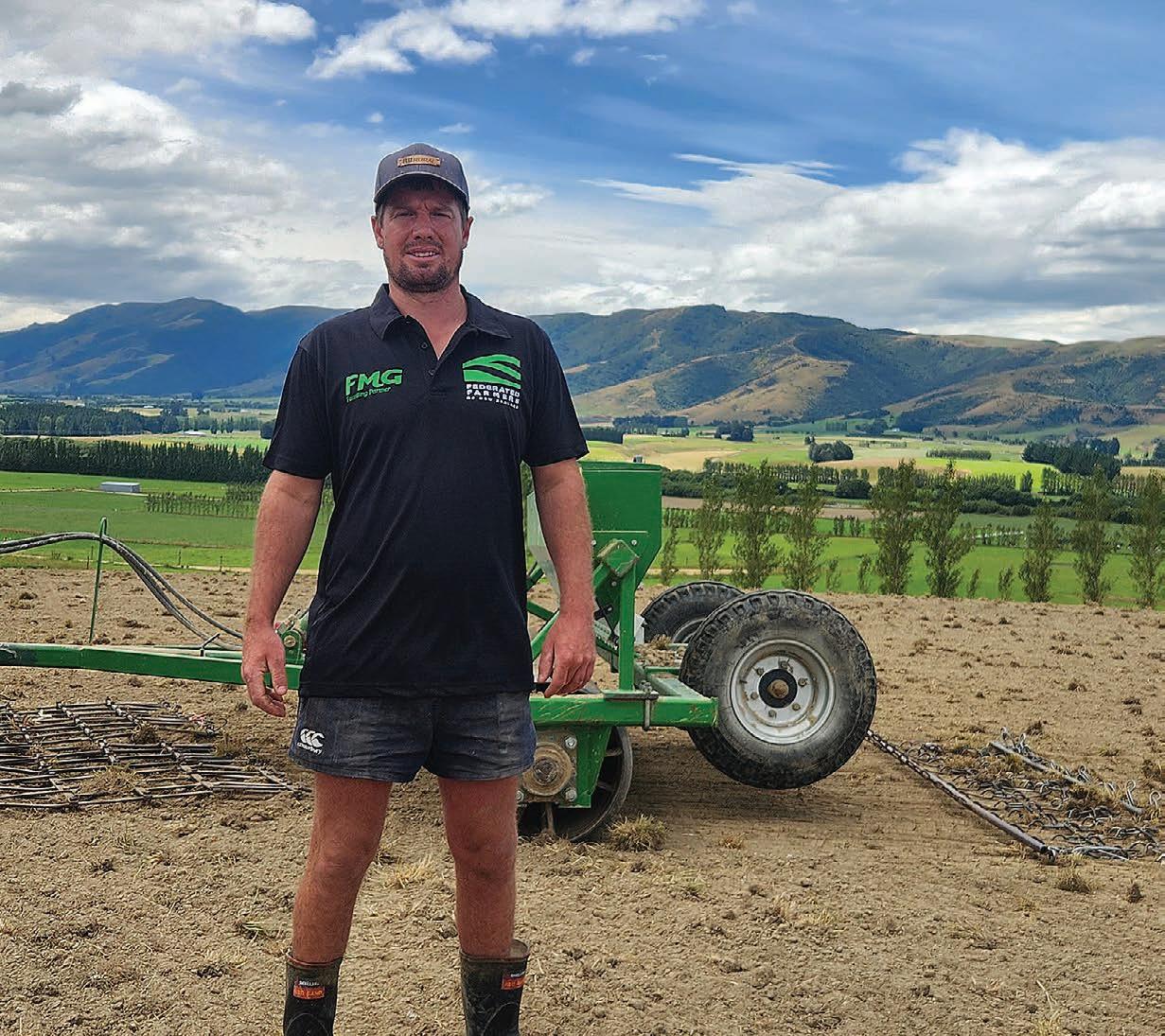
PERSPECTIVE: Luke Kane, seen here in drier times, says it’s important for flood-affected farmers to lean over the fence to talk with friends and neighbours right now.
is a strong advocate for rural mental health.
“When it rains and rains, you get to a point where just hearing the rain on the roof at night can cause you to lie awake worrying.
“I’ve been talking to some guys down here who are completely overwhelmed by what’s in front of them – stock losses, flooded paddocks, blown out culverts, and so on – and they don’t know what to start on first.
“But what I’ve learned over the years is that, in these conditions, we just have to do the best we can and make the best farm management decisions possible until the sun comes out again – which it will.
“If you grab the opportunity to get your farm teams in the ute and

“
do a tour around your patch, you’ll see we’re all in this together and the decisions you’re making are the best decisions you can.”
Herrick says it may sound like a basic message, but getting enough sleep is also crucial.
“You can’t function effectively or make good decisions without it.”
Federated Farmers wants to commend farmers for doing the best for their stock and their people during these tough times, Kane says.
“There are some great initiatives coming from right across the industry, and we’re hearing awesome stories about how the community is pulling together to wrap around support.”
Kane adds that farmers may not have a lot of dry ground right now,
but they do have some common ground.
“We’re all sick of the rain and we all need each other.”
Helpful links and numbers:
Rural Support Trust on 0800 RURAL HELP or 0800 787 254
Need to Talk? 1737 phone service
Federated Farmers: 0800 FARMING (0800 327 646)
DairyNZ: 0800 4 DairyNZ (0800 432 479 69)
Beef + Lamb New Zealand: 0800 BEEFLAMB (0800 233 352)

Taranaki dairy farmer
Federated Farmers sharefarmer chair

Farmers are angry about a rural banking system that isn’t working properly, poor bank behaviour, and Reserve Bank rules that hamstring the agricultural sector.
The Federated Farmers submission to Parliament’s banking inquiry includes more than 1500 comments from farmers fed up with paying over the odds for banking services.
“Lack of competition in rural banking, unfair practices, unjustifiably high interest margins and overly cautious Reserve Bank restrictions are seriously disadvantaging the nation’s food producers and export income earners,” Federated Farmers banking spokesperson Richard McIntyre says.
Federated Farmers believes farmers are currently paying up to 1.7% more in borrowing costs than they should in a fair and open market.
“We’re calling for urgent banking reform in the agricultural sector, where $62.5 billion in lending means even a 1% difference in margins represents $625 million,” McIntyre says.
One of Federated Farmers’ key recommendations is for the Government to revise the Reserve Bank’s stringent one-in-200-year financial shock standard, which significantly raises borrowing costs for farmers.
Moving to a one-in-100-year standard would still ensure stability while lowering costs for rural borrowers, McIntyre says.
As well as the extensive feedback from farmers, Federated Farmers’ 140-page submission to the inquiry includes experts’ opinions, former bankers’ perspectives and research.
More than one in five Kiwi farmers say their bank isn’t allowing them to structure their debt to minimise interest payments as much as possible.
Too many farmers are pressured to use overdrafts to manage debt repayments or fund capital projectstasks overdrafts were never intended for. In fact, 12% of farmers say their bank has asked them to fund capital
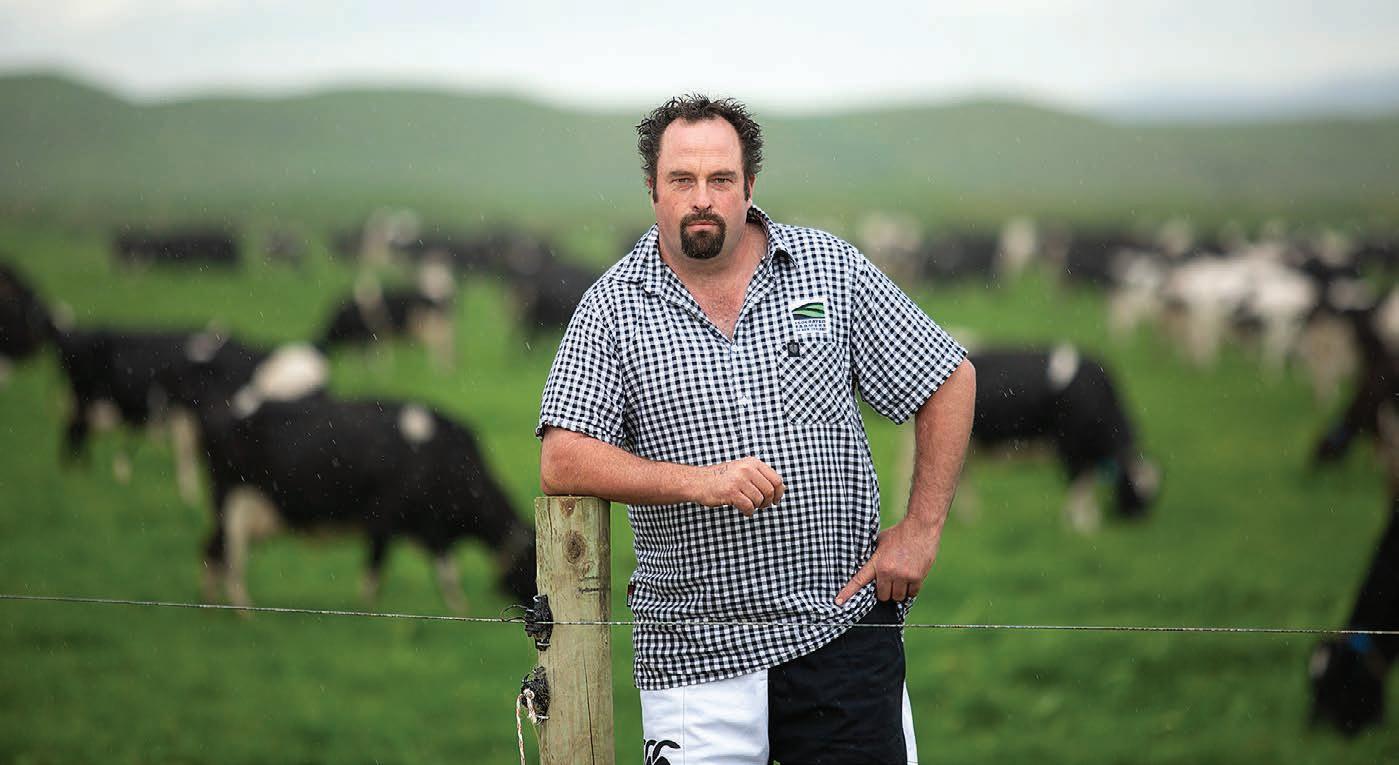
Rural lending of $62.5 billion means even a 1% difference in margins represents $625 million.
Richard McIntyre Federated Farmers banking spokesperson
work using an overdraft.
“This is unacceptable,” McIntyre says.
“Overdrafts are designed for managing seasonal cash flow, not to burden farmers with higher-interest debt to boost bank profits.”
Federated Farmers’ submission says agricultural loans should have risk-weighted assets (RWAs) more in line with residential mortgages.
“Rural loans, backed by valuable land, currently carry higher RWAs, inflating borrowing costs for farmers.
A fairer system would provide more equitable access to credit.”
The Government should ensure Kiwibank is properly funded and
instructed to enter the agricultural lending market. Increased competition from a well-capitalised Kiwibank would give farmers better loan options, McIntyre says.
“Our survey data found 40% of respondents would consider moving to Kiwibank if it offered agricultural banking services. Many farmers feel trapped by their current banking relationships.”
Farmers also want more accountability and transparency from rural banking services.
“Major banks should be required to present annually to a select committee, fully disclosing interest rates, lending practices, and profit margins related to agricultural lending.”
Farmhouses should be classified as residential properties for mortgage purposes, not as commercial or agricultural loans. This change would lower interest rates and ease financial pressure on farming families.
“We also think banks should offer more interest-only loans to farmers with sufficient equity, particularly
those with Loan-to-Value Ratios (LVRs) of 50% or more,” McIntyre says.
“These loans would provide financial relief during tough times without increasing systemic risk.”
Among other recommendations in the Federated Farmers submission is a push to implement open banking regulations.
“These would allow farmers to more easily compare financial products and switch banks, fostering greater competition and lowering borrowing costs.”
The federation wants the Government and select committees to monitor the impact of the Net Zero Banking Alliance (NZBA) on agricultural lending.
“While the NZBA’s environmental goals are important, uniform lending practices driven by netzero commitments could limit competition and restrict access to credit for farmers. Proper oversight is needed.”
Banks should take responsibility for empowering rural lending managers by granting them more decisionmaking autonomy.
NEW PLAYER: Properly funded, Kiwibank could provide more much-needed competition in the rural banking sector, Richard McIntyre says.
“These managers are well-versed in the specific challenges faced by farmers and can offer more tailored financial solutions.
“Increased autonomy would improve lending practices and strengthen the relationships between banks and farmers,” McIntyre says.
“We want to get back to those times when banks worked hard to maintain strong relationships with rural clients through regular onfarm visits, especially for those with substantial loans.”
McIntyre says Federated Farmers is not arguing for special treatment for farmers, just fairness and transparency.
“The banking inquiry is a huge opportunity for Parliament to significantly reduce costs in the agricultural sector and put in place competition that helps ensure farmers are treated fairly when they access capital to invest.”
The Federated Farmers submission can be at fedfarm.org.nz
























































































Federated Farmers invites new and existing contract milkers, share milkers & farm owners to events around the country in November.
Learn how to navigate business and individual risks for both share farmers and farm owners Our industry experts will guide you through contractual changes, farm assessments, and how to build and maintain strong, enduring working relationships



















































Don’t miss this chance to g r ow your knowledge and connect with pr ofessionals in the field!

























30am12 30pm Morrinsville Rugby & Sports Club, Campbell Park, Thames Street, Morrinsville Te Awamutu Thursday, 14 November
30am12 30pm Te Awamutu Rugby Sports & Recreation Club Inc, 420 Albert Park Drive, Te Awamutu
30am12.30pm
TSB Hub, Camberwell Road, Hawera
12 30pm Dunsandel Pub, 3374 Main South Road, Dunsandel Wa i m at e Tuesday, 12 November
30am12 30pm Waimate Rugby Football Club, Wall Street, Waimate B
30am12 30pm
Recreation Centre, 18 Glasgow Street, Balclutha
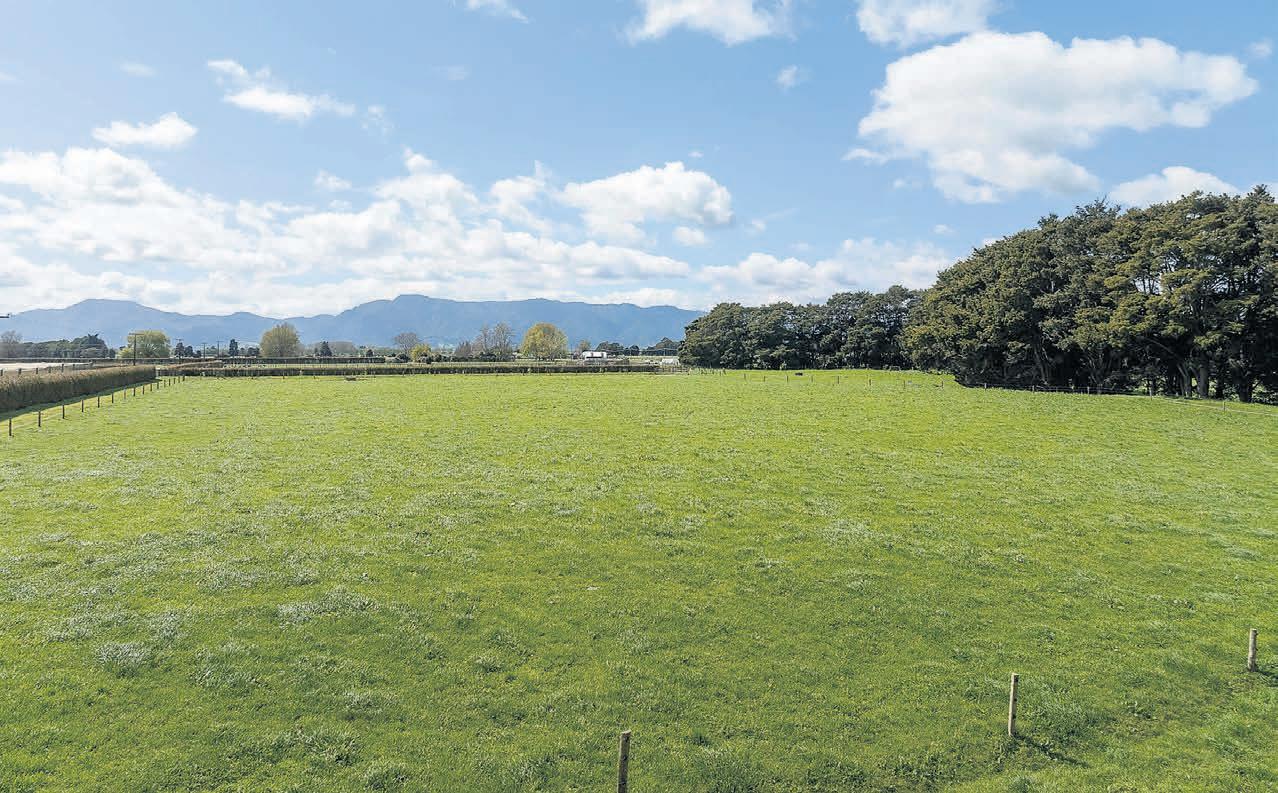
This impressive 125ha dairy unit is situated in Ngarua arguably one of the best farming districts in NZ The premium soils and fantastic location make it not only a dream location for dairy farmers but also incredibly desirable for market gardening and horticulture Contained within four titles the highly productive farm enjoys an average production of 280 000kgMS milking 430 cows Infrastructure includes a modern 36ASHB with 300 cow yard, feed pad with flood wash, implement and calf shedding Supplement includes 25ha of maize and 100 bales of grass silage Water is sourced from three deep well bores with the effluent system comprising a lined pond with separator covering 42ha Three dwellings plus a single unit complete this outstanding package with staff well catered for This enviable location is within close proximity to Matamata, Morrinsville and major cities bayleys co nz/2316065
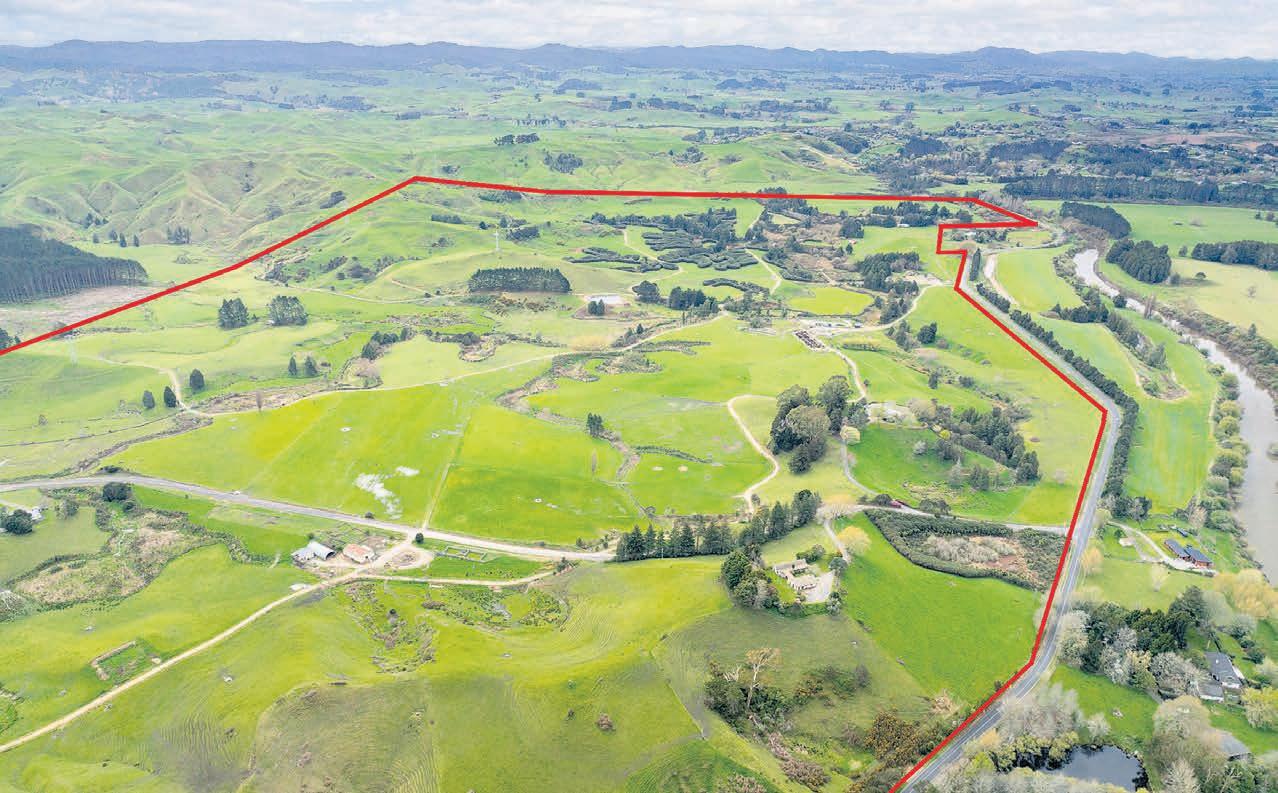
15 and 85 Old Mountain Road
Only 15km to Hamilton, this attractive dairy farm in 5 titles is a must see Currently leased, the 36ASHB dairy shed is milking approximately 330 cows Support buildings include a calf shed, implement shed, hay shed, woolshed, half round barn and concrete floor workshop, feed pad and PK bunker Extensive races ensure easy management The substantial main homestead with stunning views features a modernised kitchen and bathrooms plus an in-ground pool and sleepout with ensuite There are two additional homes and a onebedroom dwelling on the southern grazing block The property has the potential for further lifestyle blocks/subdivision In addition, extensive native planting and protection of ecologically significant features has led to the conditional allocation of up to 12 Environmental Benefit Lot entitlements (EBLs) bayleys co nz/2316101

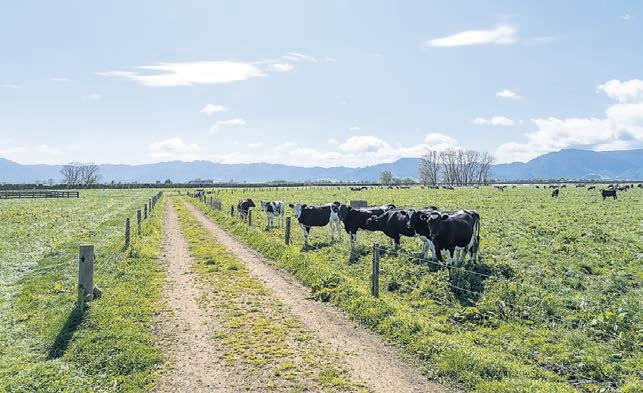
125 5917 ha
Tender (unless sold prior)
Closing 11am, Tue 5 Nov 2024
96 Ulster Street, Hamilton
View 11am-12pm Wed 16 Oct or by appointment
Peter Kelly 027 432 4278 peter kelly@bayleys co nz
Sam Troughton 027 480 0836
SUCCESS
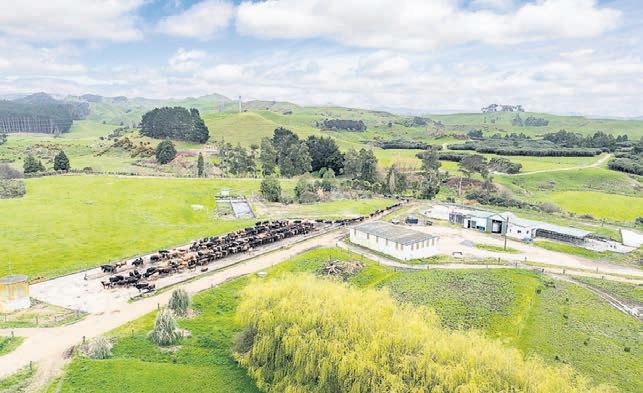

246 ha
Tender (unless sold prior)
Closing 2pm, Thu 31 Oct 2024
96 Ulster Street, Hamilton
View Tue 11am-12pm
Stuart Gudsell 021 951 737
stuart gudsell@bayleys co nz
SUCCESS REALTY LIMITED BAYLEYS LICENSED UNDER THE REA ACT 2008
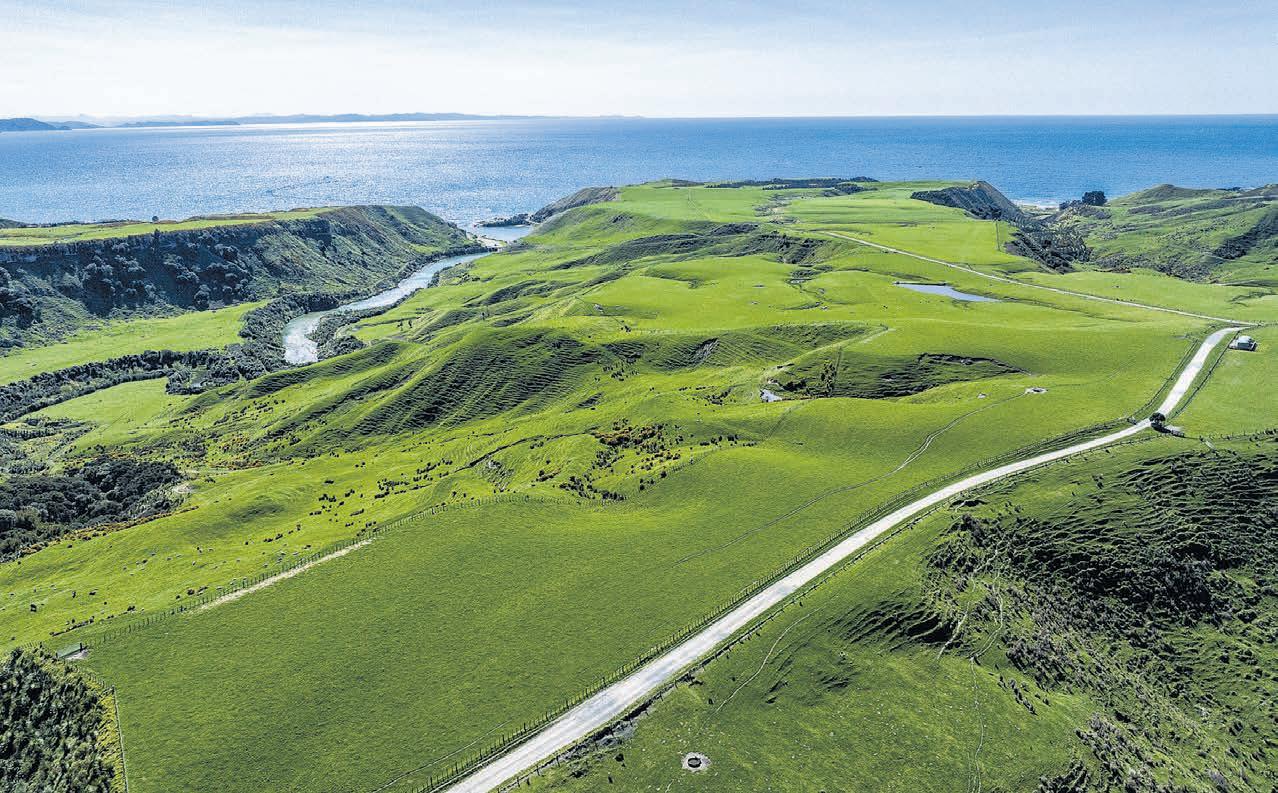
A combination of elite coastal farming performance impressive infrastructure superior contour and an idyllic location in a superb farming community Carrying 12 500 high-performing stock units this best-in-class 874ha (STS) drystock farming operation has been developed by honouring its coastal location with a focus on the environment and sustainability practices The remarkable gross and net farm income results are a testament to management policy Outstanding growing conditions enable an array of production options Key infrastructure includes substantial yards, woolshed, airstrip, worker accommodation, and various shed and workshop facilities, alongside a four-bedroom homestead Set up to perform and with future sub-division potential this coastal trophy farm still has treasure to be uncovered bayleys co nz/2753339
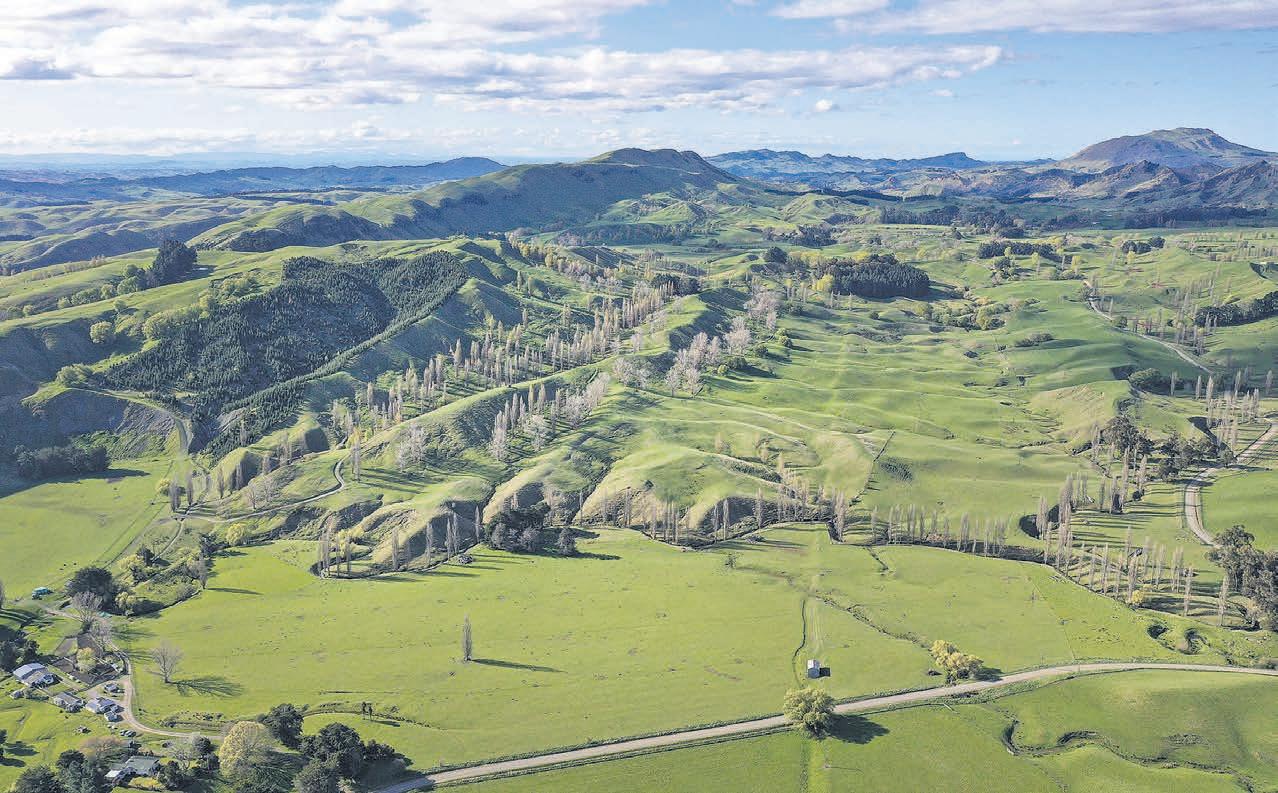
On the market for the first time in 70 years, this well balanced 421-hectare breeding and finishing property has lots and lots of potential Located an easy 40 kilometres south of Havelock North with approximately 40 hectares of flat and 100 hectares of easy contour fenced into techno and one-hectare cells, make it ideal for finishing cattle and producing good returns The remaining limestone hills provide the scale for breeding stock and with two reliable water sources the farm is fully reticulated A real feature of the farm is the timeless fourbedroom John Scott designed homestead which looks out over the concrete tennis court and pool across the farm to the north A three-bedroom cottage, four-stand woolshed, sheep and cattle yards top off this easy to run farm which includes excellent laneways The potential to take this farm to another level is fantastic bayleys co nz/2853707

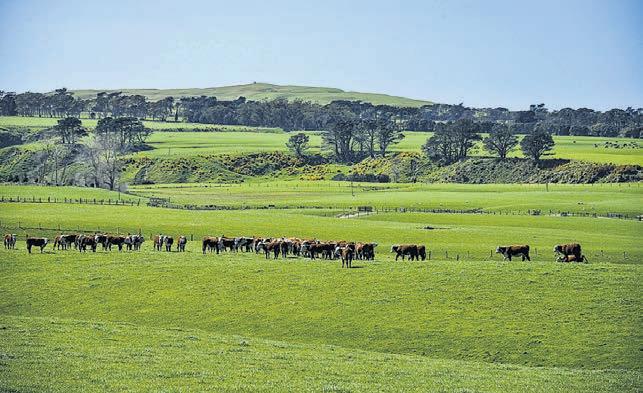
874 ha
Tender (unless sold prior)
Closing 4pm, Thu 14 Nov 2024
10 Reads Quay, Gisborne
View by appointment
Simon Bousfield 027 665 8778
Stephen Thomson 027 450 6531
Duncan Ross 021 663 567


421.6 ha
Tender Closing 4pm, Tue 12 Nov 2024
17 Napier Road, Havelock North
View by appointment
Tony Rasmussen 027 429 2253
tony rasmussen@bayleys co nz
Chris Heenan 027 599 3527
chris heenan@bayleys co nz

Te Manuiri Station provides the discerning buyer with the opportunity to acquire strong, clean breeding land with large portions of sheltered easy contour Featuring a beautiful five-bedroom homestead set in established gardens, the massive farmhouse kitchen could tell many stories and the large bedrooms that line the hallway enhance the feeling of scale and grandeur A spring high on the farm provides an excellent water source, while the creeks and dams throughout ensure livestock is well watered A few stands of mature native bush complete this aesthetically pleasing station and provide a habitat for the resident red deer Station buildings include a threebedroom shepherd’s home, six-stand woolshed, large cattle yards, three-bay implement shed with a lockable workshop, haybarn, airstrip and three sets of satellite sheep yards A clean property with genuine scale bayleys co nz/2853706
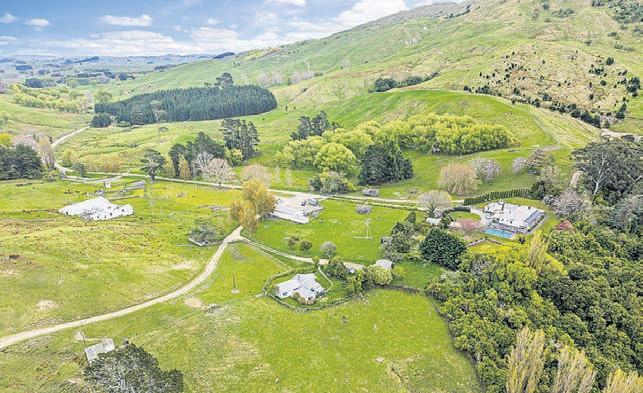
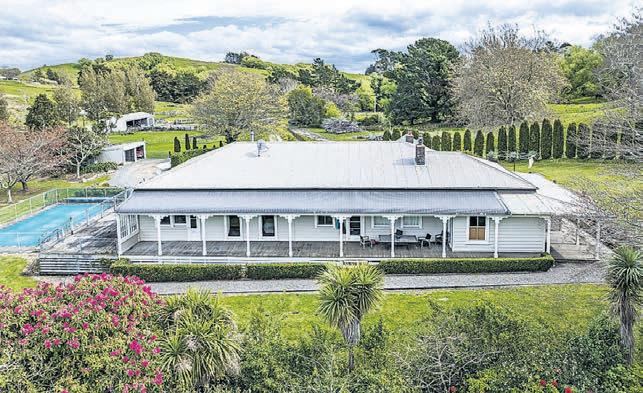
Closing 4pm, Thu 14 Nov
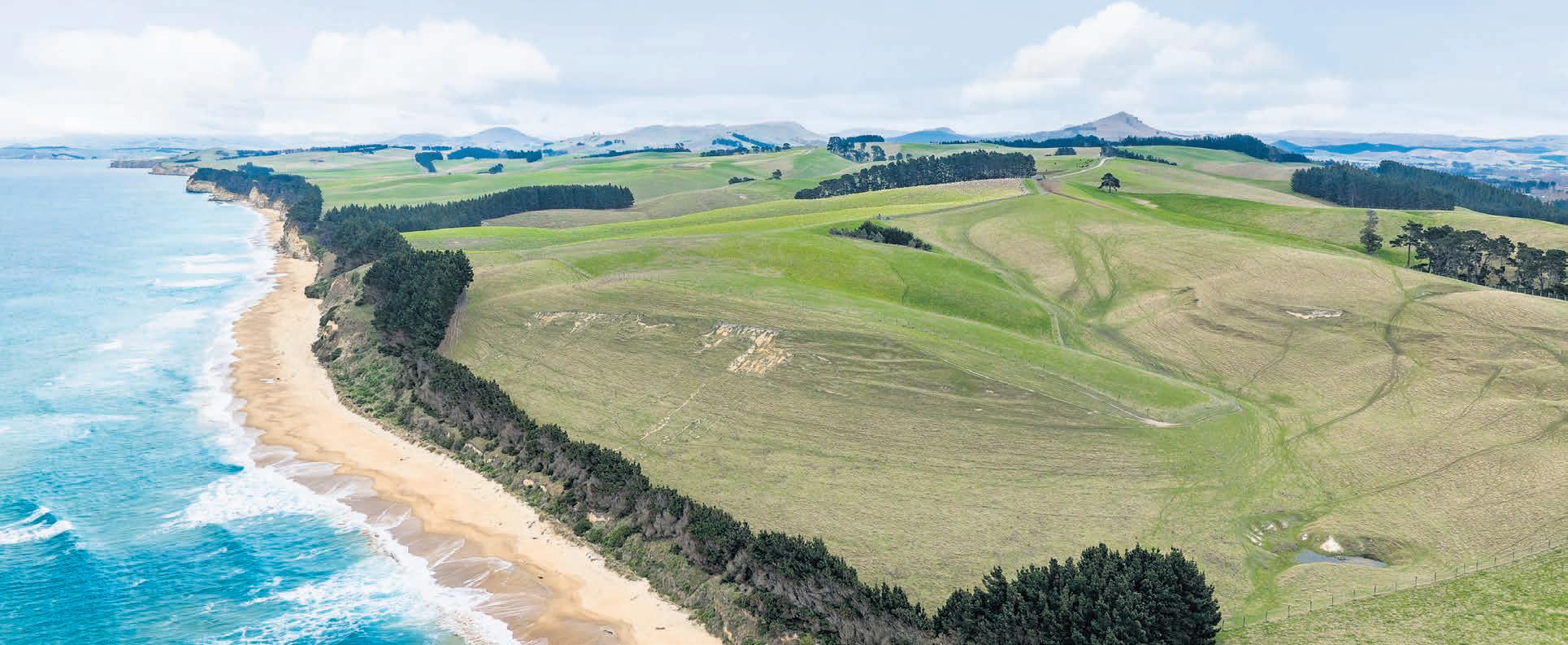
Bushey Park is an exceptional opportunity to acquire a coastal working farm of reasonable scale This is a large well developed property currently utilised as a sheep and beef breeding and finishing operation Subdivided into 90 paddocks, predominantly deer fenced, the property has fantastic balance from heavy flats to medium hill, with some steeper sidling's A good portion of the farm is cultivatable With approximately 4kms of coastline there are stunning sea views from most of the property The property has extensive housing and facilities, including a complex, previously used for deer sales, now converted to storage space and used as function facility from time to time Many alternative farming options here including; subdivision, forestry, Agri-tourism and more
Create the next chapter for this historic coastal farm, located at the gateway to all that Otago offers bayleys co nz/4602828
Closing 12pm, Thu 14 Nov 2024
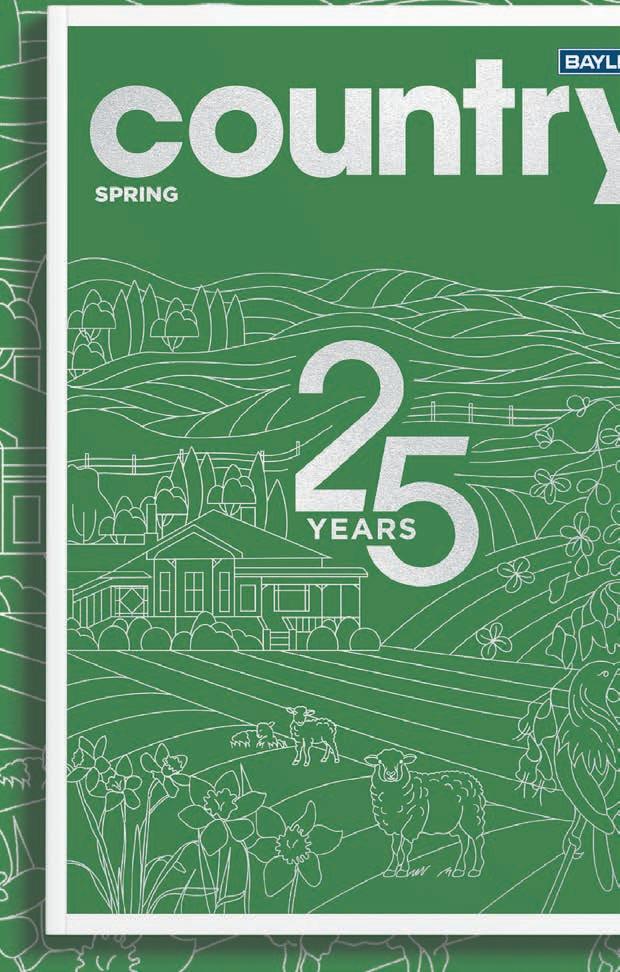
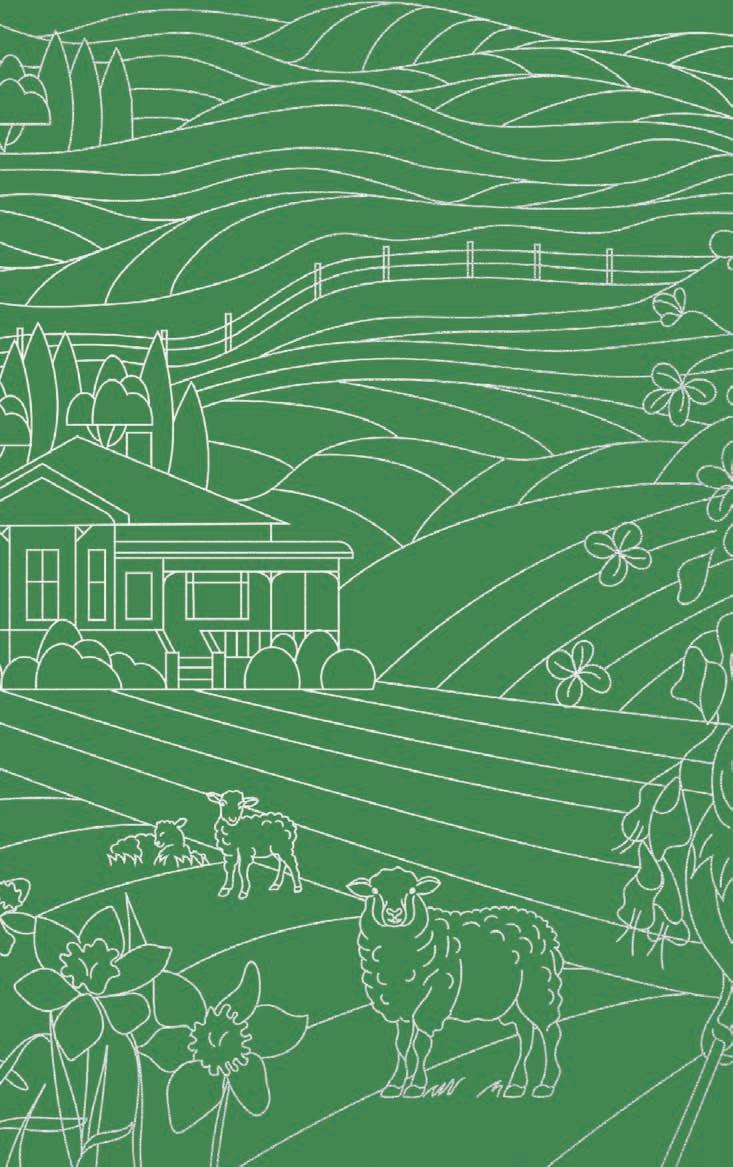
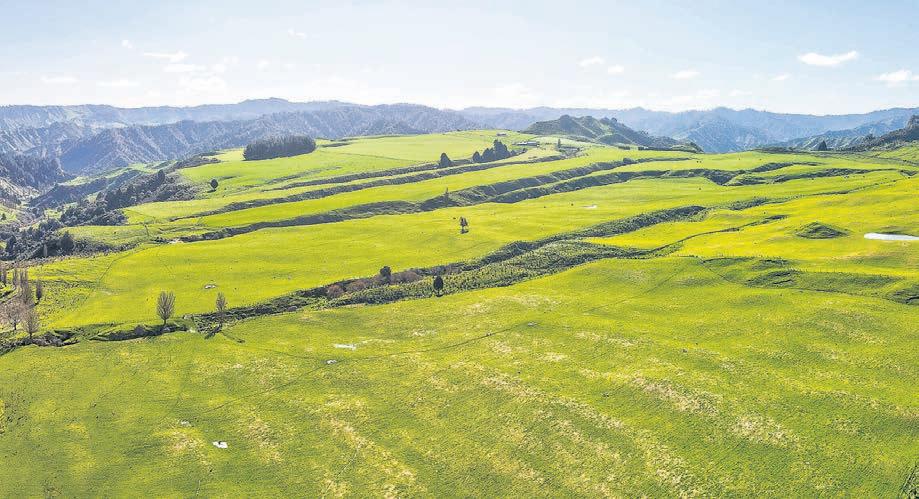
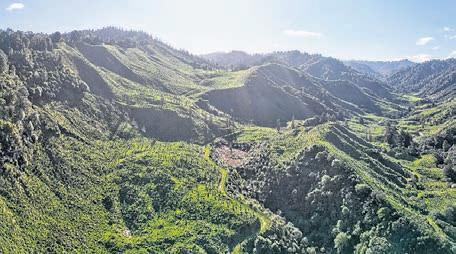
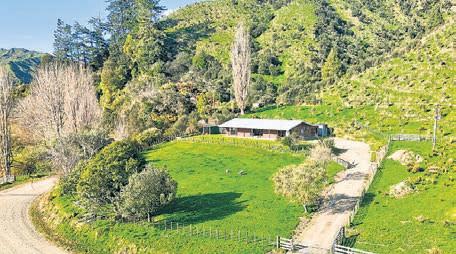
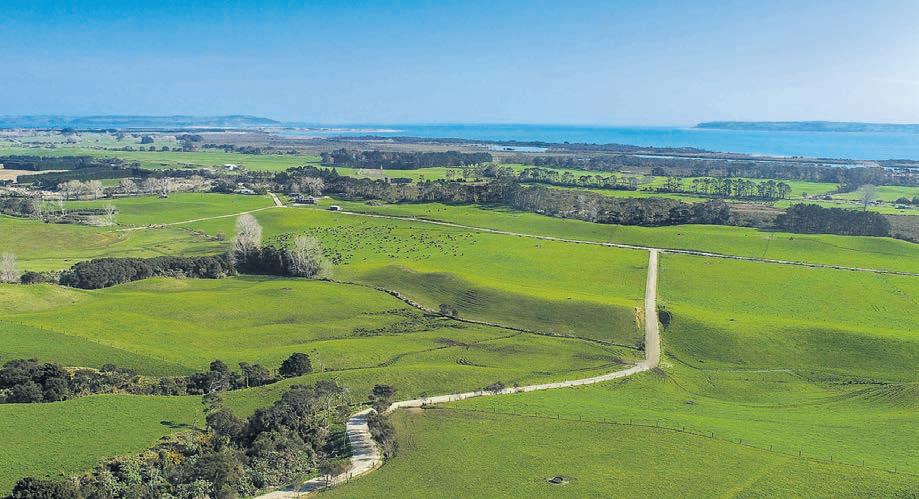
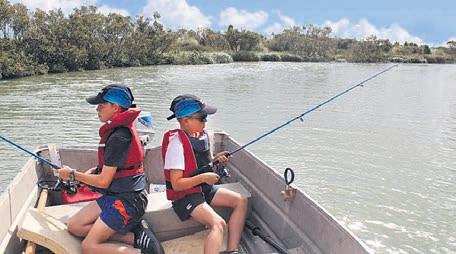

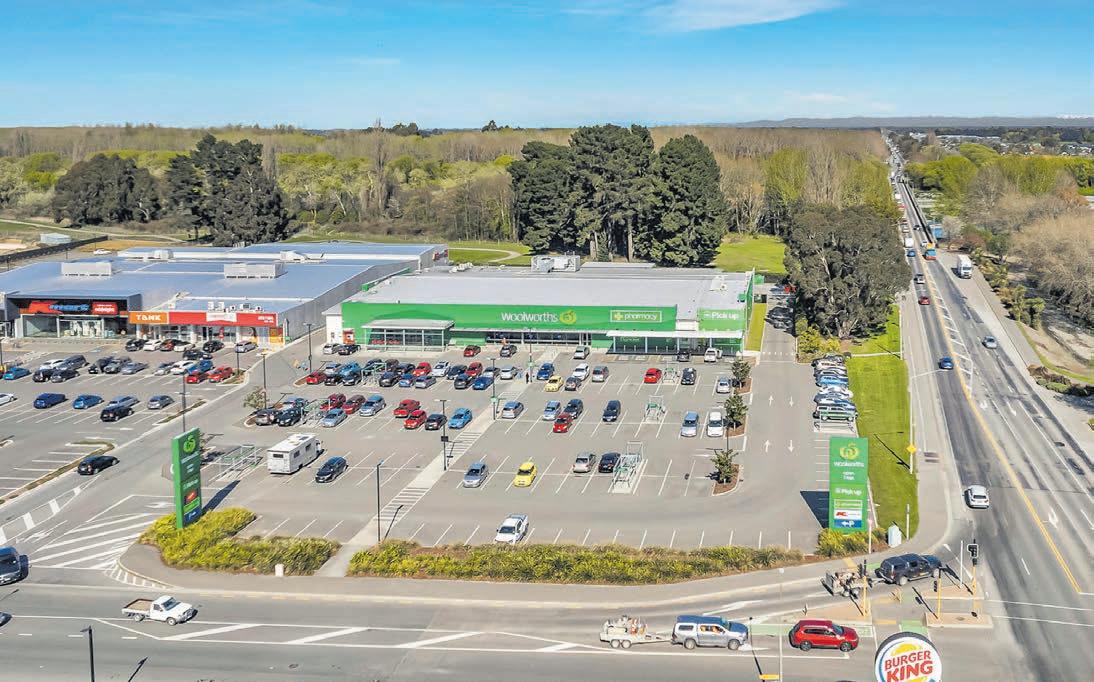
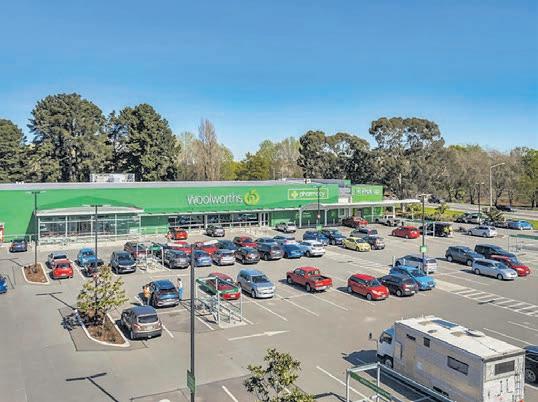



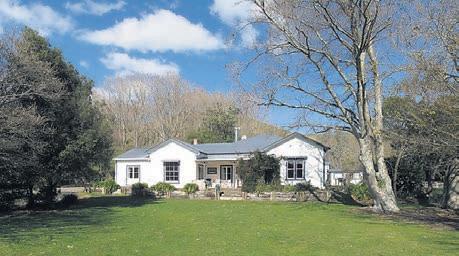



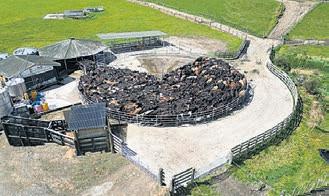
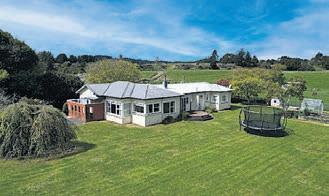
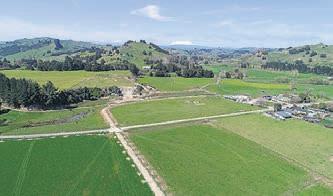
This mostly flat to rolling dairy farm on the outskirts of Taumarunui is an outstanding opportunity for sharemilkers to buy their own farm or an excellent addition to an existing farming business. The property is 100.37 ha (STS) (approx.) plus two lease blocks that make up the 125 ha (approx.) milking platform carrying 300 cows. Located just 8.5 km from Taumarunui township, on the edge of the Whanganui River, the dairy platform has an excellent layout with short walks on the easy contour. The cow shed is centrally located and is supported by a range of farm buildings. There are many opportunities ahead for this property the future for it will not disappoint.




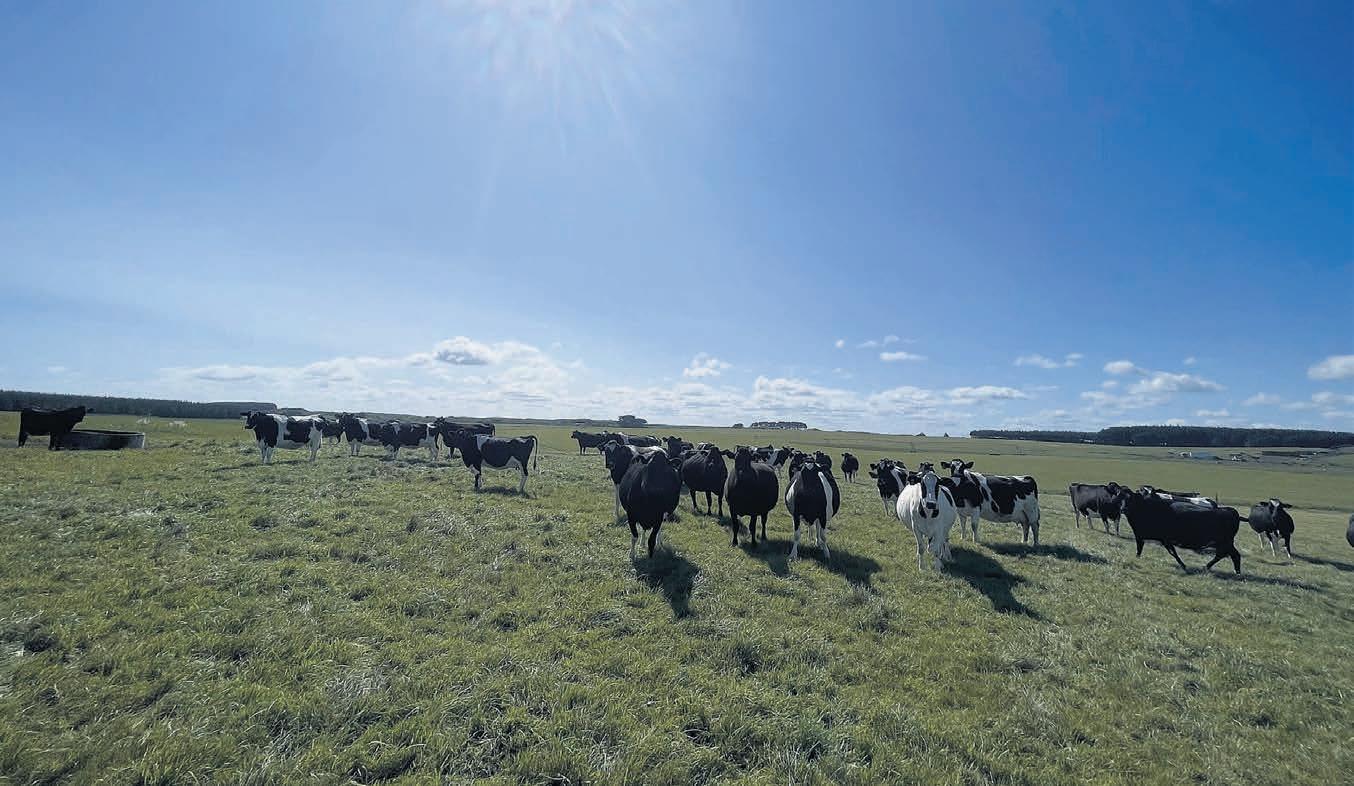
'The Plains' - 356.67 ha

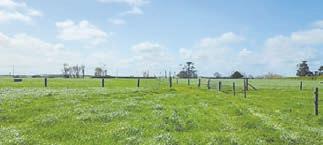



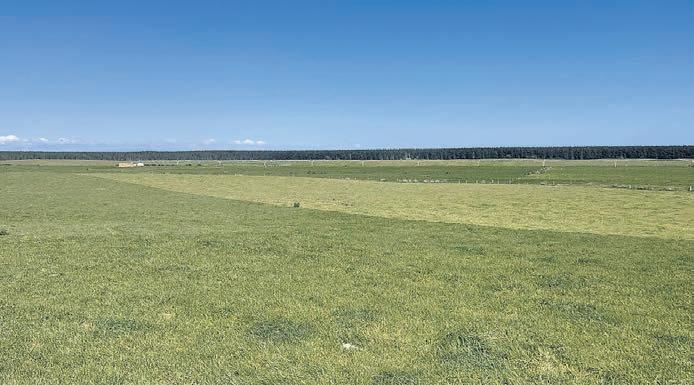
Irrigated, contoured, free-draining soils at under $24,000/ha Located off SH3 in the Rangitikei District, 'The Plains offers a diverse range of potential land uses. The free draining soils are complemented by approximately 290 ha (81%) of the farm under center pivot irrigation. These soils, combined with the warm coastal climate, create the perfect environment for year-round production, with the pivoted area providing security for summer production. In the immediate area, land uses include intensive horticulture cropping livestock finishing dairy support, and breeding. Annual pasture production has been measured at up to 16,000 kg/dm/ha. The productive capabilities of the property will only be limited by your farming policy. Improvements on the property include new internal 2-3 wire fencing, an excellent central race system, independent stock water, new cattle yards, utility sheds, and a three bedroom dwelling plus support buildings. 3 For Sale Buyers $8,500,000+ View Wed 16 Oct 11.00 - 11.30am Web pb.co.nz/FR193053
Ted Shannon M 021 833 536 E ted.shannon@pb.co.nz
Stuart Sutherland M 027 452 1155 E stuarts@pb.co.nz
Blair Cottrill M 027 354 5419 E blair@pb.co.nz


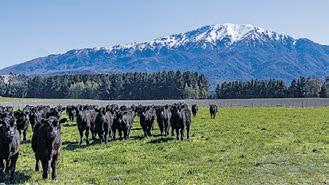

The sale of 'Rutland', held in the vendor's family since 1962, presents an exciting strategic acquisition or standalone farm purchase opportunity. This attractive Mid Canterbury foothills farming unit is situated in what is considered a reliable climatic zone close to Mt Somers, in a historically tightly held farming area. This quality and versatile 194 ha farm has a history of dairy support, sheep breeding, and livestock finishing. Rolling contour and flats, plus paddock subdivision with lane access allow for efficient stock movement. The property boasts a good level of overall infrastructure, featuring a three stand woolshed with covered yards, steel cattle yards and storage.

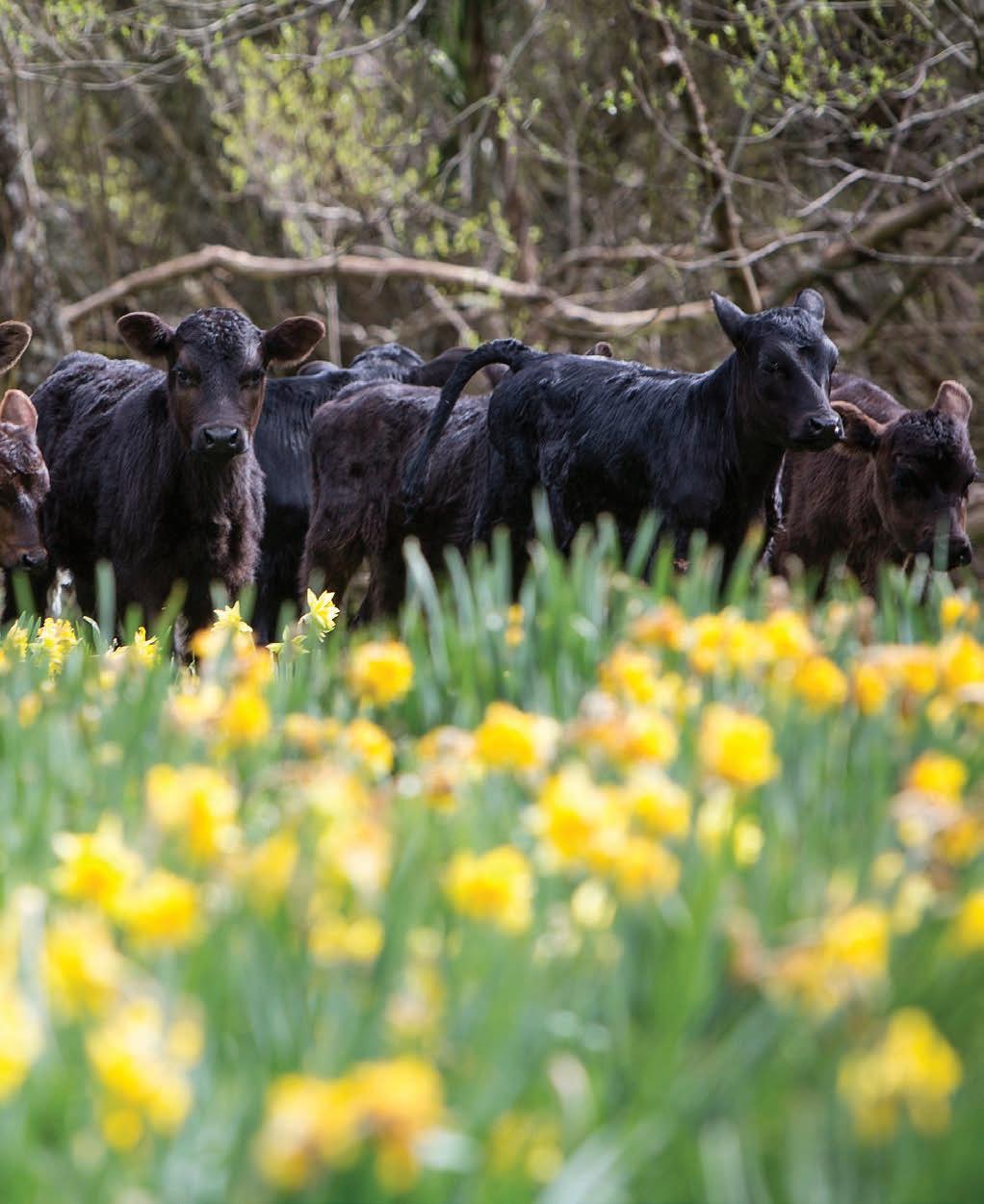

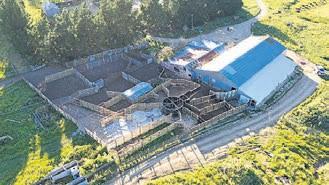


producing approximately 6.5 tonnes of velvet. Extensively sub divided into approximately 180 paddocks with excellent deer facilities and three homes. Can also be run as a dairy support farm with all the environment requirements met. Some of the special features of this property are excellent soil reliable rainfall, excellent sub division and shelter, very good deer handling facilities. A farm that has been much admired is now available to be purchased.

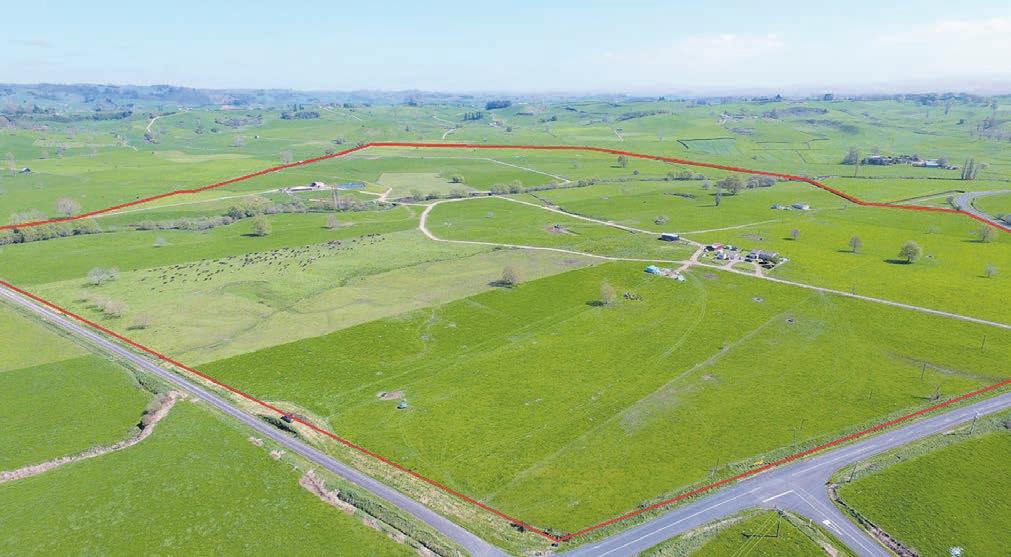

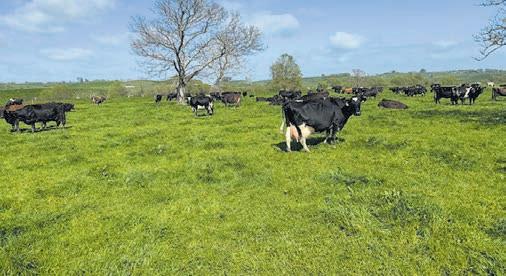
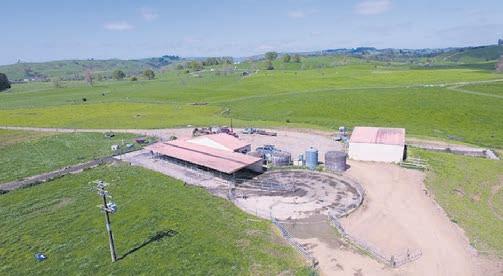


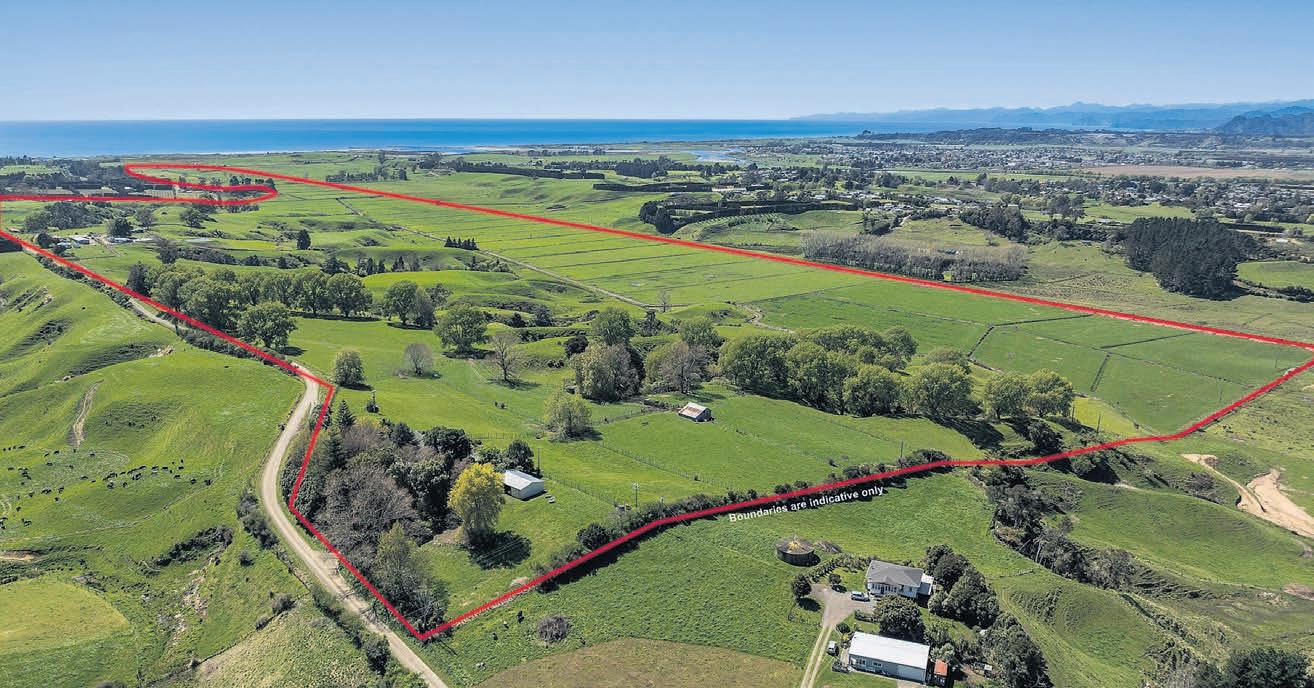
Significant Opportunity Awaits Going Concern Dairy
A 169 hectare, Fonterra supply, dairy unit with a historic best production of 149,222kg MS, peak milking 485–495 cows and a three-year average of 145,389kg MS. (2017-19)
• Milking platform of 145ha effective area (more or less) or potential to develop 25ha elevated plateau horticulture land
• 40 bail rotary dairy shed with 550 cow round yard
• Three bedroom homestead plus sleepout
Three bedroom home and a second two bedroom home
Full complement of dairy support buildings
500 LIC recorded dairy cows plus young stock
A significant opportunity awaits the astute buyer here at Dickinson Road, with the recognised diversity within the property, this property will appeal if you want to develop and invest in multiple income streams or a property to add to your dairy investment/horticulture portfolio. Call Phil now for more information and make a time to view.
pggwre.co.nz/WHK40056
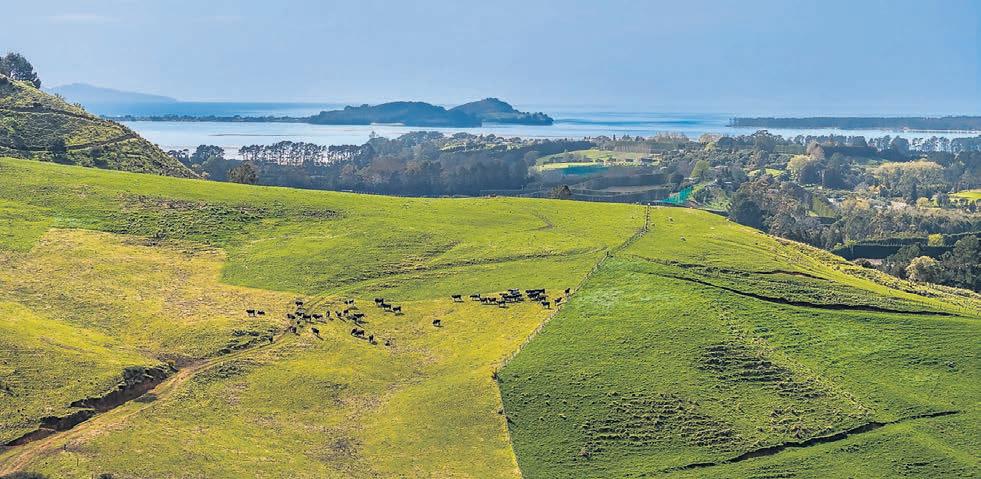
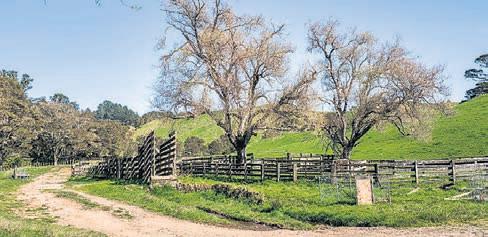
KATIKATI, BOP 35 Canon Road
Hikurangi Ranch - Exciting Options
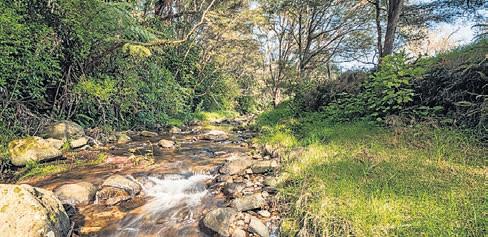
166.828ha big views and low altitude 24ha of ideal hay plateaus or develop into horticulture at around
70 MASL. 80ha of clean, rolling, grazing-well-fenced and watered for beef and stud stock. Fresh water streams tumble down impressive bush and pasture valleys. Well-fenced for cattle and sheep. Great yards and woolshed. Reticulated water to almost every paddock.
This farm has scale. It offers future diversity with an enviable Bay of Plenty location. Bring your house plans. Give your family the opportunity to live the perfect rural life.



4 2 3
TENDER Plus GST (if any) (Unless Sold By Private Treaty) Closes 4.00pm, Thursday 28 November
VIEW 12.00-1.00pm, Tuesday 22 & 29 October, 5 & 12 November
E pgoldsmith@pggwrightson.co.nz

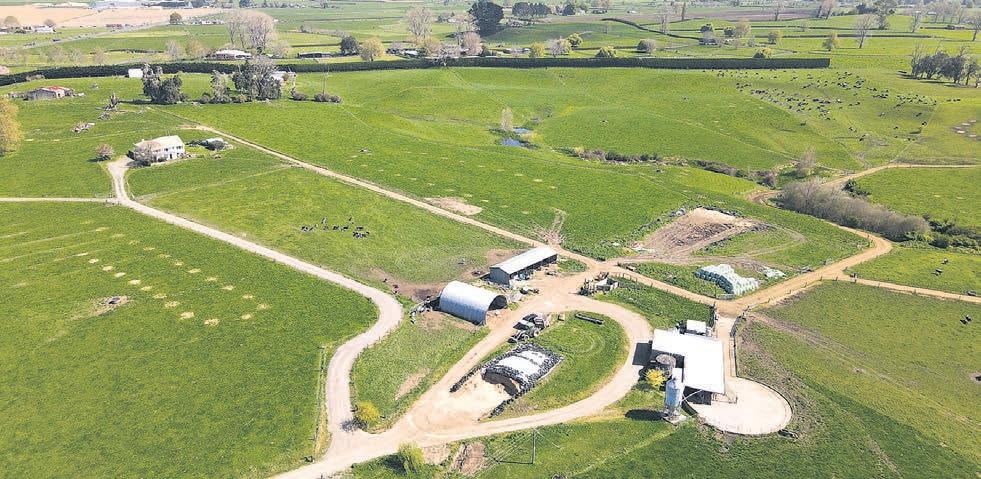
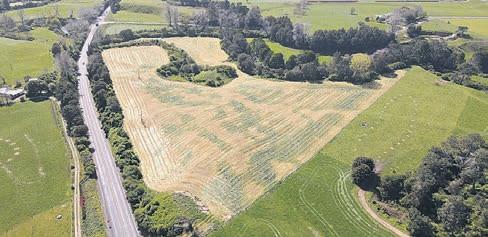
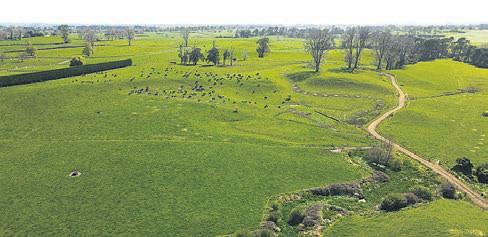
MATAMATA, WAIKATO 4548A SHWY 29
Entry-Level Farming Opportunity
This property has come to the market after being farmed by the same family just one year short of 100 years. This 70 hectare (more or less) property is currently run as a 220 cow dairy farm. There is also an eight hectare lease block which is added to the dairy platform. The 220 cows are milked through a 20 ASHB shed with in-shed feeders. Other buildings include a six-bay implement shed and four-bay calf shed with two other hay barns. There is a three bedroom home on the property. The contour is predominantly flat to easy with a small balance in steeper sidlings.







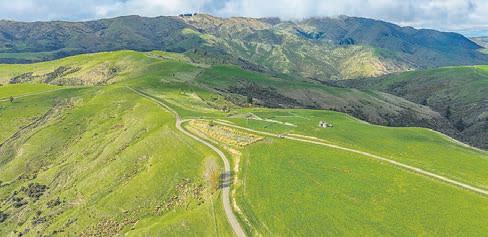
WAIAU, CANTERBURY
Large Scale Sheep & Beef, Plus Forestry
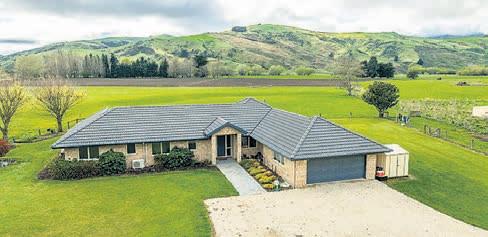
DEADLINE PRIVATE TREATY
Cheddar Valley Station is an impressive large-scale sheep and cattle station, comprising 2,336.678ha, located near the Waiau township in the highly regarded Amuri District. The station boasts a diverse landscape Currently operating as a sheep and cattle breeding and finishing property, it features a mix of permanent pasture, native grasses, and feed crops. The property boasts an impressive amount of quality infrastructure There is an expansive brick five bedroom homestead, and a second home with four bedrooms. The sale of Cheddar Valley Station provides an exciting opportunity.
pggwre.co.nz/RAN40004
Plus GST (if any) (Unless Sold Prior) Closes 2.00pm Wednesday 6 November
Peter Crean
M 027 434 4002
E pcrean@pggwrightson.co.nz
Mark Clyne
M 027 531 2964
E mark.clyne@pggwrightson.co.nz


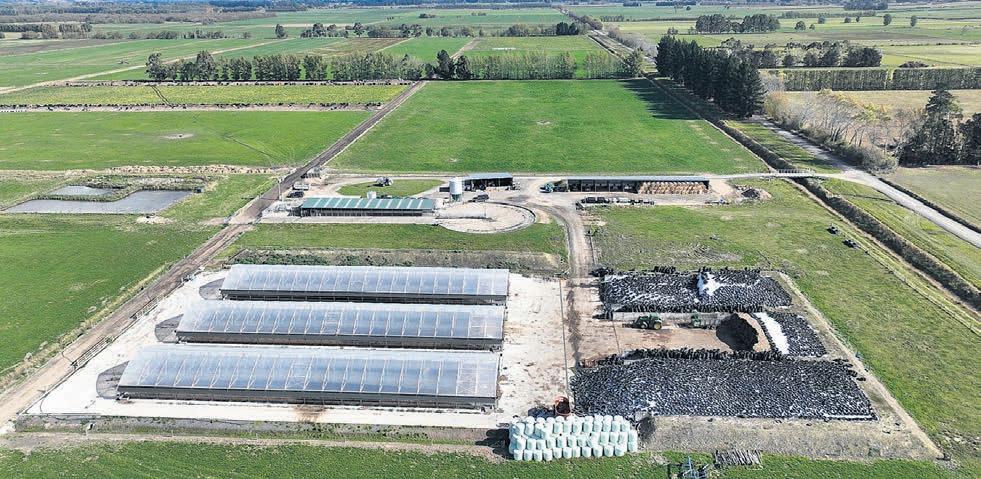
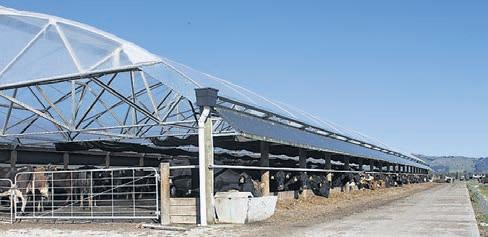

Taieri Land Opportunity
242.9342ha Taieri dairy unit offering scale, modern infrastructure, and very solid production. Supplying Fonterra, 640 cows are calved, producing 316,000kg MS in 23/24, with mixed age cows and R2 heifers wintered on-farm. Improvements include 50-aside HB shed with grain feeding and Protrack plus excellent calf rearing facilities and support buildings. Three Herd Homes and feed handling facilities provide excellent capability. The property is made up of multiple titles, providing possible purchase options.
pggwre.co.nz/DUN39370
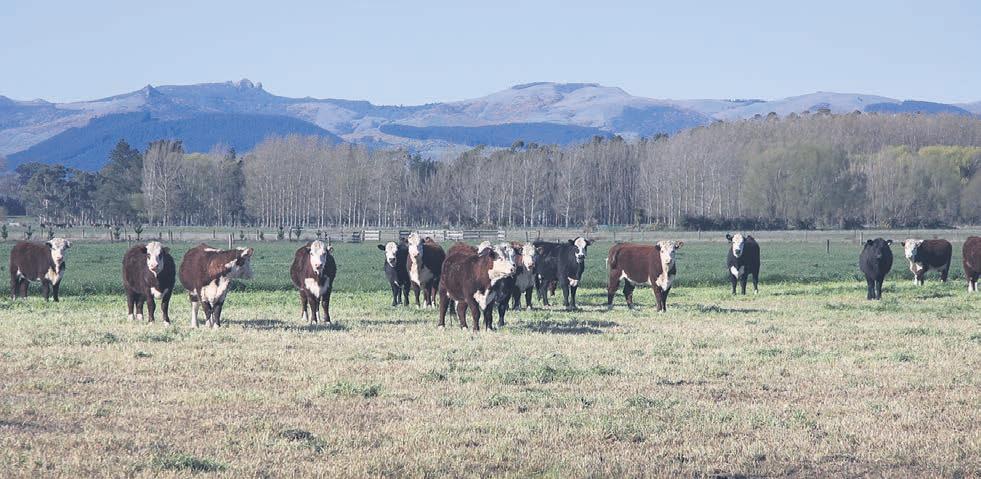

SPRINGSTON, CANTERBURY
Stop Admiring & Be Admired

'Eastlake', situated in the heart of the Selwyn district, approximately 9km to Lincoln township and 31km to Christchurch International Airport is being offered for sale by our retiring vendors. During the tenure of their ownership, Eastlake has been very faithfully and conservatively farmed and is ready for a new owner to take it to its next level. Comprising 100.1958ha subdivided into 45 paddocks currently fattening beef cattle. In the past there has been some dairy grazing and sheep breeding Eastlake has good infrastructure and a spacious modern homestead.
pggwre.co.nz/RAN40228
Bruce Hoban
bhoban@pggwrightson.co.nz M 027 588 8889

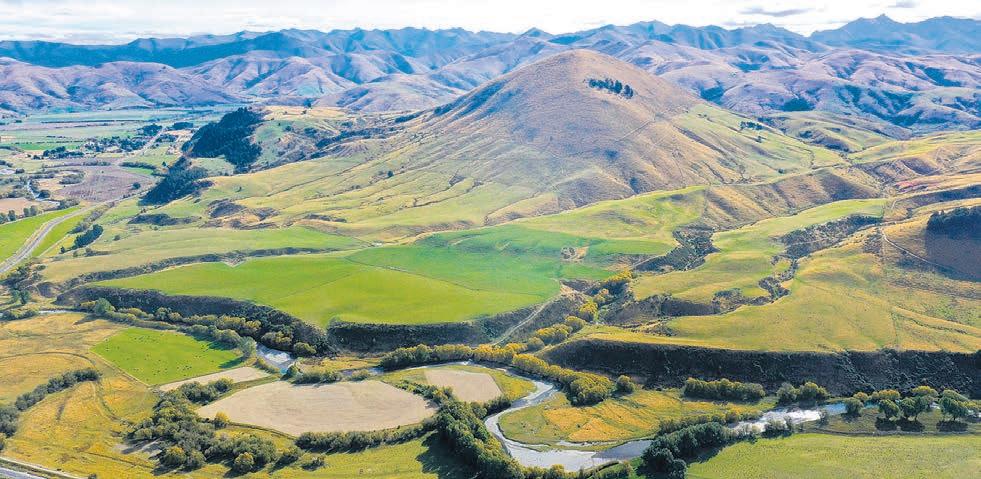
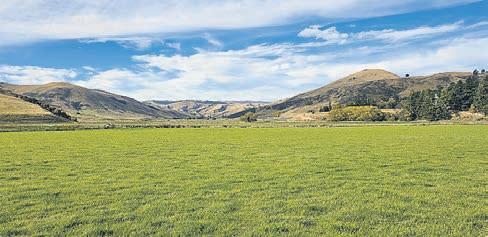
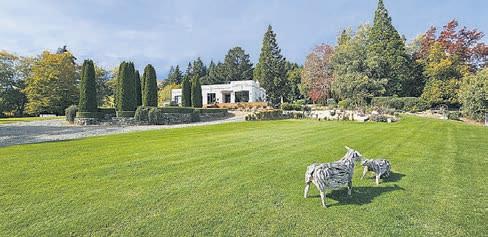
ATHOL, SOUTHLAND 62 Quoich Station Rd
Glenquoich Station


E paul urquhart@pggwrightson co.nz M 027 543 7774 Paul Urquhart pggwre.co.nz/GOR39509
A magnificent 2000ha high country sheep and beef station situated right behind the Athol township in Northern Southland, and only a short drive to Queenstown Comprising of a mix of fertile flat paddocks to native tussock hill blocks, with approximately 900 hectares cultivatable, some of this growing Lucerne. Wintering 400 dairy cows adds to the property’s diversification. A five bedroom 1940s art-deco homestead, set in an established garden setting, has been tastefully modernised in-keeping with the era, plus a comfortable second three bedroom dwelling complements the property nicely. TENDER
Plus GST (if any)
Closes 12.00pm, Friday 15 November
PGG Wrightson Real Estate, Gore
VIEW By Appointment Only
Derek Ayson
M 027 667 9601
E derek.ayson@pggwrightson.co.nz
Andrew Patterson
M 027 434 7636
E apatterson@pggwrightson.co.nz








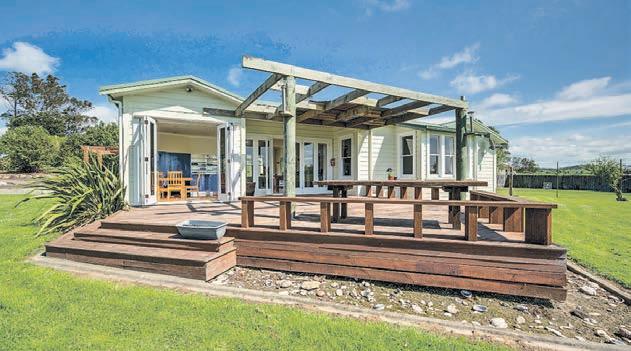
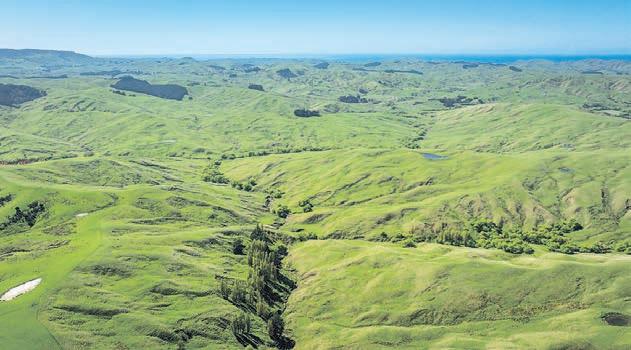
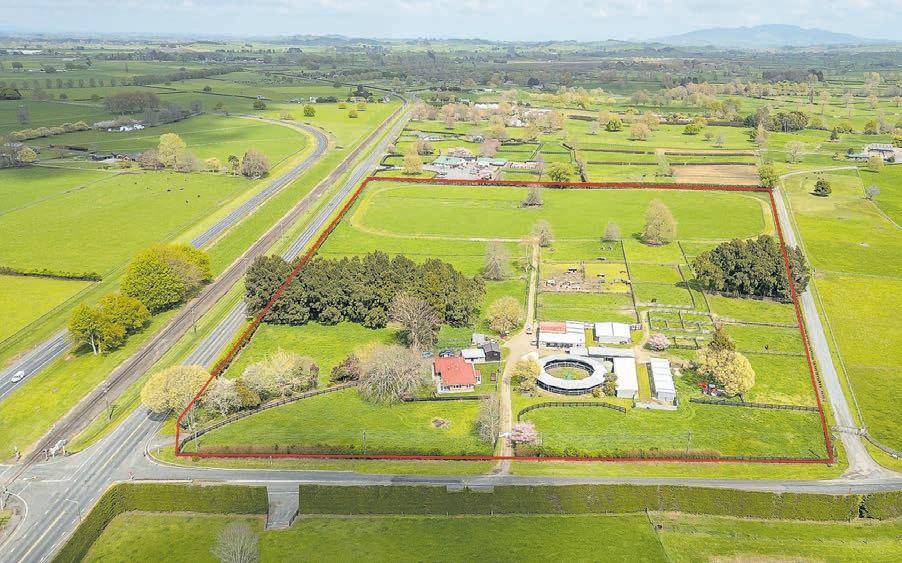




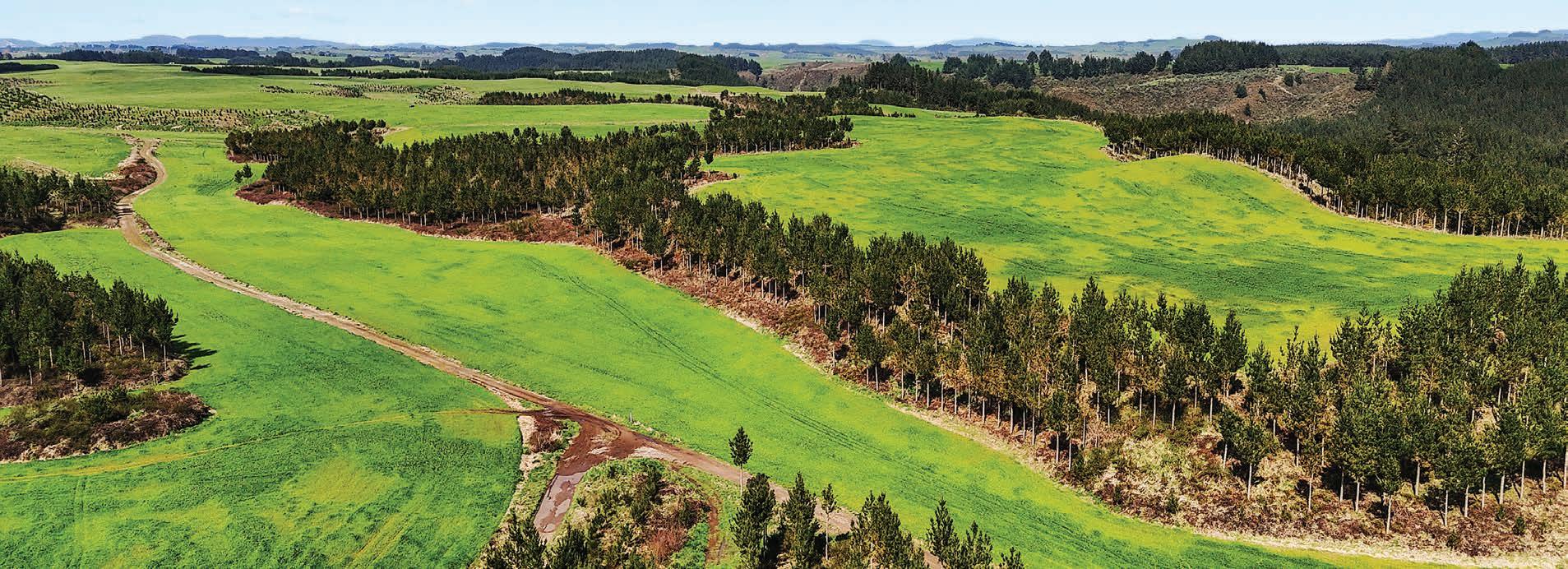
Awarua Farms – Mixed Use Farm of Scale
Superbly located only 3km from Putaruru is Awarua Farm – a mixed-use farm of scale being some 707ha. Currently run as a dairy, cropping, and forestry unit, the property boasts impressive infrastructure and favourable contours.
- 707ha well located in South Waikato
- 188ha dairy platform with feed pad producing 300,000 kgs/ms
- 155ha cropping paddocks to support all the farms silage needs - 257ha of young-mid age class production forestry
- Multiple add value options including lifestyle subdivision and solar
Take advantage of this all that this large scale holding has to offer. Call your preferred Colliers agent today!
For further information contact:
Warwick Searle on +64 21 362 778 or warwick.searle@colliers.com
Clint Brereton on +64 27 897 1161 or Clint.brereton@colliers.com
George Cashmore on +64 21 0264 1362 or George.Cashmore@colliers.com
Chris Meban on +64 27 484 457 or Chris.meban@colliers.com
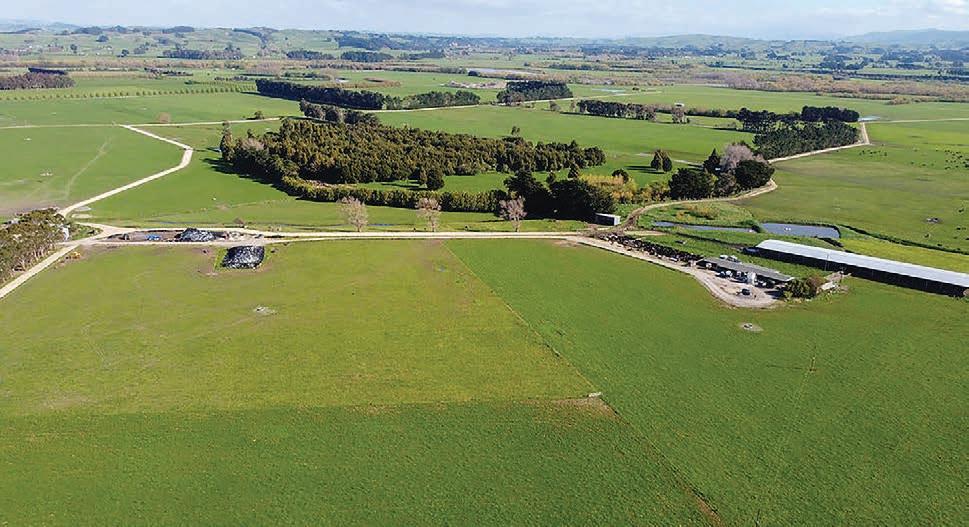
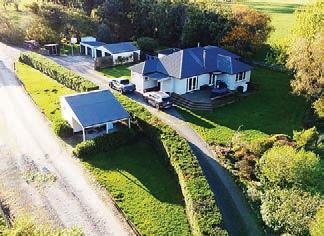


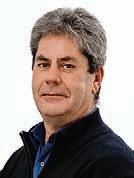

colliers.co.nz

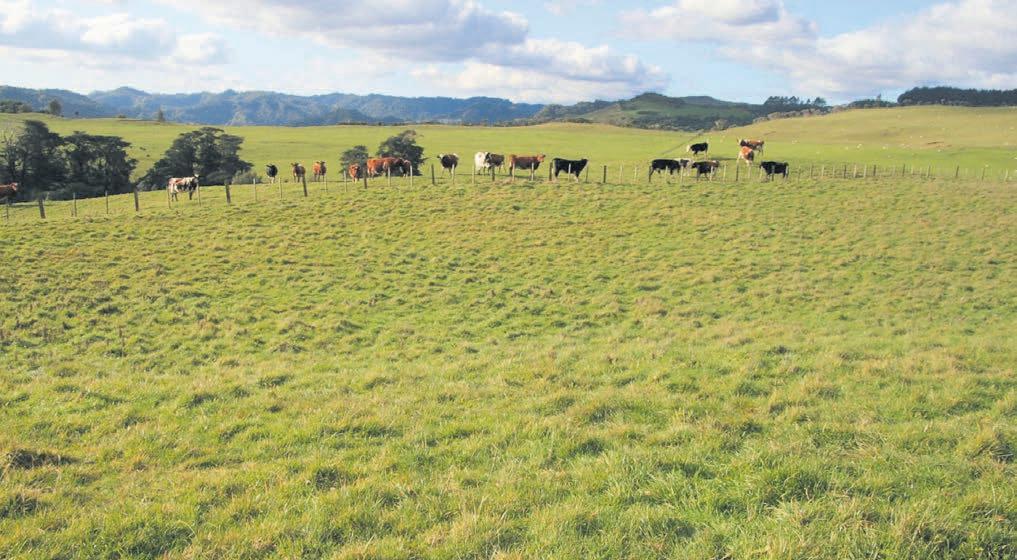

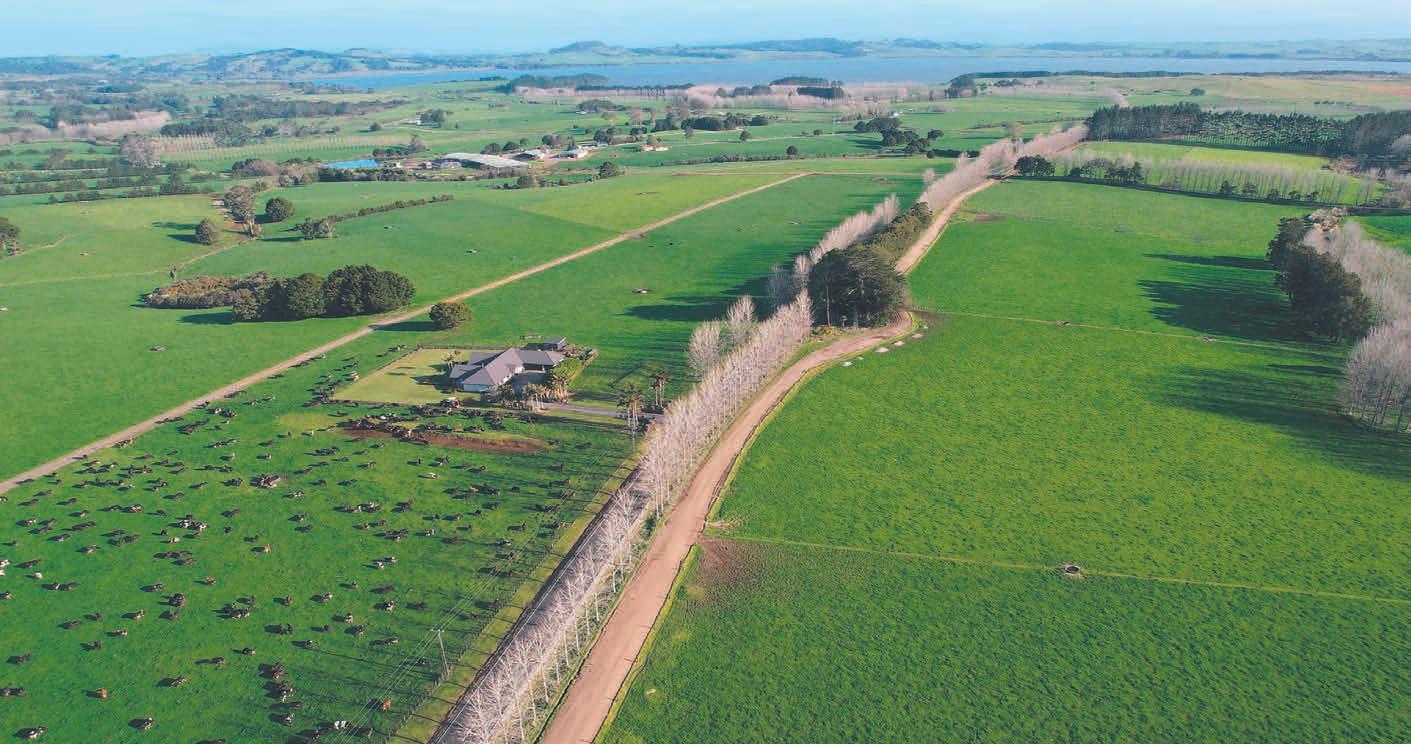



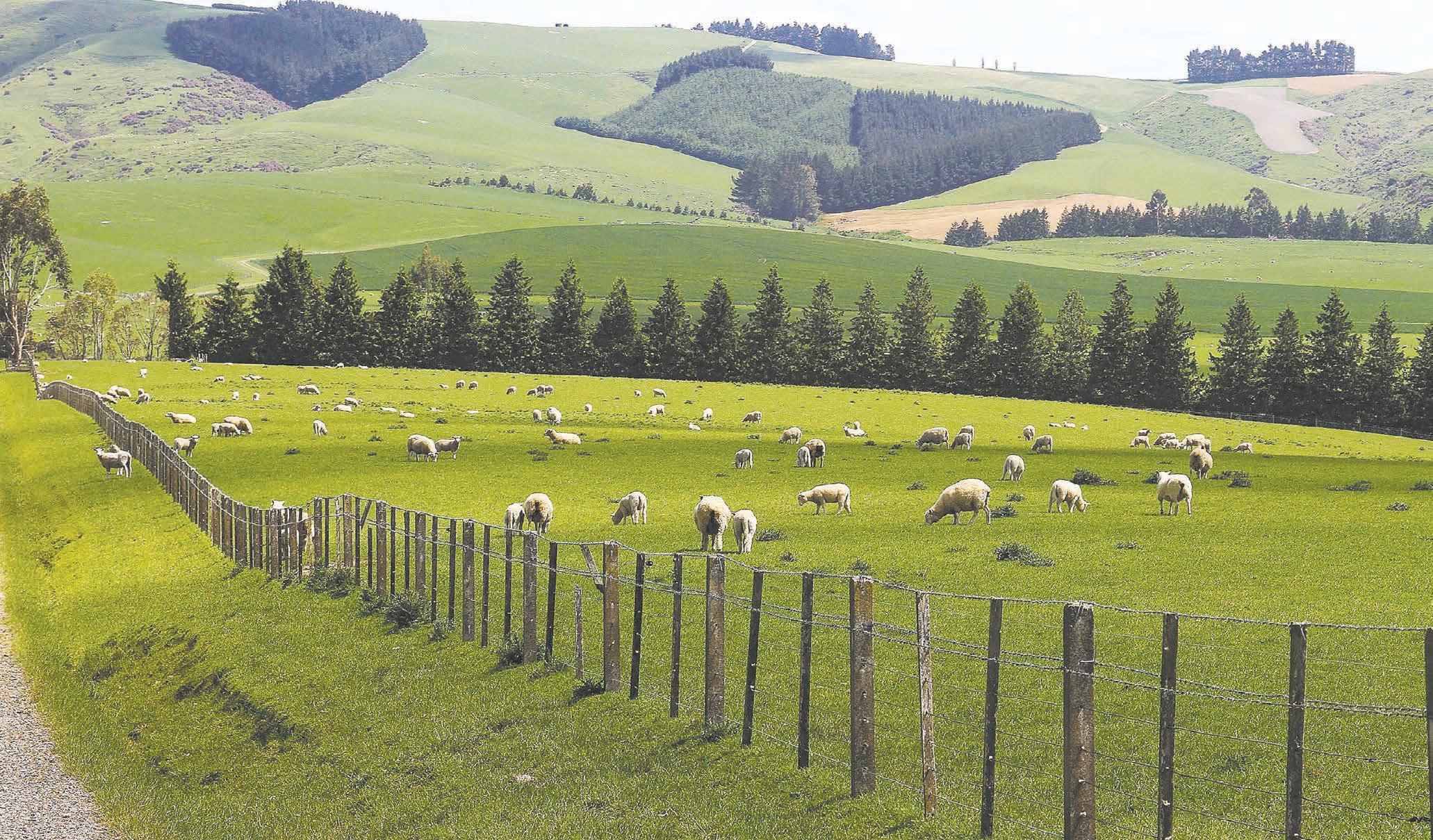






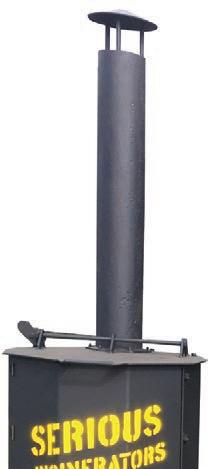

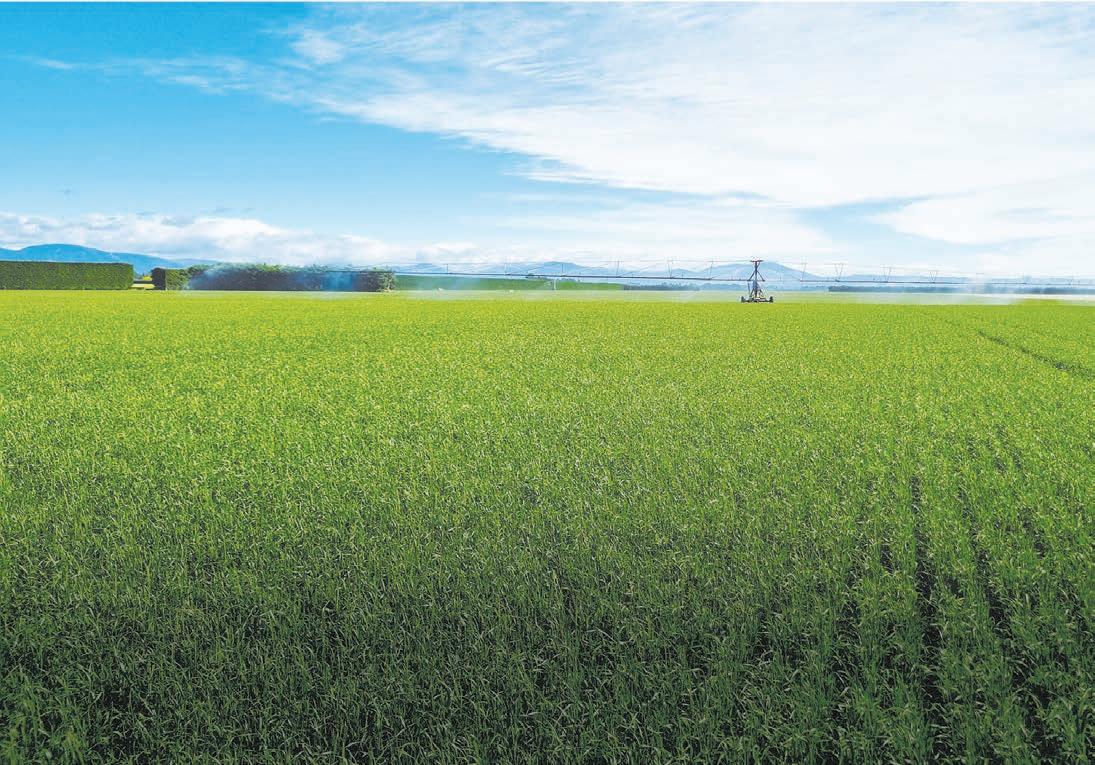
■ Ideal for shearing sheep, alpacas, goats and cow tails
■ Variable speed from 2600-3500rpm
■ Latest brushless motor technology means minimal heat build up
■ 1400gms
■




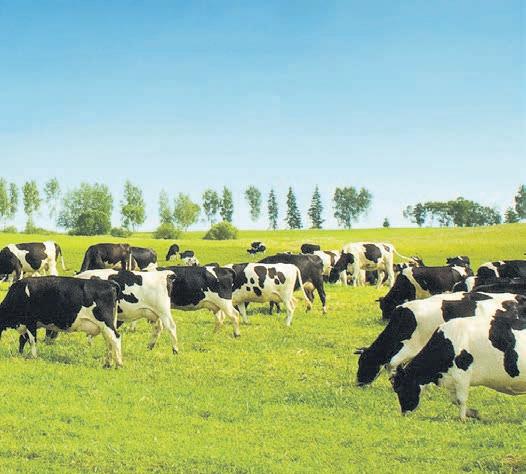





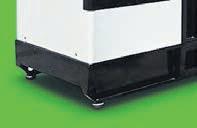



















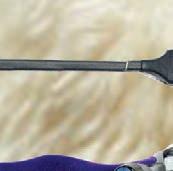


















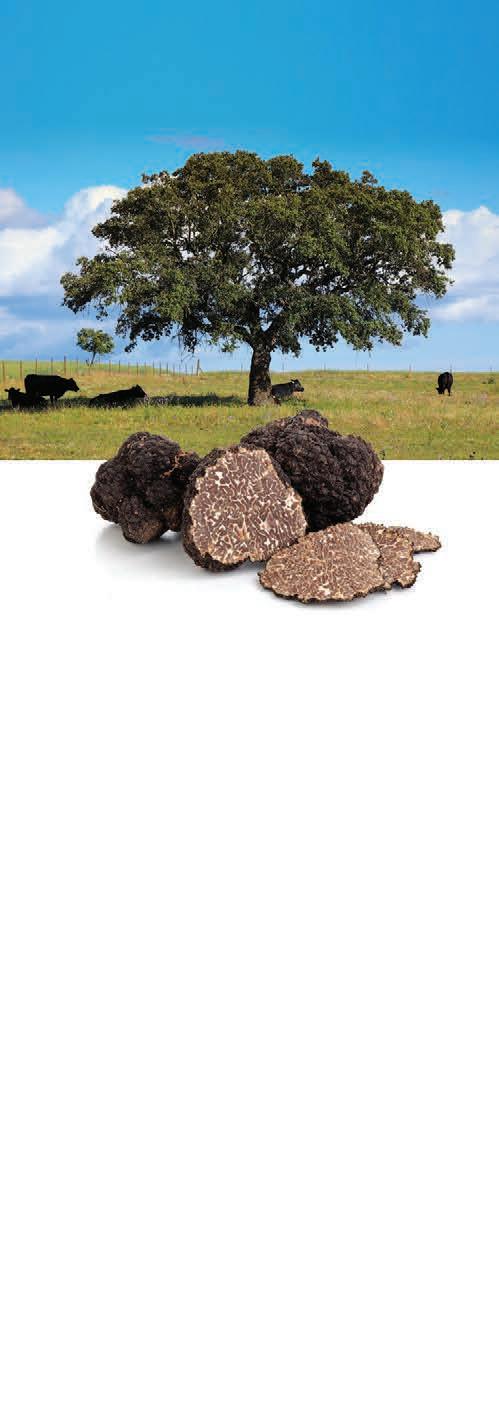

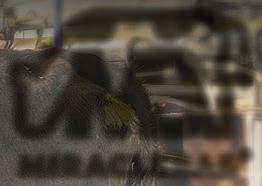

















Exciting opportunity for an experienced Business Manager to oversee all farm operations at Lochinver Station. As a key part of the Rimanui Farms Business, this role sits within the senior leadership team of the business, and the appointee will be expected to contribute to the wider farm group.
The primary functions of the Business Manager role include:
• Working with the Lochinver team to identify plans and policies that best utilise farm resources to maximise sustainable returns.
• Setting an annual business plan in conjunction with the senior management team and being accountable for the implementation of that plan.
• Ensure a robust monitoring system is in place to support management and monitor performance in accordance with the farm plan.
• Develop and maintain a strong farm sta culture and supporting sta with their development.
• Prepare a farm environment plan and managing its implementation.
• Supervising the implementation of company HSE policy and maintaining a strong HSE culture.
• Ensure that the General Manager and Board are kept properly informed of all opportunities and challenges facing the business.
As the Business Manager on Lochinver Station you’ll be a leader with the ability to develop a strong farm sta culture along with the ability to work under pressure, be profit orientated and have strong written and oral communication skills. You’ll also demonstrate:
• Experience in leading a large team in an agricultural or agribusiness setting.
• Large scale farm management and/or supervision experience.
• Strong farm management analysis and financial budgeting skills.
• Experience with leading changed in a farm setting.
• Experience in compliance such as Environment / Health and Safety / Human Resources.
• Computer literacy and competent in the use of farming computing software such as Farmax and FarmIQ.
Lochinver Station is an iconic New Zealand station located on SH5, 30 minutes from Taupo township. The property comprises 13,843ha of which approximately 9,500 ha are e ective. The farm winters some 100,000 SU, including 32,000 breeding ewes, 2,200 breeding cows and their replacements, together with an extensive dairy support business. A feature of the property is over 6,000ha of cultivatable land suitable for a wide range of farming policies.
HOW TO APPLY
Visit www.ruraldirections.co.nz/jobs to view the Job Information Form and to apply. For a confidential discussion please call the Rural Directions team on 06 871 0450. Applications will close Monday 28th of October. APPLY NOW!




Did you hear about the Mexican train killer? He had locomotives.
Did you hear about the guy who fell into the upholstery machine? It’s ok, he’s fully recovered. Did you hear the one about Hellen Keller? Neither did she.
Did you hear that the price of duck feathers has risen? So now, even down is up.
Did you hear about the cartoonist found dead at his home? Details are sketchy.
Did you hear about the hungry clock. It went back four seconds.
Did you hear about the girl who quit her job at the doughnut factory? She was fed up with the hole business.
Did you hear about the restaurant on the moon? Great food, no atmosphere.
Did you hear the joke they don’t tell to morons? When they say no, just say “That’s kinda what I figured.”
GRAZING AVAILABLE, SUITABLE for dairy heifers and calves. Raglan area. Phone 027 772 2838.
FOR ONLY $3.30 + gst per word you can book a word only ad in Farmers Weekly Classifieds. Phone 0800 85 25 80.
NZ KELP. FRESH, wild ocean harvested giant kelp. The world’s richest source of natural iodine. Dried and milled for use in agriculture and horticulture. Growth promotant / stock health food. As seen on Country Calendar. Orders to: 03 322 6115 or info@nzkelp.co.nz



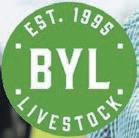
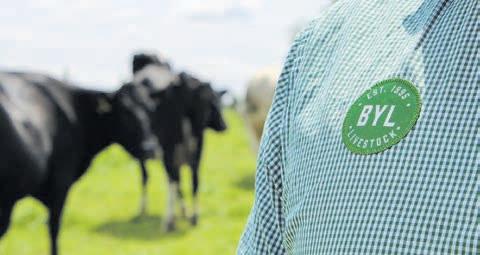
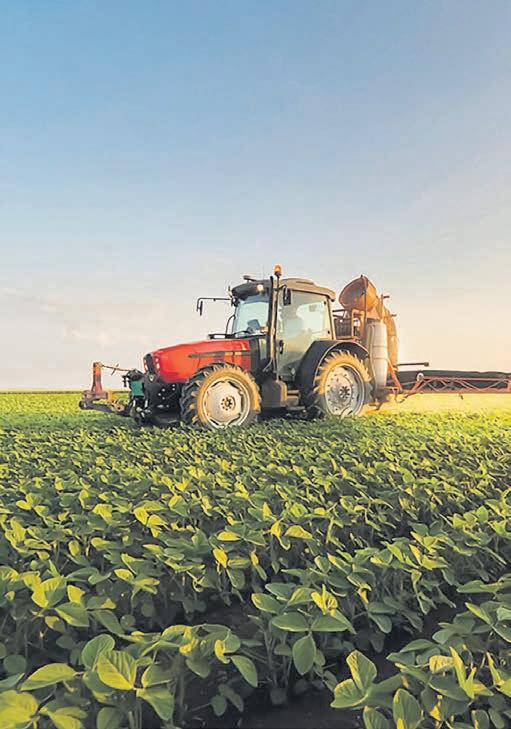
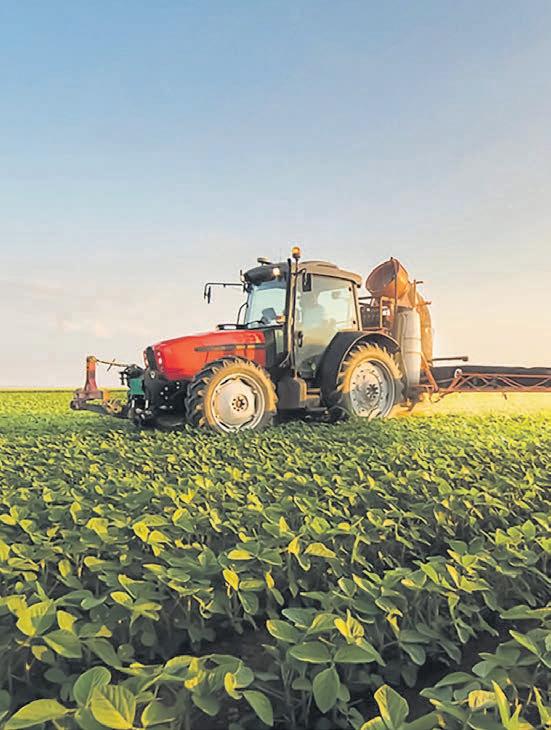
25 80.


BOOK AN AD. For only $3.30 + gst per word you can book a word only ad in Farmers Weekly Classifieds section. Phone 0800 85 25 80 to book in or email wordads@agrihq.co.nz


RAMS FOR SALE
LEASE LAND WANTED LOOKING FOR LEASE land for grazing in the Waikato and BOP. Any size considered from small to large. References available. Phone 022 430 4760. WILTSHIRES-ARVIDSON. Self shearing sheep. No1 for Facial Eczema. David 027 2771 556.
LEASEABULL.CO.NZ Pedigree Herefords, Jersey’s pure breed Angus, pure breed Hereford’s and X breed Friesian. leaseabull.co.nz or phone 027 292 4889.
SHEEP CRUTCHING AND SHEARING TRAILERS. Triple and single trailers. Operating in Canterbury and Southland areas for over 30 years. Call Shaun Adams 021 204 1274.
WHAT’S SITTING IN your barn? Ford, Ferguson, Hitachi, Komatsu, JD. Be it an excavator, loader or tractor, wherever it is in NZ. Don’t let it rust. We may trade in and return you a brand new bucket for your digger or cash for your pocket. Email admin@loaderparts.co.nz or phone Colin 0274 426 936.






TUESDAY
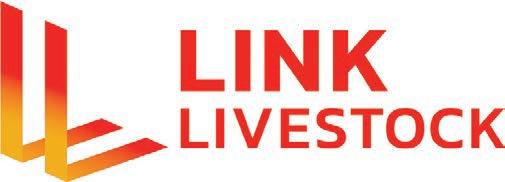
SERVICES INCLUDING:
• Buying and
• Forward Sale & Purchase
• Livestock Valuations
• On-Farm & Online Auctions

• 5 star rating
• Bred on challenging hill country
• Robust functional sheep that survive
• Structurally sound
• Selecting for parasite tolerance and less dags
• No ewes worm drenched, dipped or vaccinated
KEITH ABBOTT, RAGLAN 027 463 9859 | www.waiteikaromneys.co.nz @waiteikaromneys







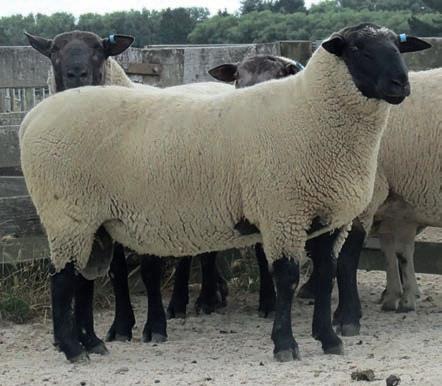




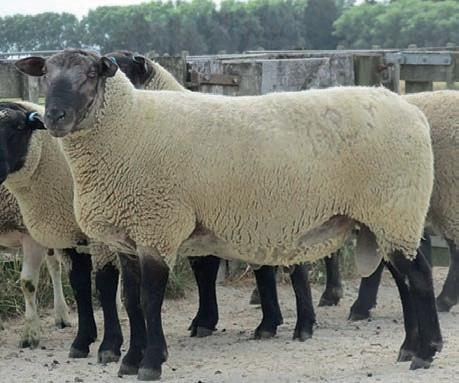

• Over 150 clients purchased and leased Paki-iti rams last year
• Breeding for constitution, longevity, structural soundness and then performance
• Bred for Growth, Meat Yield, Survival and Meat Quality Traits (Tenderness and Intramuscular fat)
• 14 years of wintering ram hoggets on steep hill country

• Over 500 Suffolk and Suftex rams sold and leased every year


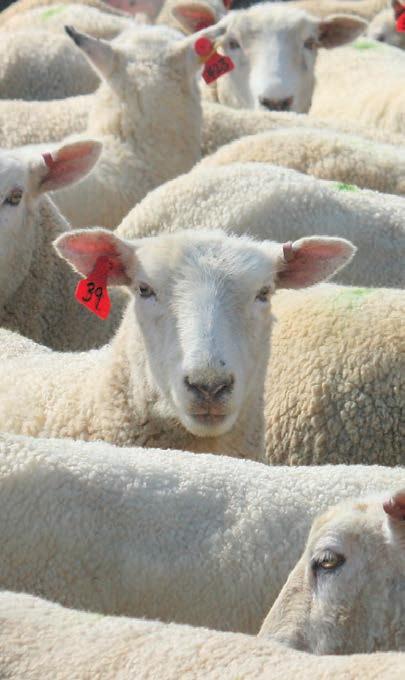
275 Hd Comprising:
25 W/F 2-year Steers, 480kg – Kaitaia
25 W/F 2-year Steers, 450kg – Kaitaia
18 W/F 2-year Steers, 425kg – Kaitaia
20 CharoX 1-year Steers, 335kg – Morrinsville
25 W/F 1-year Steers, 328kg – Morrinsville
22 W/F 1-year Steers, 285kg – Kaitaia
14 W/F 1-year Steers, 285kg – Morrinsville
20 Red W/F 1-year Steers, 342kg – Morrinsville
15 Ang, FrsnX 1-year Steers, 347kg – Morrinsville
8 B/Blue 1-year Steers, 329kg – Morrinsville
6 Ang, FrsnX 1-year Steers, 285kg – Kaitaia
10 W/F 1-year Steers, 250kg – Kaitaia
38 Frsn Ylg Bulls 315kg – Kaitaia
37 Frsn Ylg Bulls 315kg – Kaitaia
Conditions of sale
All Cattle have been weighed and the estimated weights calculated out to sale day
Delivery by 1st November at the latest
Photos and videos and any further information available on mylivestock.co.nz/events
Contact:
Bill Sweeney 027 451 5310 – Morrinsville
Don McKenzie 021 754 174 – Kaitaia
South Island’s spring sales play host to northerners with full wallets and an eye for cheaper buys.

Sara Hilhorst MARKETS Livestock
THIS year will go down as one of the strongest for the store cattle market. The beef market continues to have a positive feel, and even though some schedules have buttoned off, the overall market has a sense of resilience and optimism.
The strength seen in store cattle returns began as early as autumn. While it is not new for autumnborn cattle to have a premium attached to them, autumn-born weaner attendance at store cattle sales around the country was strong as many sought to preempt a spring cattle shortage.
This season, autumn-born weaners averaged $40-$70 stronger than last year at an average of around $560. As expected, this strength has flowed into the spring cattle market, and spring cattle sales in the South Island are now underway.
While there is always the odd North Island buyer looking to purchase at South Island sales, this year action from the north has been more intense.
Prices in the North Island have been at their strongest for

the current point in the season.
This has seen more North Island farmers hunting for cheaper stock from the South Island.
However, although South Island prices have been softer than the North Island, the increased demand has narrowed the pricing gap. Out-of-region buyers may not have secured quite the same bargain that they may have achieved in previous years.
The South Island hasn’t been immune to the cattle shortages, and drought-related sales earlier in the year mean tallies are down, particularly for good quality beef and beef-cross types.
Opawa Downs held its onfarm sale last week in South Canterbury. This was one of the first larger yarding of traditional cattle seen in months and it was a success.
The stud has been building a reputation for its genetics and progeny. The yarding consisted of just over 500 head, with all of the yearling cattle being Opawa Downs bred.
Weights were slightly back on last year due to the more difficult season but the smaller tally of high-quality Simmental and Hereford-cross deserved the support it had attracted.
This included interest from

To listen search ideas that grow. This Rural Leaders podcast is made in association with ideas

Proudly sponsored by
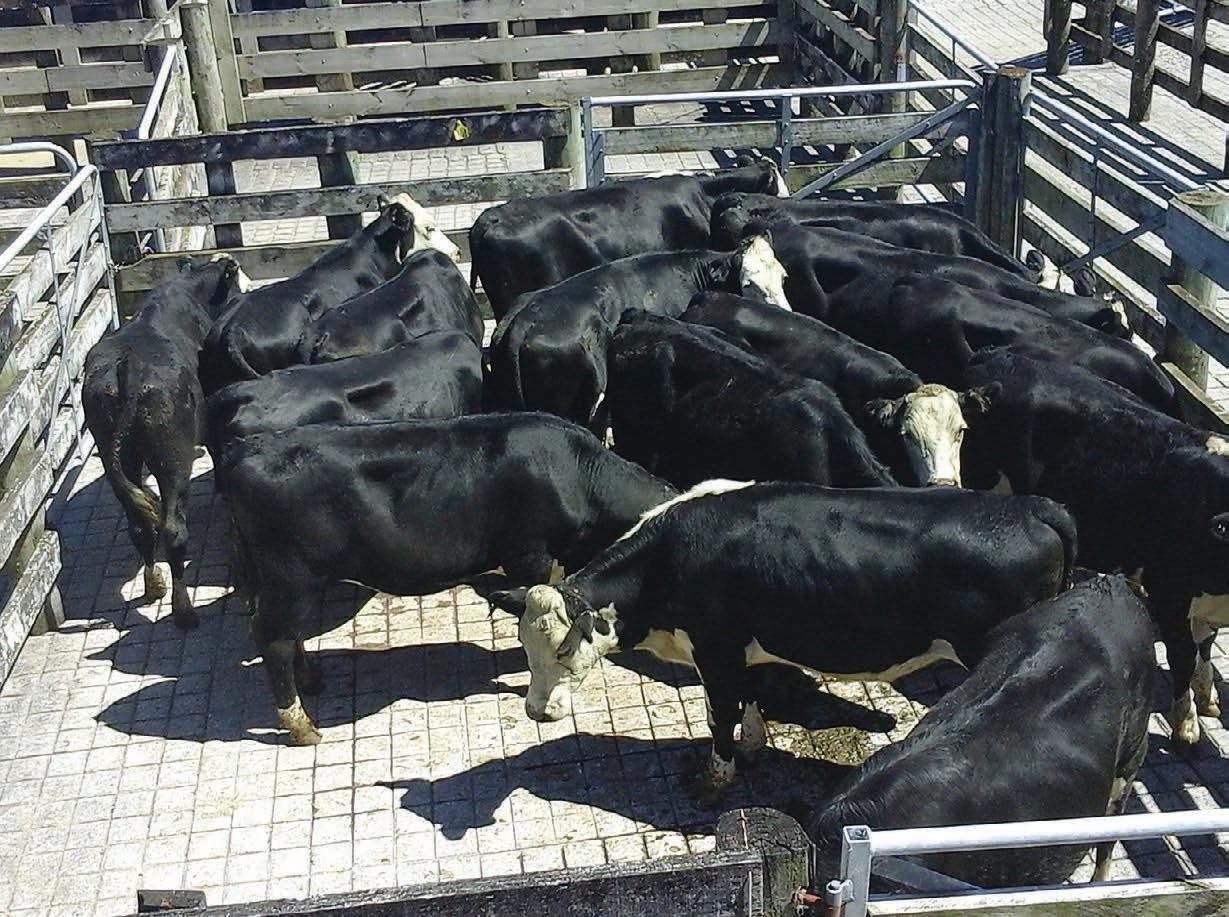
South Island prices have been softer than North Island, but increased demand has narrowed the gap.
the North Island. Regular local buyers also returned to the mix but couldn’t always keep up with the larger budgets from the North Island and some did miss out.
On average, prices were up $100-150 last year across the board. Simmental-cross steers were typically in the $4/kg range, which equated to $1150-$1510 at 283-380kg.
Simmental-Hereford yearling bulls were covered by $1550-

$1860 at 320-417kg. Herefordcross bulls were about $100 behind at 355-435kg. Simmental heifers held their own at $935$1260 at 246-357kg. Results were more mixed at Cheviot and Lorneville. At Lorneville, Hereford-Friesian heifers made $2.99-$3.12/kg at 240-389kg. The Hereford-Friesian steers, 236-329kg, achieved $3.35$3.62/kg. Yearling Friesian bulls, 260kg fetched $905.
At Cheviot’s spring fair, just over 900 yearlings passed through the yards. Angus-Hereford heifers, 218-290kg, fetched $3.38-$3.69/ kg. The steers were more varied due to a wider range of weights. At 199-366kg, they were covered by $3.47-$4.15/kg, with the latter paid on the lighter types. But on average, they returned $3.89/kg at
an average weight of 275kg.
While South Island vendors have strongly welcomed these prices, there is a concern that prices are inflating solely due to supply issues rather than an increase in export demand. The store values recently seen have been a reflection of the strong slaughter market. But processor margins are getting thin and the higher NZD to USD means that schedules have begun to soften.
However, those purchasing yearling cattle are looking beyond this and foresee strong schedules next year.
With the cattle shortage becoming more prominent and unlikely to show any sudden improvement, buyers are willing to pay top dollar, particularly for good quality, well-bred cattle.
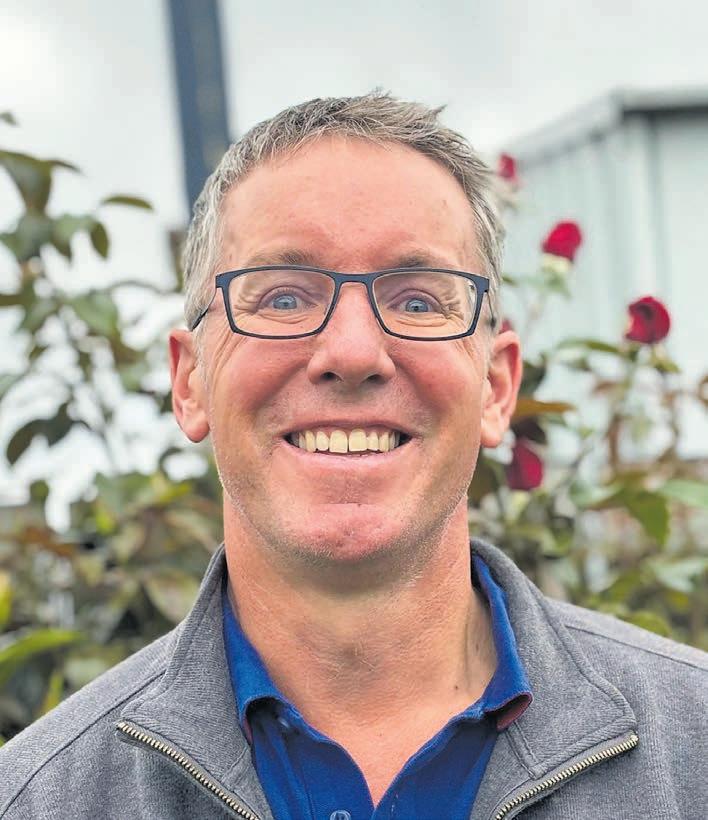

These weekly saleyard results are collated by the AgriHQ LivestockEye team. Cattle weights and prices are averages and sheep prices are ranges. For more detailed results and analysis subscribe to your selection of LivestockEye reports. Scan the QR code or visit www.agrihq.co.nz/livestock-reports

SUPPLY AND DEMAND: Advertised numbers of store hoggets were low at Temuka for Monday, October 7 so fewer buyers made the trip to the yards. It was a shame as the quality was good but the market eased across the board. This pen of mixed-sex hoggets were the top draft from the Chatham Islands and fetched $175.
Frankton | October 9 | 590 cattle
Aut-born weaner dairy-beef heifers, 135kg
dairy-beef steers, 595kg
heifers,












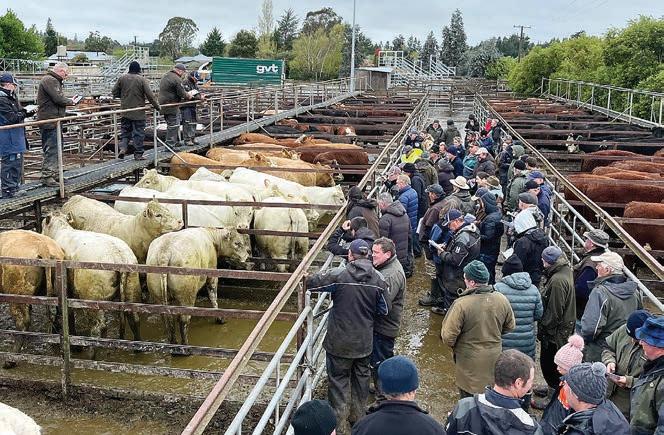
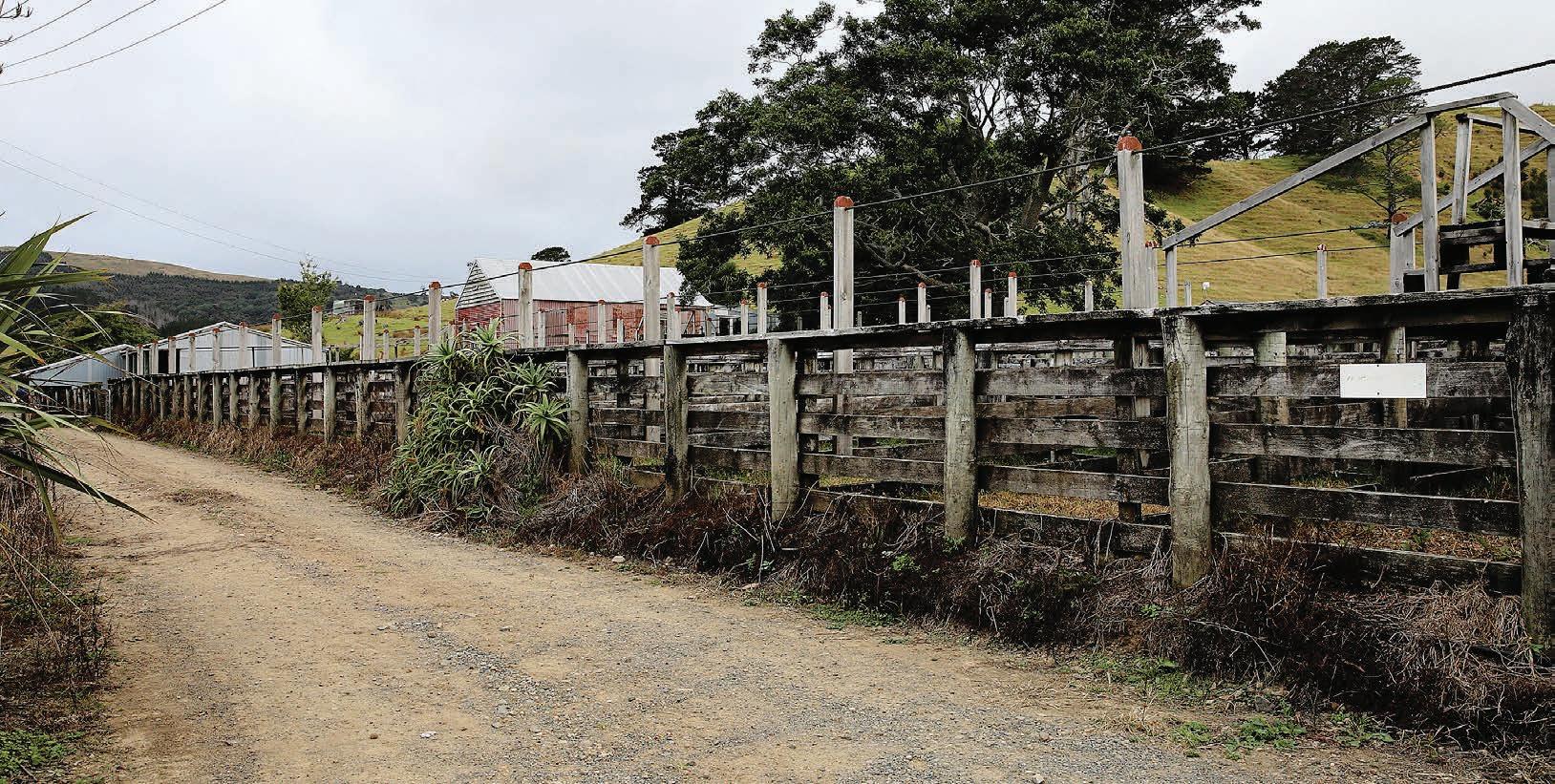

THE National Institute of Water and Atmospheric Research, or NIWA, is to take over MetService following a year-long official review into why New Zealand is the only country on earth to have two tax-funded commercial weather agencies competing with each other.
Just four years after NIWA denied in a Select Committee that it was even competing with MetService, the government has announced that MetService will be acquired by NIWA following the independent review, launched by the Labour Government on its way out.
It’s worth noting that the National Government before that, under John Key, was the first to launch a review into the messy NIWA/MetService set-up – only to have Labour shelve that review for the entire time it was in office. In Labour’s final month in power it suddenly launched this new review into New Zealand’s forecasting “double up”.
It’s been a long, 10-plus year journey to get here, but the government has definitely done the right thing by merging our two weather agencies into one. The noise and clutter from two “authorities” has been a distraction – and has meant Kiwis have issues with historical data and record keeping and a big lack of trust when it comes to who to rely on.
It’s incredible how this all played out.
A little over a decade ago NIWA – a Crown Research Institute –without cabinet approval, decided to invest its Crown resources into competing head-on with MetService. A form of government agency cannibalism.
Over the decade NIWA’s “secret” project to absorb MetService became more obvious. Despite NIWA management telling a Select Committee it was not competing with MetService and it was just “a little overlap”, NIWA directly took the Department of Conservation off MetService just months after that Select Committee. No repercussions for misleading –only rewards.
Over the past two years many
reporters, including Paul Gorman at The Listener and Shayne Currie, editor-at-large at the NZ Herald, both tried – and failed – to get a basic response from NIWA management about why they were setting up NIWA Weather, why they were attacking another government agency, how it was being paid for, and why NIWA was no longer paying dividends each year back to the Crown.
NIWA said for commercial reasons it would not reply!
The Herald complained to the Ombudsman about a year ago –and still has not had a reply.
I’ve lost a lot of faith in government over the years due to the gaping lack of transparency and the huge power unnamed officials have behind the scenes. The fact that the Treasury tried to force MetService to move in with NIWA before this report was even out (something MetService strongly pushed back on at the time) shows it was always going to happen.
So now what? Well the Commerce Commission will certainly need to be involved as this merger does create a commercial monopoly. (The
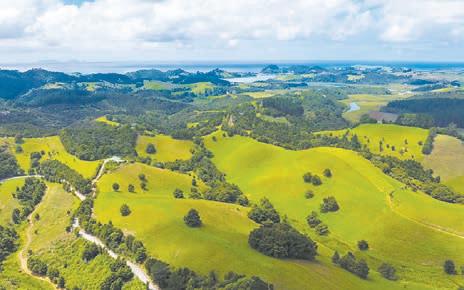

commission has denied in the past there was one as NIWA and MetService, despite both being owned by the government, were independently managed.)
As a result of the bigger empire NIWA now inherits, it is so big it
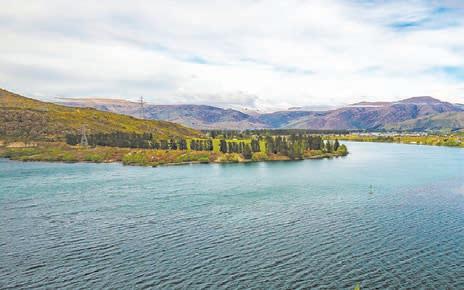
needs regulating – an adult in the room is needed.
The past decade has revealed to me just how much power some in the NZ government have – and it’s certainly not with any of the politicians or prime ministers.

Targeted return of 9%p a paid
